The ultimate Northern Italy and Switzerland itinerary
Some links in this post are affiliate links, which means I earn a small commission if you book through them, at no extra cost to you. This support helps keep this site running, the suitcase wheels spinning, and lets me keep writing ultra-detailed travel guides that are free for you to use to plan your next adventure.
Planning a trip to Northern Italy and Switzerland? Whether you’re looking for a whirlwind city break getaway or an in-depth adventure of the region’s highlights, here is the ultimate Northern Italy Switzerland itinerary.
One of the questions I get asked most often as a full-time traveller is what my favourite countries are, and while I can’t decide on a number 1 favourite (impossible!), Italy and Switzerland are always in the top five.
I love both of these so much that I just keep coming back to them. I’ve been fortunate enough to visit Italy eight times and Switzerland five times, and I’m already planning my next trip for later this year! I generally spend three months in Europe each year and it would be a crime for me to set foot on the continent without a taste of authentic Italian cuisine and some downtime in the Swiss Alps.
With my personal experience of navigating the train network, determining what places are worth a visit and sticking to an acceptable budget, I’ve put together this super detailed Northern Italy & Switzerland itinerary to help you plan your trip.
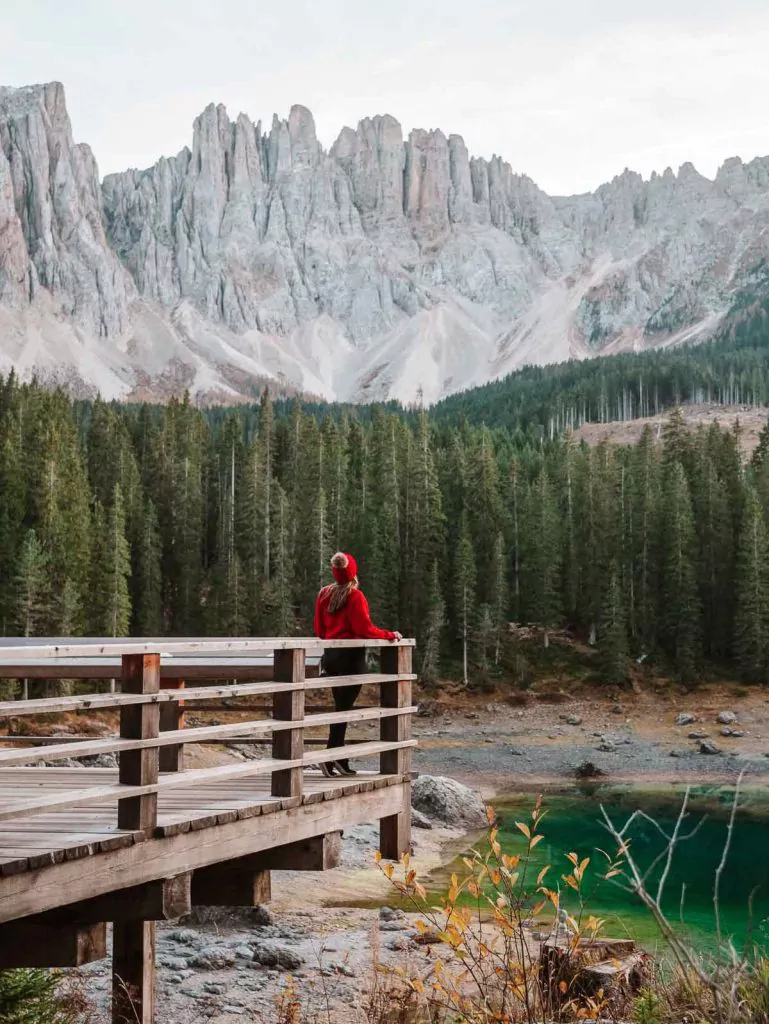
If you’re reading this then I’m going to guess that you either can’t choose exactly where to go in Northern Italy and Switzerland, or you’re not sure of the most cost-effective and time-efficient ways to get from A to B, or you’re not sure what to see and do in the spots on your list so far. Or maybe it’s all three!
Don’t stress, in this blog post I’ve included the highlights of the Northern Italy and Switzerland region, suggested routes for different lengths (10 days, 2 weeks and 3 weeks), listed my top recommendations for hotels, restaurants and activities, and I’ve also answered a bunch of FAQs to help you make the most of your time and your money on the road.
This is a long one, but I promise you’ll come out of it with a much better plan of your perfect Northern Italy and Switzerland itinerary. Andiamo!
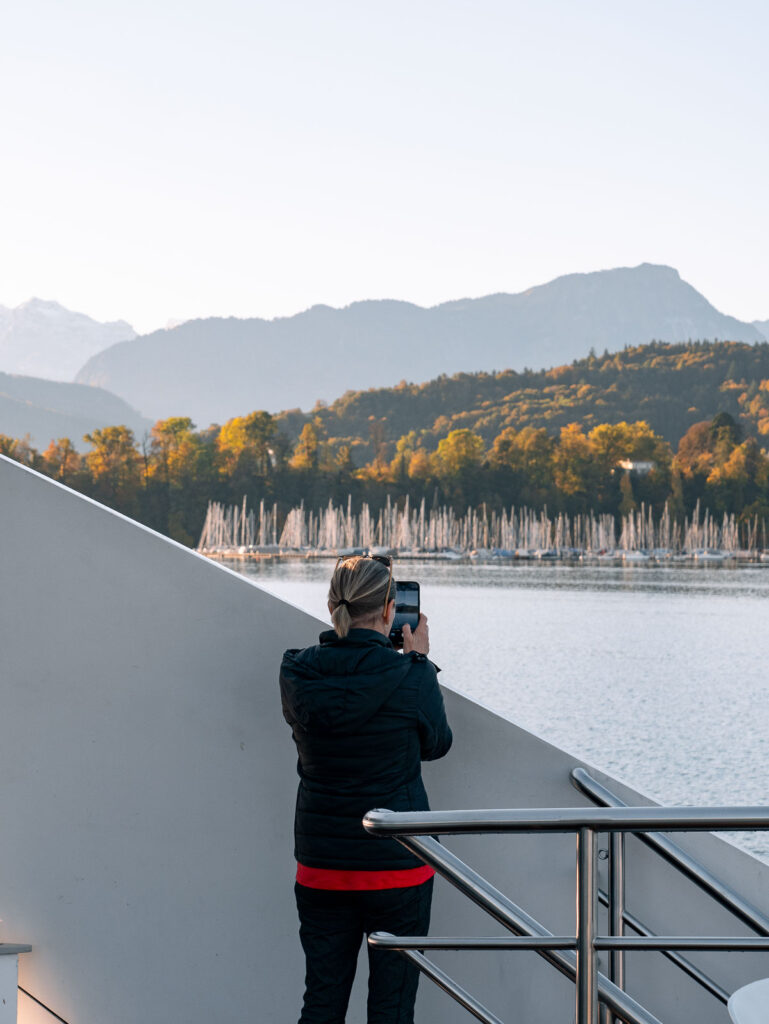
Overview of the best Northern Italy and Switzerland itineraries
There are loads of potential stops in Northern Italy and Switzerland to fill your itinerary, and the perfect ones for you will really depend on your travel preferences.
If you just want a quick overview of the region’s highlights and some suggested routes then I’ve got those for you below, but you can scroll down for more info on each destination, how to get between them, things to do and more detailed itineraries at the end of this post.
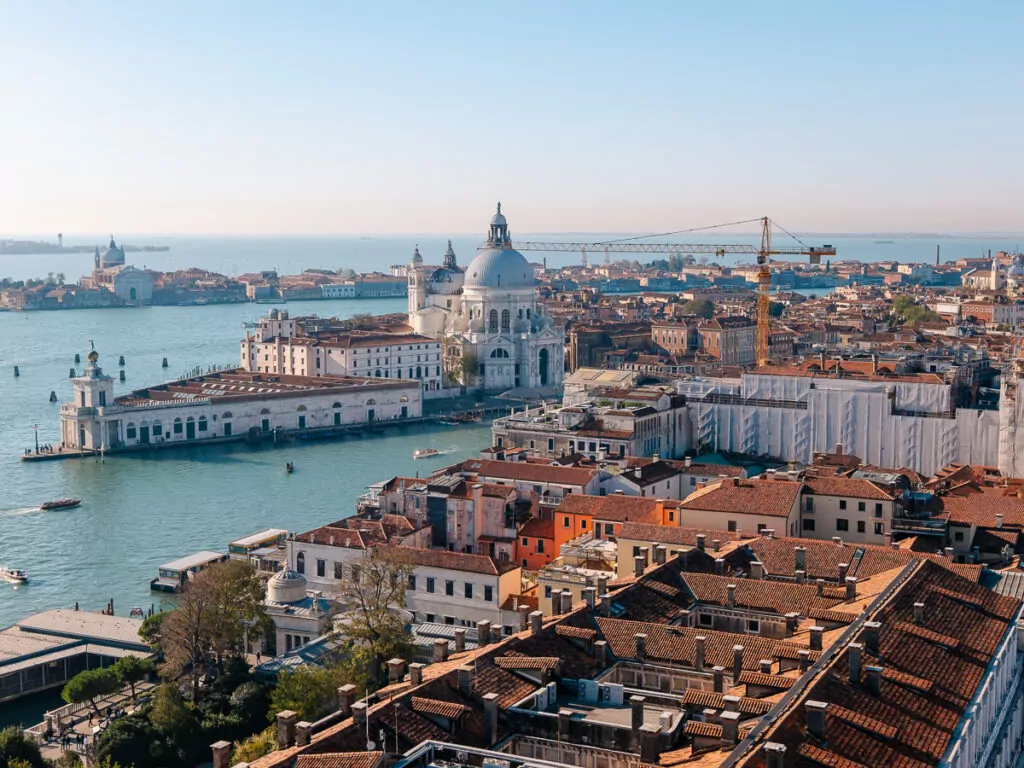
Summary of highlights from Northern Italy and Switzerland
Northern Italy highlights:
- Milan
- The Dolomites
- Venice
- Bologna
- Florence
- Cinque Terre
- Genoa
- Turin
- Lake Como
Switzerland highlights:
- St Moritz
- Zermatt
- Interlaken
- Lucerne
- Basel
- Zürich
There are some places I haven’t listed as a ‘highlight’ but that I mention as options for day trips or easy stops en route to your next destination, like Verona, Pisa and Lausanne.
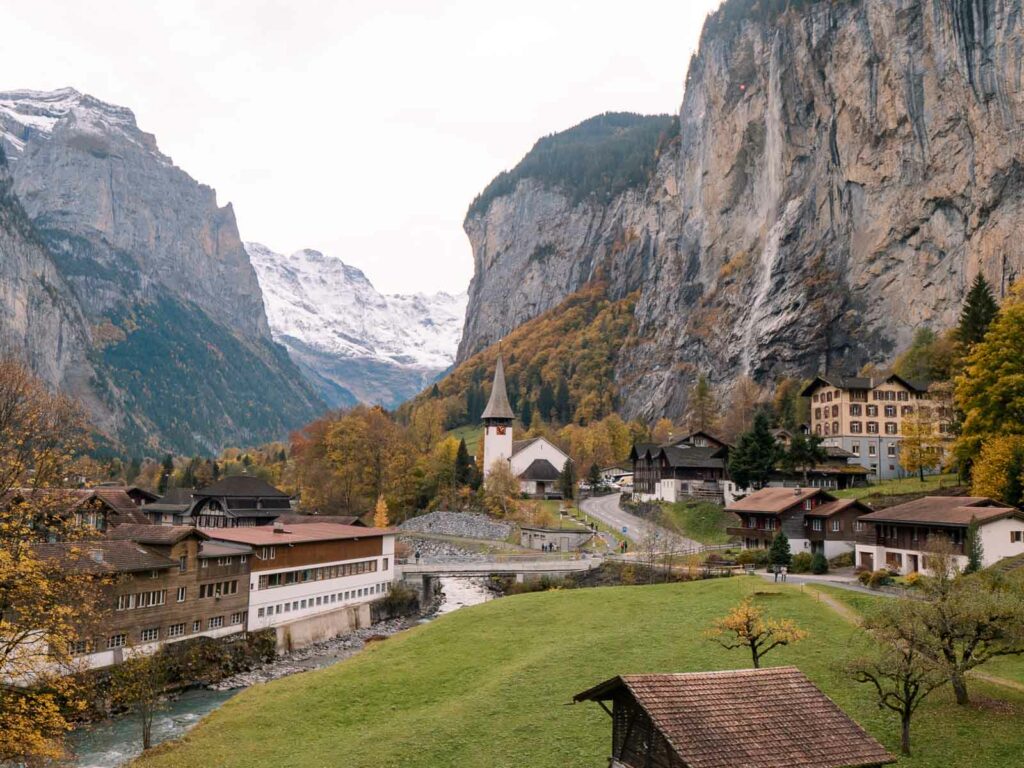
Northern Italy and Switzerland map of highlights
Summary of 10 days in Northern Italy and Switzerland
- 2 days Zermatt
- Glacier Express to St Moritz
- Bernina Express to Tirano and onto Milan
- 2 days Milan
- Option one: 3-4 days in Genoa + Turin
- Option two: 3 days in Florence via Bologna or Cinque Terre
- Option three: 3-4 days Venice via Verona
- Option four: 3-4 days in the Dolomites
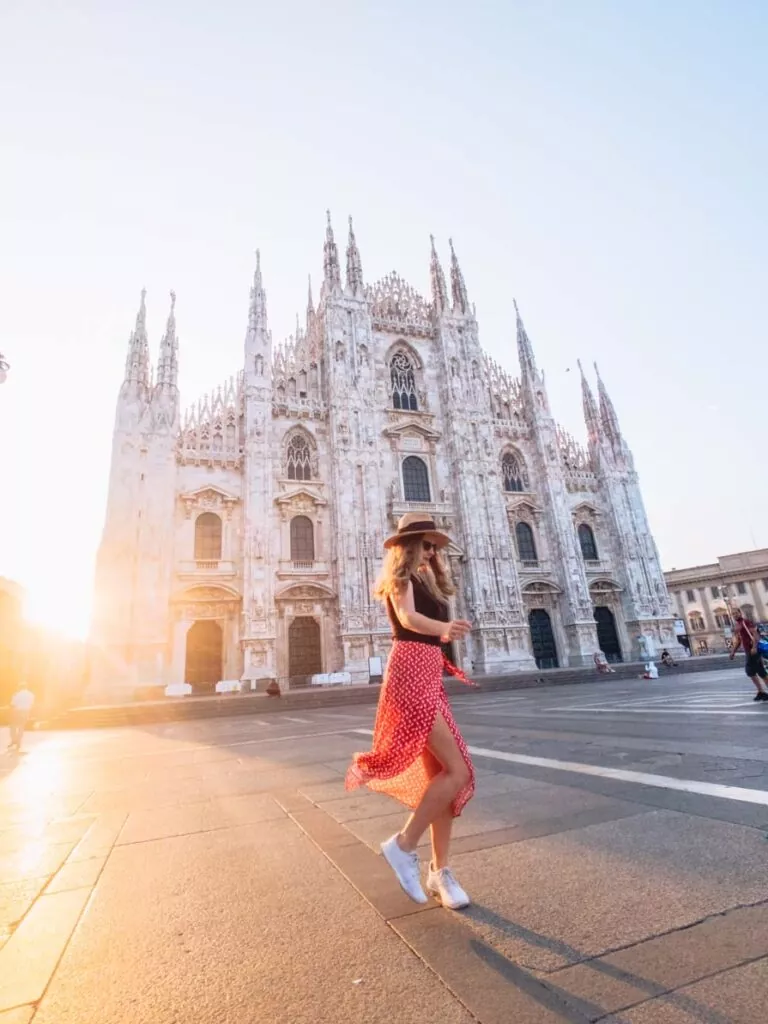
Summary of two weeks in Northern Italy and Switzerland
- 2 days Milan
- Bernina Express to St Moritz
- Glacier Express to Zermatt
- 2-3 days in Interlaken
- 2 days in Lucerne
- 2 days in Lake Como
- Option one: 3-4 days in Venice via Verona
- Option two: 3-4 days in the Dolomites
- Option three: 2 days in Turin, 2 days in Genoa
- Option four: 2 days in Cinque Terre, 2 days in Florence
- Option five: 1 day in Bologna, 3 days in Florence
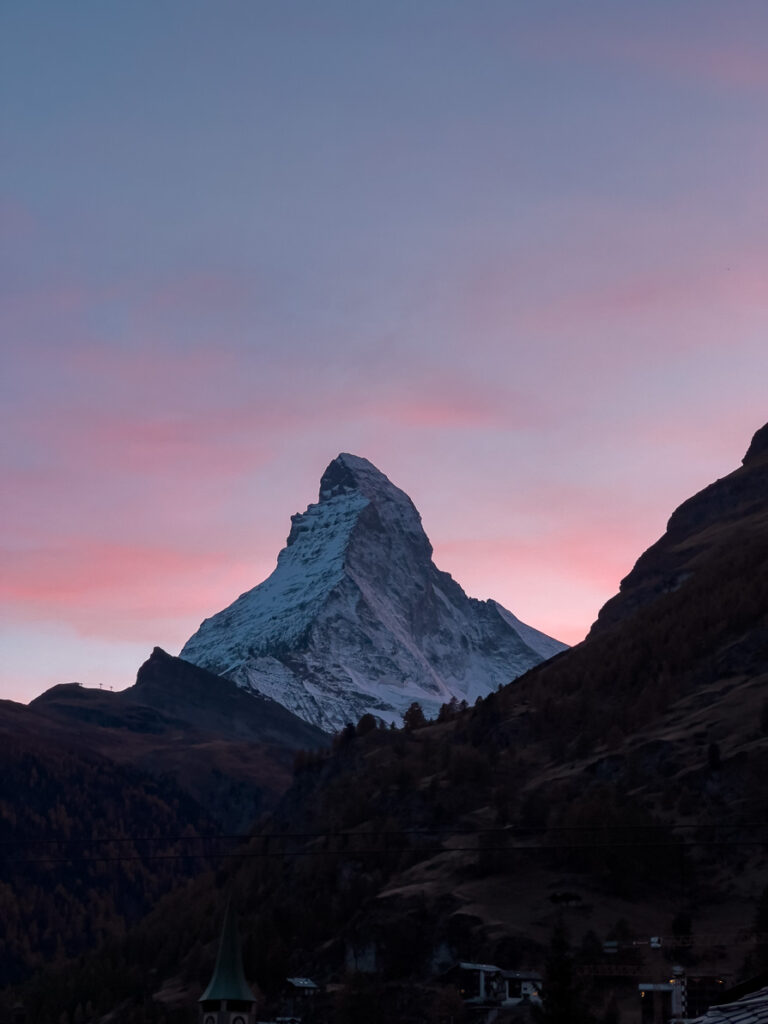
Summary of three weeks in Northern Italy and Switzerland
Either the two week itinerary at a slower pace, or if you want to see as much as possible you could follow this itinerary:
- 2 days in Zürich or Basel
- 2 days in Lucerne
- 2-3 days in Interlaken
- 2 days in Zermatt
- Glacier Express to St Moritz
- Bernina Express to Tirano and continue to Milan
- 2 days in Milan
- 2 days in Turin
- 2 days in Genoa
- 1 day in Cinque Terre
- 2 days in Florence
- Bologna day trip, back to Milan
- Or skip Turin/Genoa, and add either Venice or the Dolomites onto the end
This would be VERY quick though, so it would be best to cut 2-3 of these options out to slow down a bit.
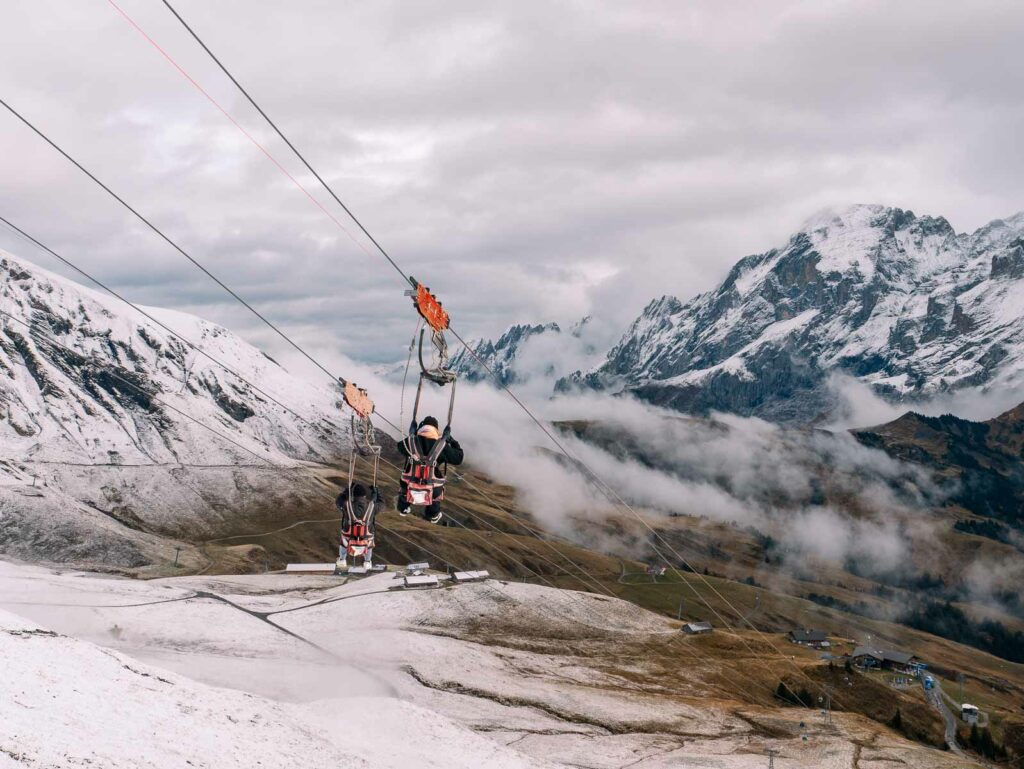
Planning your Northern Italy & Switzerland itinerary
When is the best time to visit Northern Italy & Switzerland?
As with any trip, the best time to travel will really depend on your personal preferences and budget, but here’s a quick rundown of what to expect each season in Switzerland and Northern Italy.
☀️ Summer (June to August)
June is kind of pre-summer, with warm weather, long days and plenty of tourists but before the insane school holiday crowds. Great for hiking in the mountains, coastal activities in Italy and an iconic Euro summer vibe without the chaos of July and August.
July and August are exactly that: chaotic! Cities get a bit quieter because they’re unbearably hot and all the locals escape to the coast or mountains, and therefore the coast and mountains are extremely busy and expensive. You’ll need to pre-book hotels and trains, and there will be big groups of tourists everywhere you go. If you don’t mind the crowds and higher prices then it’s still worth it, but I just want you to be aware of the reality of European summer travel!
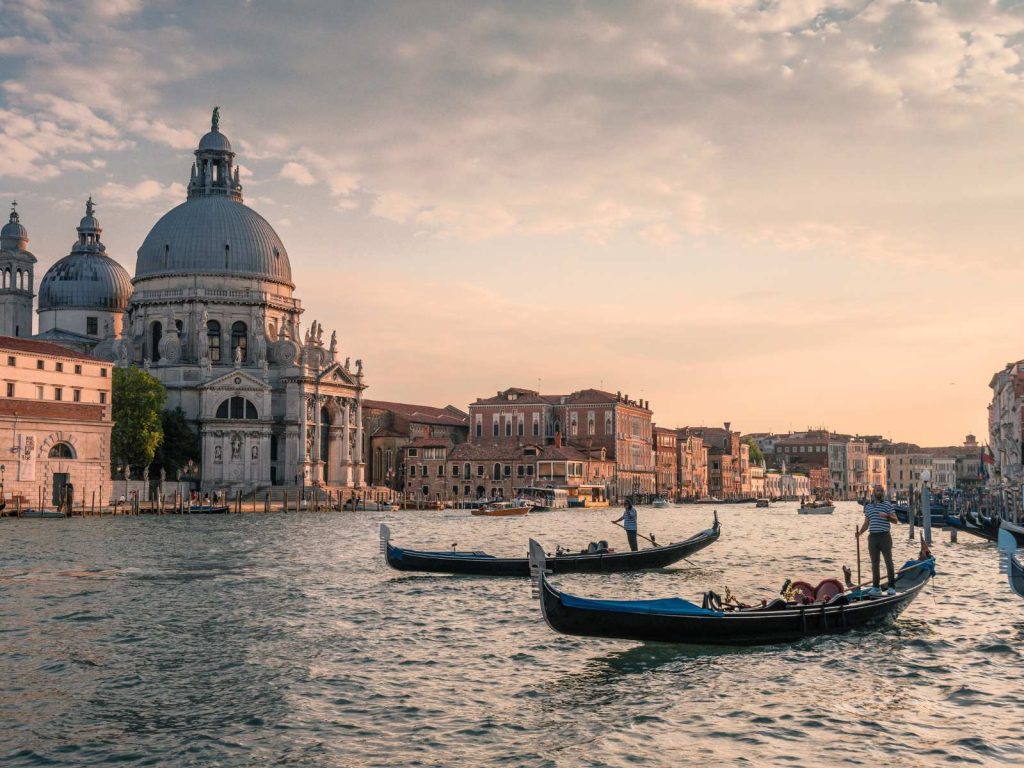
🍂 Autumn (September to November)
Mild weather, food festivals and stunning autumn colours, my favourite time to visit Northern Italy and Switzerland.
September is ideal for post-summer alpine hiking and the Italian coast, most European schools generally go back first week of Sept so crowds are thinner but there will still be plenty of tourists enjoying fewer kids being around and slightly lower prices.
October sees trees turning all shades of red and orange, noticeably less crowds and cheaper accommodation, with slightly unpredictable weather.
November gets chilly but if you can handle the cold you’ll be able to take advantage of great deals and snowy landscapes in the mountains. Just be aware that some seasonal destinations shut up shop (like Cinque Terre) or prepare for winter skiing (like the Dolomites) so if you have specific activities or restaurants on your list, they might be closed or run on a limited schedule in the off season.
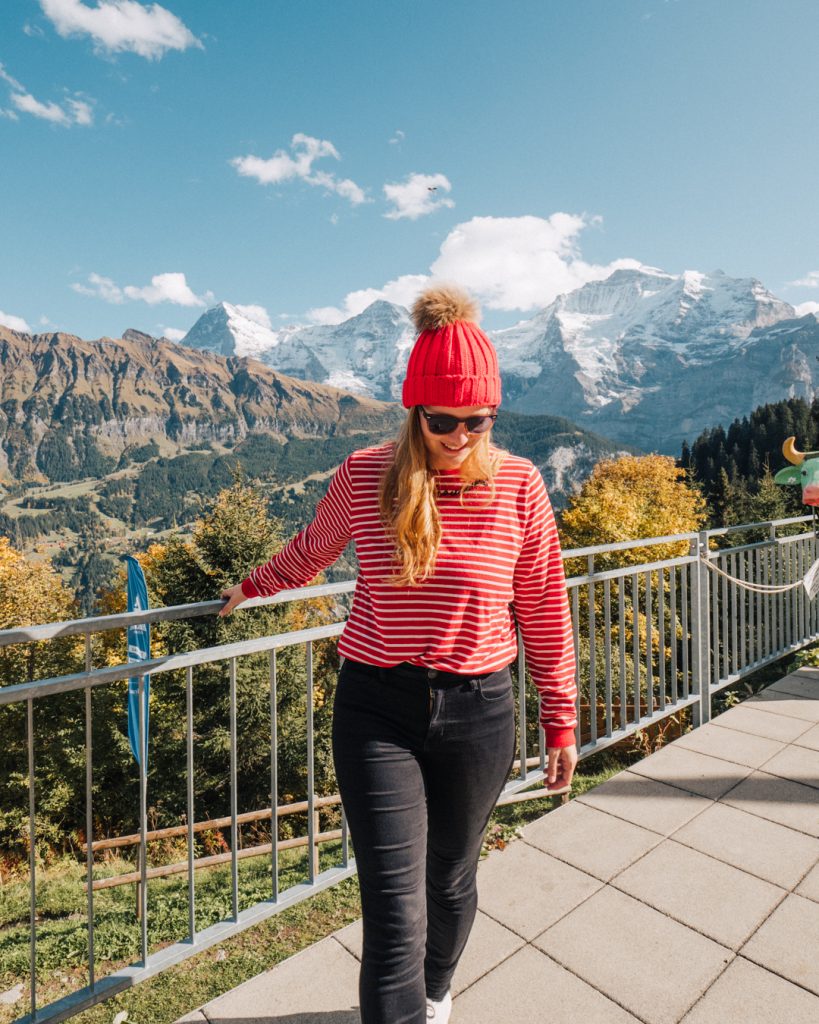
❄️ Winter (December to February)
The winter experience in this part of Europe is very dependent on where you go.
Switzerland in December means beautiful Christmas markets and magical mountain landscapes, but weather can be unpredictable and very cold. Italy’s Christmas markets are nowhere near as impressive, except for the Dolomites where the Austrian influence has put Bolzano and Trento’s markets on the map.
In skiing destinations you’ll find they’re busy all of January, February and March, and obviously this changes each year but in recent years March has offered some fantastic snow conditions. In non-skiing destinations you’ll find January and February a bit gloomy weather-wise but that means lower prices and fewer crowds, ideal for things like museum visits, foodie trips and general relaxation.
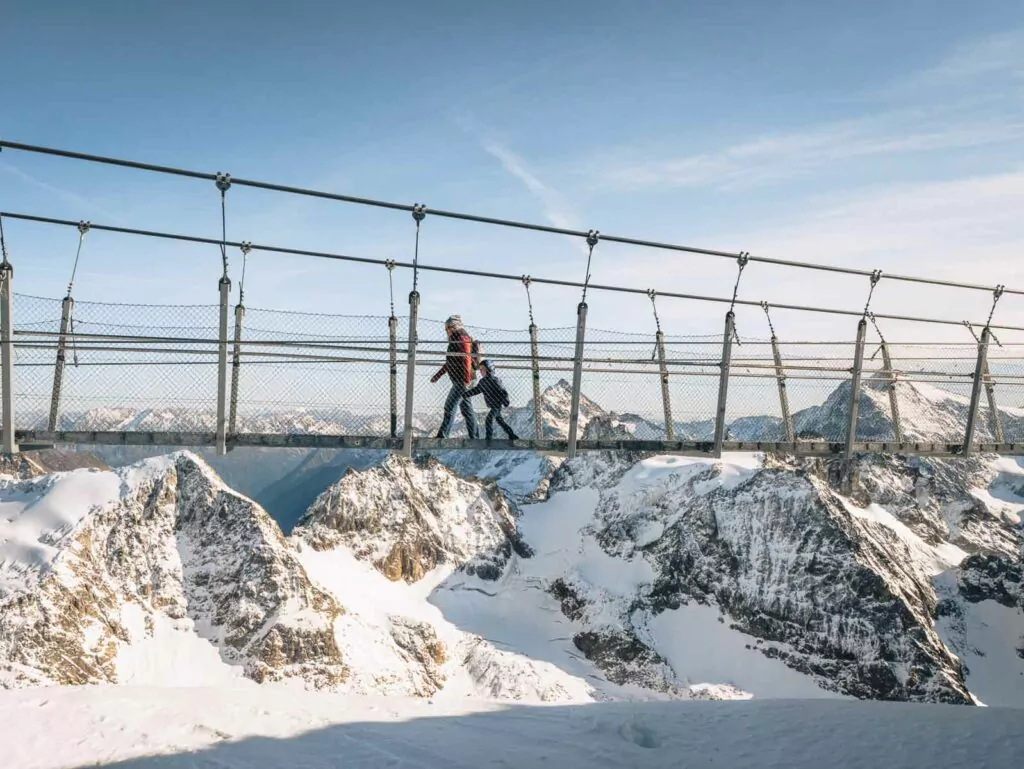
💐 Spring (March to May)
Ski season runs right through to April in the Dolomites and Swiss Alps, while cities start getting lighter, warmer and more lively from March onwards. Coastal destinations start prepping for summer in April and April/May are ideal for visiting these spots before the crowds descend. May also brings beautiful wildflowers to the mountains after the snow has melted, and it’s a gorgeous time to get amongst some alpine adventures.
How to get around Switzerland and Northern Italy
🚂 Trains: I would highly, highly recommend travelling Northern Italy and Switzerland by train. Both countries have fantastic public transport networks that connect everywhere I’ve mentioned in this itinerary, and with a rail pass and a bit of planning it can be a really affordable way to explore. I’m a total train convert for Europe travel!
🚗 Rental car: If you’re travelling with kids or as a group, a rental car might end up being a more convenient option depending on where you’re going. Parking is an absolute nightmare in Italian cities and some Swiss alpine towns are car-free, but with 3-4 people it miiiight work out better if you don’t mind dealing with the logistics. Keep in mind that you’ll need to pay tolls and gas on top of your rental car price.
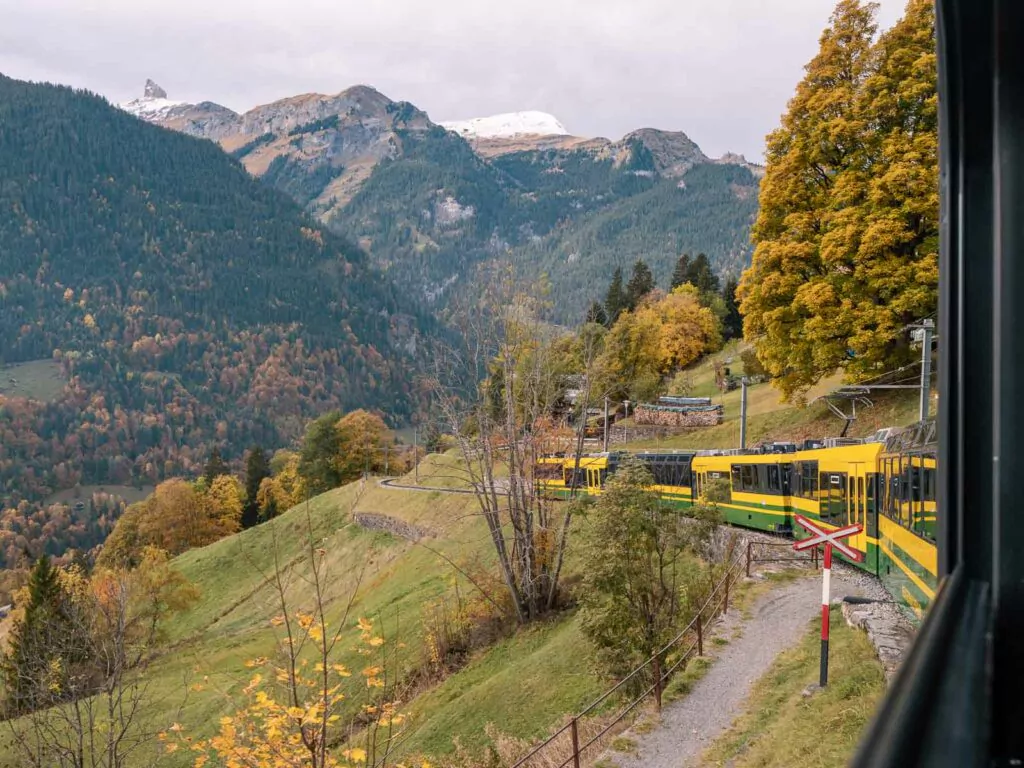
Should you get a travel or rail pass for this Northern Italy Switzerland itinerary?
A travel pass or rail pass in Europe is a pass that essentially acts as your public transport ticket, giving you access to the train network (or whole transport network) within a particular country, region or the whole continent. You’ve got quite a few options for travel passes in Northern Italy and Switzerland:
- Eurail Global Pass: Covers train travel within all of Europe for a certain number of days for non-European residents + some mountain excursion discounts
- Interrail Global Pass: Basically the same but for European residents, except you can’t use it for travel within your home country (just one trip in and one trip out)
- Swiss Travel Pass (Save 10% on the Swiss Travel Pass with promocode FindingAlexxKlook): Covers the entire Swiss public transport network (including trains, buses and boats) and gives you discounts on many mountain excursions (generally 25-50% off)
- Swiss Half Fare Card (Save 10% on the Half Fare Card with promocode FindingAlexxKlook): Gives you half price access to the entire Swiss public transport network as well as most mountain excursions
- Regional travel passes in Switzerland: Some regions in Switzerland have their own travel passes that cover local transport as well as mountain excursions, like the Jungfrau Travel Pass (10% off with promocode FindingAlexxKlook) and Central Switzerland’s Tell Pass
The right pass for you will depend entirely on your itinerary, but the good news is that I have very detailed guides for each pass with example itineraries showing exact savings, and instructions on how to calculate it for your own trip:
If you’ve read those and you’re still stuck as to what travel pass is right for you, let me know your travel plans (with dates if possible) in the comments below and I’ll try to help you figure out which one will be best.
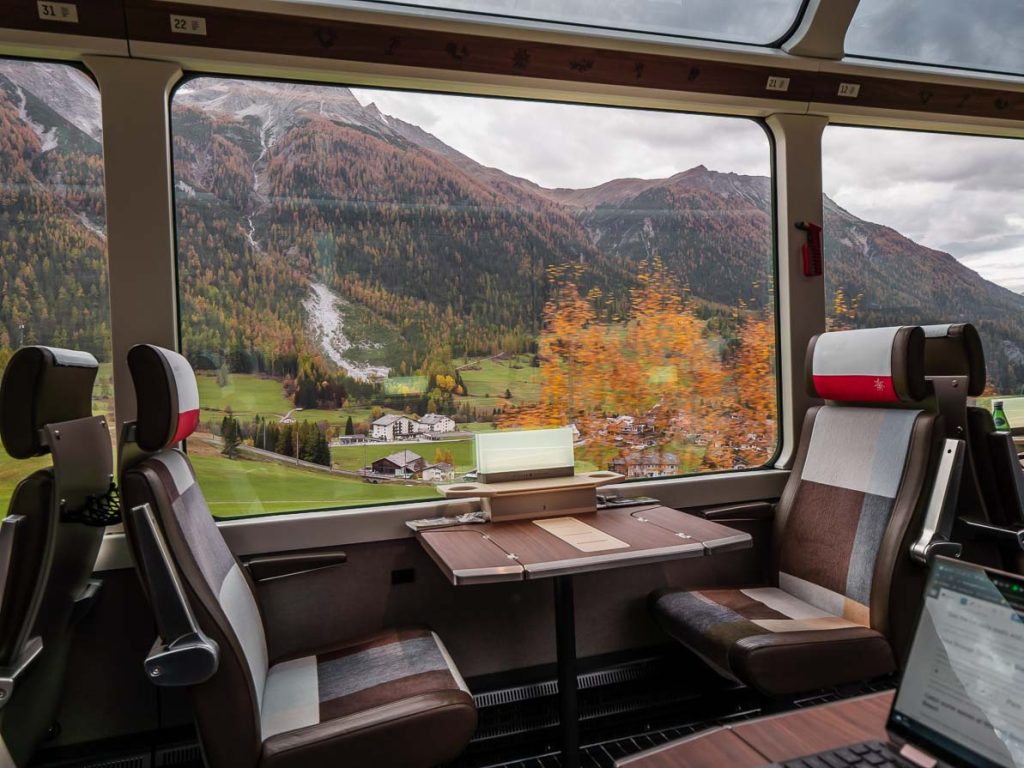
How much to budget for your Switzerland and Northern Italy itinerary
Switzerland is much more expensive than Northern Italy, so if you’re on a budget then you might want to skew your trip to spend more time below the border.
🛌🏼 Accommodation
Expect to spend anywhere from €20 for a dorm bed in Italy or €35 for a dorm bed in Switzerland, through to €70 for a dorm bed in busy periods.
Basic private rooms in hostels or cheap hotels run from €40-€80 in Italy and more like €70-€100 in Switzerland.
Mid-range accomm will likely set you back €90+ per night in Italy or €150+ in Switzerland.
Keep a close eye on football games and book EARLY if your trip coincides with a game in Milan or Florence, I made that mistake last year and had to spend €95 on a bunk bed because I accidentally planned a Milan trip on one of the biggest AC Milan game weekends 🙃
🚃 Transport
Very dependent on how long you’re travelling for, but if you are planning on catching the train to get between cities it’s likely a rail pass like a Eurail Global Pass or Swiss Travel Pass will save you money.
If you’re mainly in Northern Italy with only a couple of days in Switzerland then a Eurail Pass will probably be best, but if you’ve got 3+ days in Switzerland and plan on doing mountain excursions then look at a Swiss Travel Pass, Half Fare Card or regional travel pass instead and just book your Italy train trips individually.
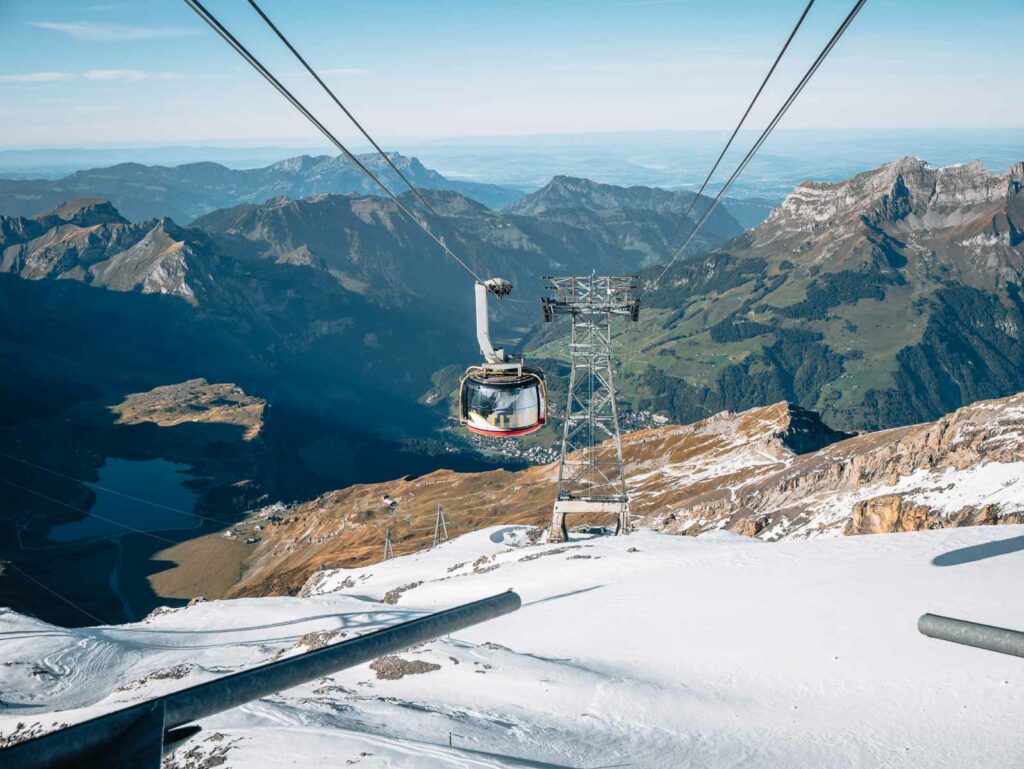
🍝 Food
Drastically different in Italy vs. Switzerland.
You can eat like a queen (or king) in Italy with world class dishes from €10 at cheaper eateries or €15-€20 from fancier establishments, but in Switzerland expect to spend €25-35 for a main at a simple restaurant and even more if you’re dining somewhere nice.
If you’re on a really tight budget you could get away with €10-15 a day using bakeries, markets and supermarkets in Italy, or €15-20 per day for Switzerland.
🪂 Activities
Most cities have free walking tours (you should tip €10-15 for a good tour), there are lots of free/cheap museums in cities and free hiking trails (though the Cinque Terre trail requires a cheap permit), and some city passes like the Milan city pass can be great value if you’re doing the major tourist things.
Big ticket experiences like boat tours, mountain excursions and some food tours can be pricey but they’re usually worth it, just plan them in advance so you can take them into account with your budget.

Where to go on your Northern Italy and Switzerland itinerary
How to use this Northern Italy Switzerland itinerary
I’ve listed all my recommended highlights in the region below, with some details on how to get there, how many days it needs, things to do and where to stay. I’d recommend running through them and taking notes on the ones that really tickle your fancy, and then you’ll have a great shell of an itinerary!
After the destinations I’ve also got specific recommendations for itineraries to fit 10 days in Northern Italy and Switzerland as well as a two week itinerary and three week itinerary, plus some themed itineraries for food lovers, outdoor enthusiasts, first-time travellers and those looking for a slower pace.
Milan, Italy
How to get there: Milan is an easy option for your starting point on this itinerary because it’s generally quite cheap to fly into, either on a European budget airline if you’re arriving from the UK or elsewhere in Europe, or on a long-haul flight from North America, Asia, Australasia or elsewhere.
If you’re arriving in the morning and you’re staying at a B&B or apartment they might not be able to store your luggage until check in, but there are Milan luggage storage options from Bounce all over the city, including a handful of locations ideally located within a couple of minutes of Milano Centrale. Book your bags in online, drop your stuff and head out exploring, without the hassle of carrying bags around!
How long to stay: 1-3 days
Who should go there: Design lovers, fashion fiends, foodies, opera enthusiasts and anyone craving the buzz of a cosmopolitan city
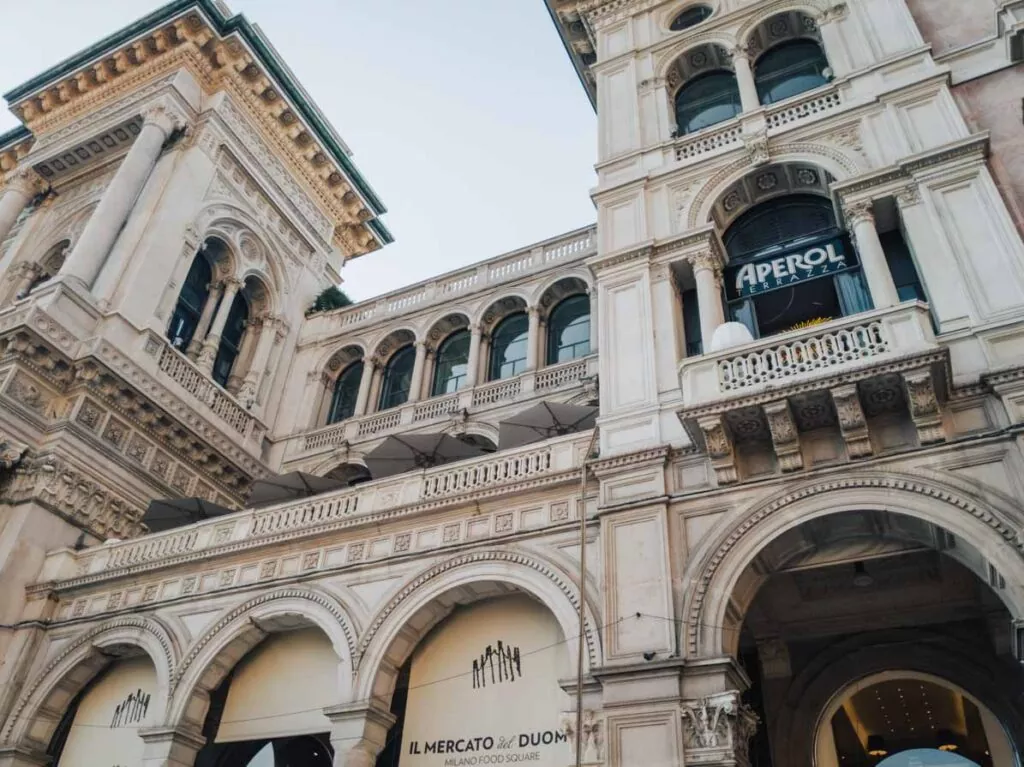
About Milan
I have to say that I think people are too harsh on Milan, it’s often used as a gateway to more popular Italian destinations, but I reckon it deserves more credit!
As the design capital of one of the world’s most stylish countries, it’s a must-visit for keen shoppers or anyone with an interest in architecture, interior design or fashion. Marvel at the grandeur of the city’s Duomo and glass-ceiling gallerias, see some of most famous art masterpieces to ever exist, and indulge in the Milanese traditional of aperitivo in the vibey neighbourhood of Navigli.
👉🏼 Read more: How to spend two perfect days in Milan
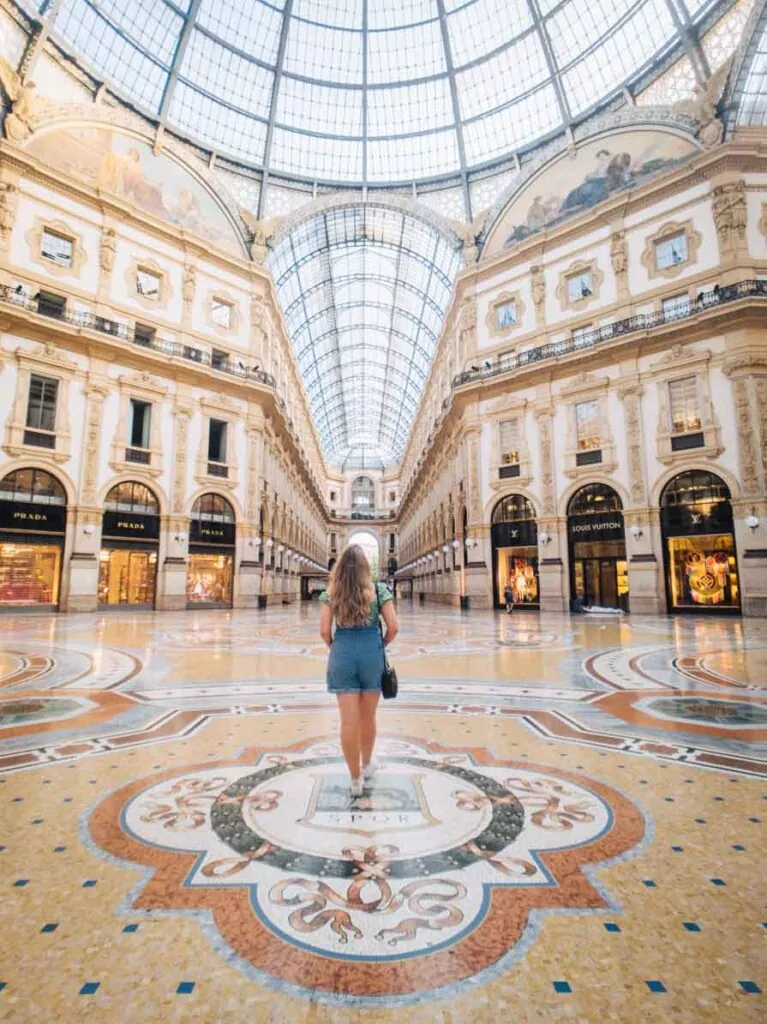
Things to do in Milan
- Head to the Duomo di Milano for sunrise
- Wander down Corso Vittorio Emanuele II for boutique retailers and luxury design stores
- Catch an opera performance at Teatro alla Scala
- Experience the viral TikTok-famous spa, the QC Termemilano, where there’s a pool room that simulates a thunderstorm
- See Da Vinci’s masterpiece “The Last Supper” at the Santa Maria delle Grazie church (book tickets well in advance)
- Take an aperitivo food tour in Navigli and then join in the nightlife
- Search for the best street art in the Isola district
- Treat yourself to a fancy dinner in Brera
- Grab a drink with a view at the famous Terrazza Aperol (average service but you’re paying for the view!)
- Basilica of Sant’Ambrogio for architecture nerds
- San Siro Stadium tour or game for football fiends
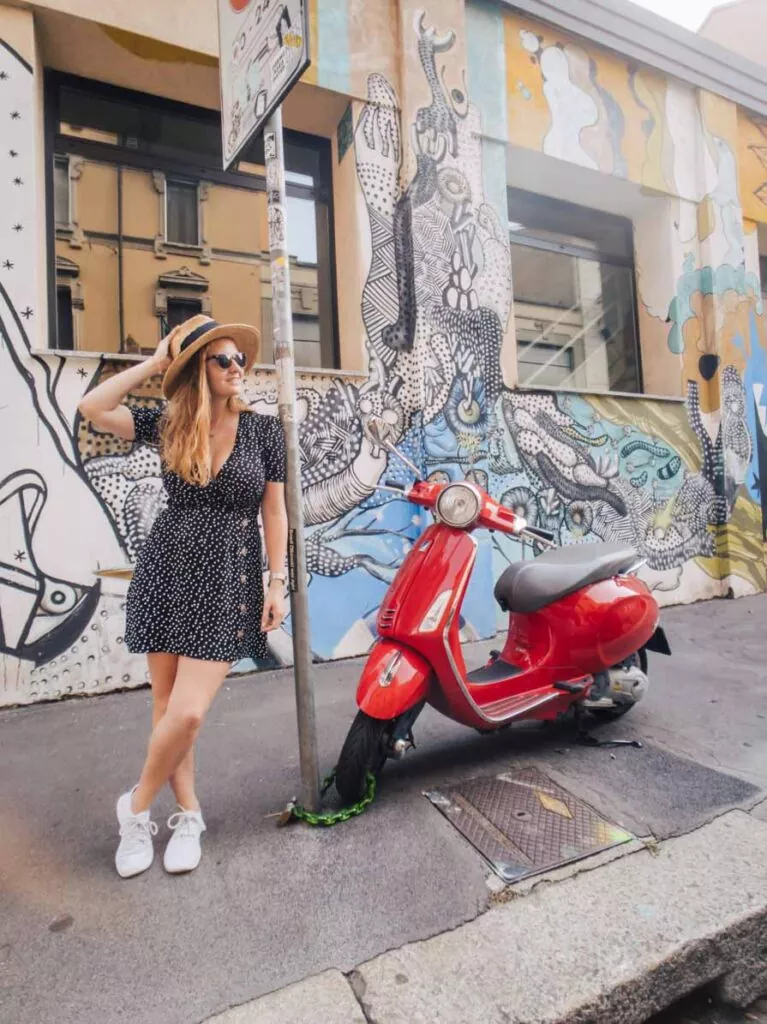
Where to stay in Milan
Budget:
- Ostello Bello Grande (simple social hostel right by the train station with great facilities)
- Atmos Luxe (small, quiet hostel in Navigli)
Mid-range:
- Milano Dreams (affordable guesthouse)
- B&B La Terrazza di Barbara (cosy B&B with good links to the main train station)
- Boutique Hotel Martini 17 (funky boutique hotel)
- Hotel Indigo Milan (a top-rated 4* hotel)
Luxury:
- INTOMilan Aparthotel (stylish design and great facilities)
- ODSweet Duomo Milano (ultra-Instagrammable)
- Château Monfort (v fancy 5* luxury hotel)
- Duomo Cathedral View or Unique Duomo Luxury Property for Duomo views
The Dolomites, Italy
How to get there from Milan: You can take a three hour train journey from Milan with an easy change in Verona, or if you have a rental car it’s 3h 15m from Milan to Bolzano. The Dolomites is best explored by car and is the only place on this itinerary where I’d recommend renting a car if you can!
How to get there from Venice: If you’re flying into Venice instead you can book an easy coach transfer from Venice to Cortina d’Ampezzo
How long to stay: 3 days minimum, if you can’t fit that in your itinerary then best to leave it for another time
Who should go there: Outdoor adventurers, photographers, nature lovers
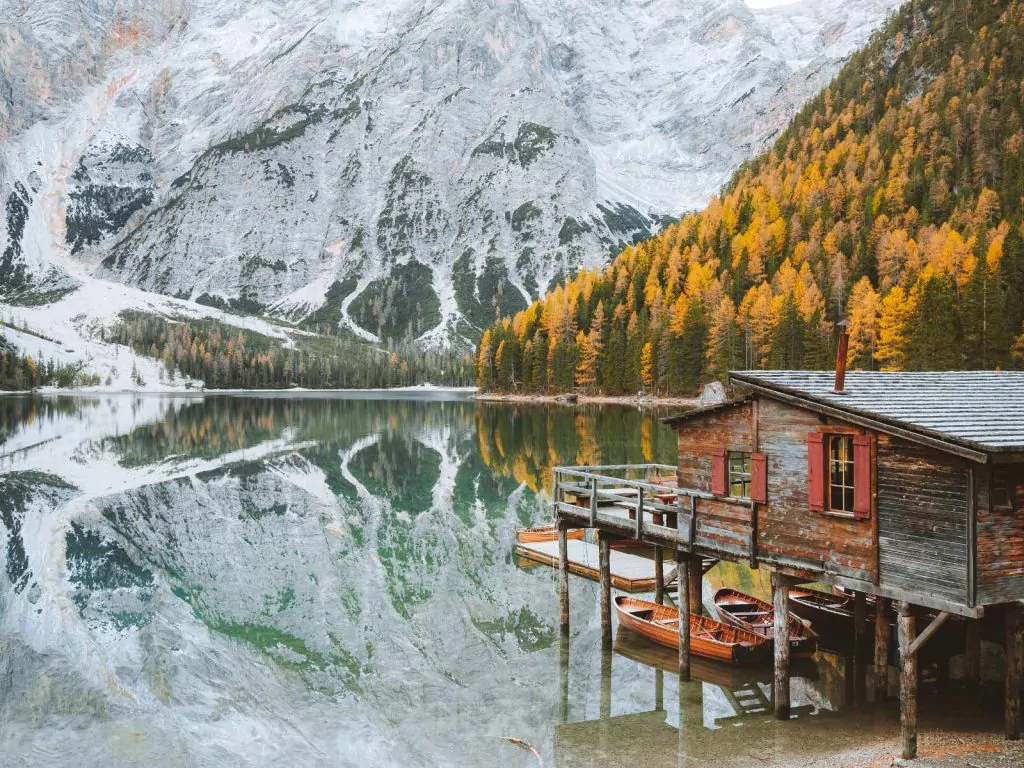
About the Dolomites
Rising dramatically from the north Italian countryside, the Dolomites offer some of the most epic scenery in all of Europe. You’ll see jagged peaks towering behind rolling hills, fairytale villages that combine Italian and Austrian heritage, and alpine lakes so stunning you’d be forgiven for thinking they’re a painting.
If you’re keen for some alpine adventures at a slightly cheaper price point than the Swiss Alps, the Dolomites are a fantastic option.
👉🏼 Read more: How to visit the Dolomites without a car
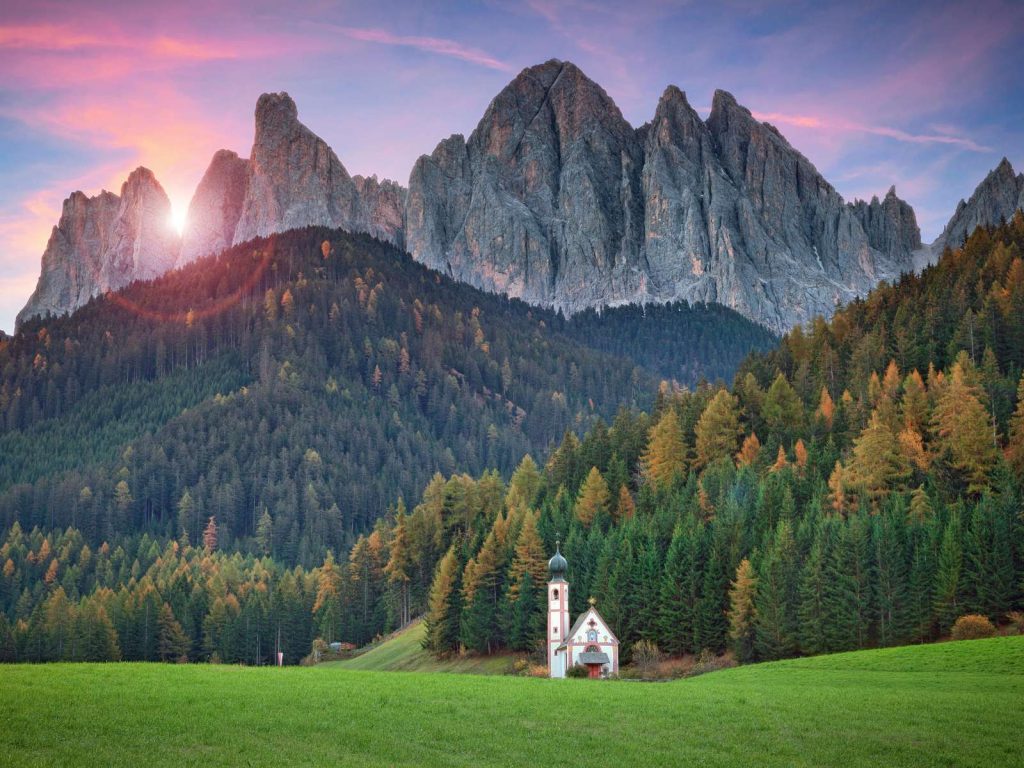
Things to do in the Dolomites
- Hike to the iconic Tre Cime di Lavaredo for one of the most famous views in the world
- Row a boat on Lago di Braies or visit Lago di Carezza for an equally beautiful scene
- Catch the gondola to Alpe di Siusi, the largest alpine plateau in Europe
- Hike the Seceda ridgeline, sunrise here is pure magic
- Get out of your comfort zone with a via ferrata, a cable climb up sheer cliffs! Super safe but definitely a mental and physical challenge.
- Indulge in local cuisine which is a melting pot of Italian, German and Austrian influences
- Eat some of the best pasta I’ve ever had at Pastalab in Bolzano (and that’s saying something because I have eaten A LOT of pasta)
- Witness the magical Enrosadira, where the mountains glow a fiery red at sunset
- Take a private tour to the best photo spots in the region
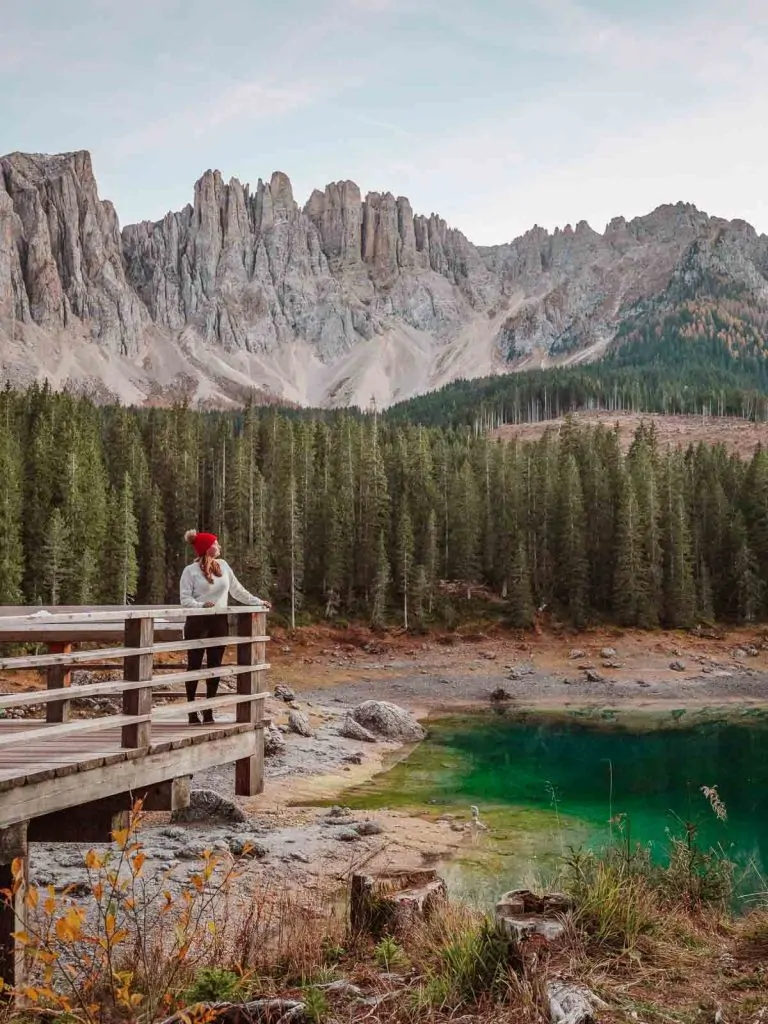
Where to stay in the Dolomites
Budget:
- The only affordable accommodation options in the Dolomites are guesthouses, agriturs and B&Bs but they’re mostly only accessible by car, check booking.com for your travel dates and switch over to the map view to see the options
- Ostello Giovane Europa in Trento has okay reviews but if you’re using it as a base you’d still need a car to get to and from the Dolomites mountains
- Rosa Resort in Cavareno offers excellent value if you do have a car
- Maison My Life is by far the best budget option in Bolzano but it’s a single apartment so gets booked up well in advance
- If you’re on a tight budget you might want to book a cheap guesthouse and try find another traveller staying in the area who you can share a ride with
Mid-range:
- LOOM Hotel in Bolzano is a beautiful boutique hotel with a huge focus on sustainable design, each room is totally different so you’ll be surprised when you walk in! It’s a bit out of the city in an industrial area so best for those who have a car or you can rent a bike from the hotel.
- Corte Varola B&B Zia Marisa in Belluno
- Loft Naturalpina Dolomiti Farm in Belluno
- B&B Villa Angelino in Ortisei
- Hotel Cosmea in Ortisei
- Palais Hörtenberg in Bolzano
Luxury:
- ADLER Spa Resort DOLOMITI is a brilliant value wellness resort, with single rooms from €241 and double rooms from €375 per night in the shoulder season, including half board, a 3500m² water world of pools, jacuzzis and saunas, relaxation zones with panoramic views, and easy access to both the Alpe di Siusi and Seceda cable cars. It’s in Ortisei, only a few minutes from the bus stop, so no car needed! Read more in my ADLER DOLOMITI review >>
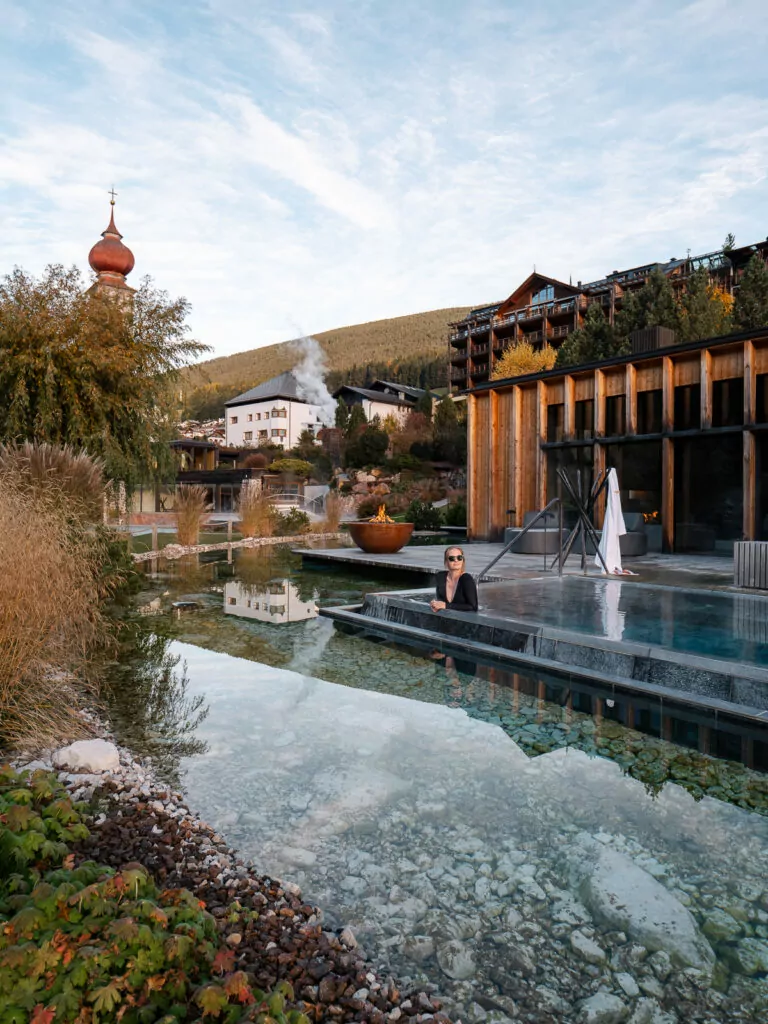
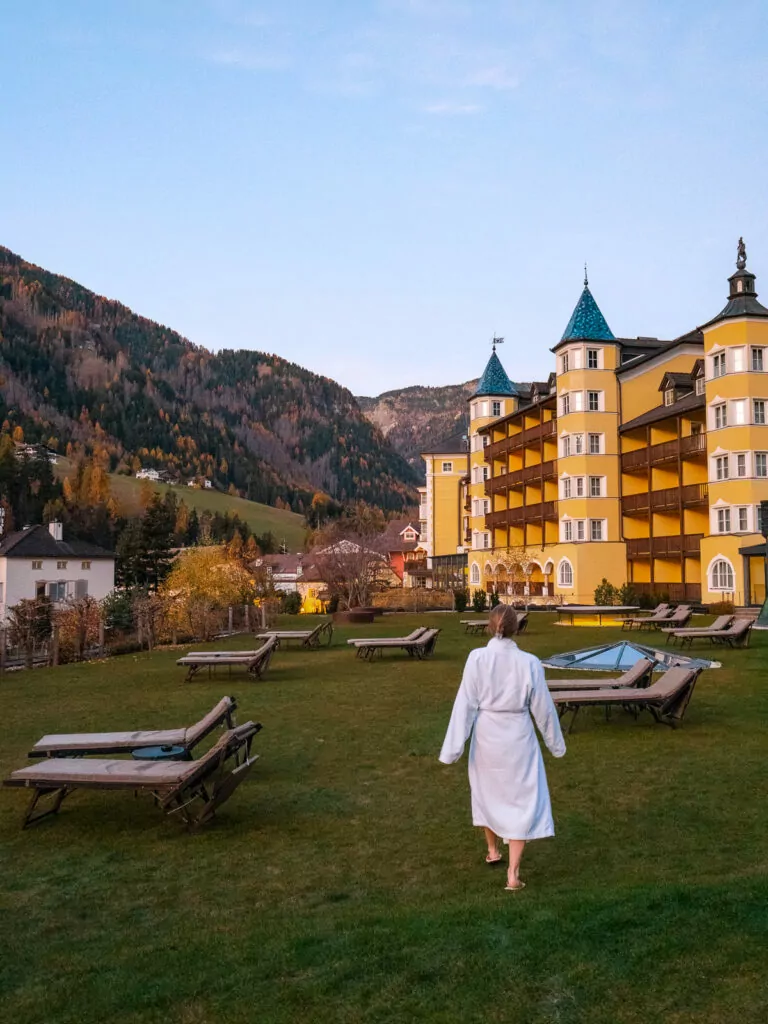
- ADLER Lodge ALPE and ADLER Lodge RITTEN are their ultra-luxe lodges up in the mountains if you want somewhere super special
- Schloss Freudenstein is a literal castle
- Lefay Resort & SPA Dolomiti
- Villa Eden
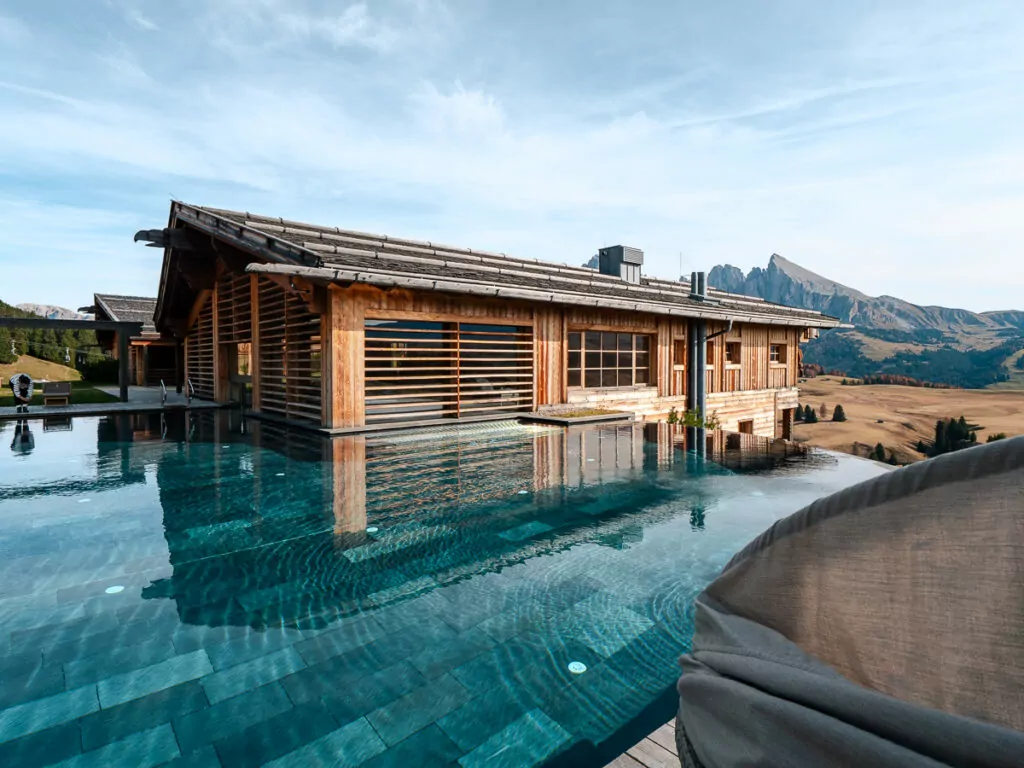
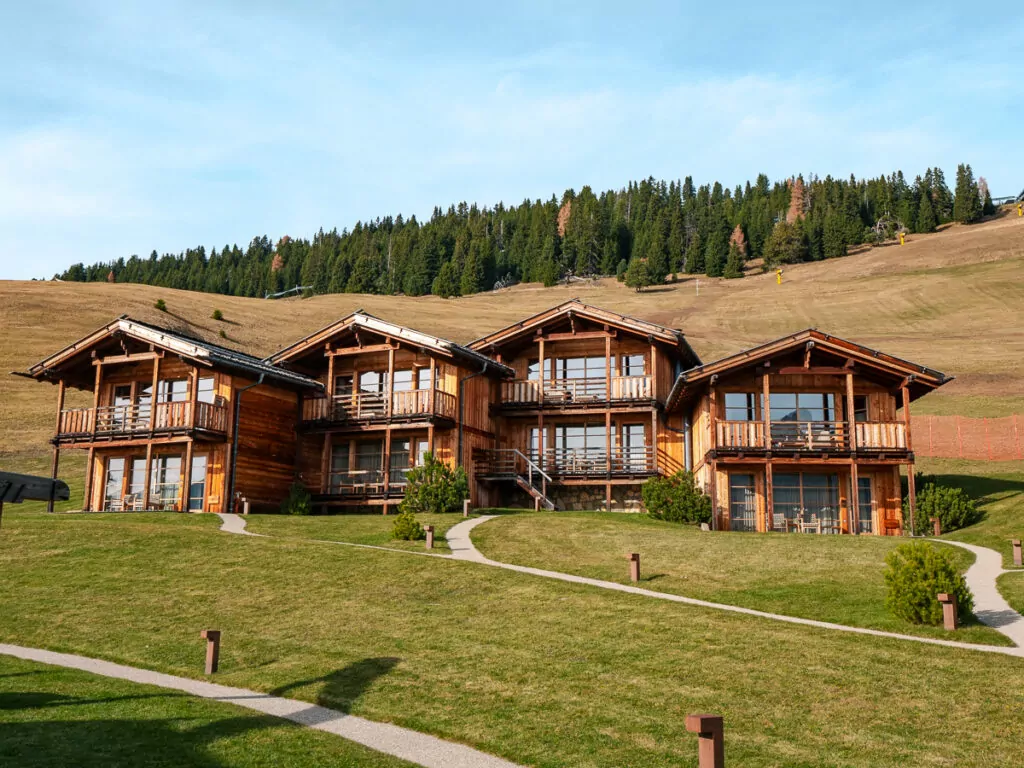
Venice, Italy
How to get there from the Dolomites: An easy train journey with one change in Verona, it’ll take you 2h 45m-3h 45m depending on the connection time, or 2-3 hours if you’re driving
Optional add on: Verona! You can store your bags at the train station and explore the historical city centre. Stand under Juliet’s Balcony, climb the Torre Lamberti or people-watch in Piazza delle Erbe.
How long to stay in Venice: 2 days if you’re happy to battle the cruise ship crowds, 3-4 days for a much more relaxed experience
Who should go there: Romantics, history buffs, people who don’t mind crowds and anyone that’s had it on their bucket list since Casino Royale (or whatever Venice-based movie was big for your generation!)
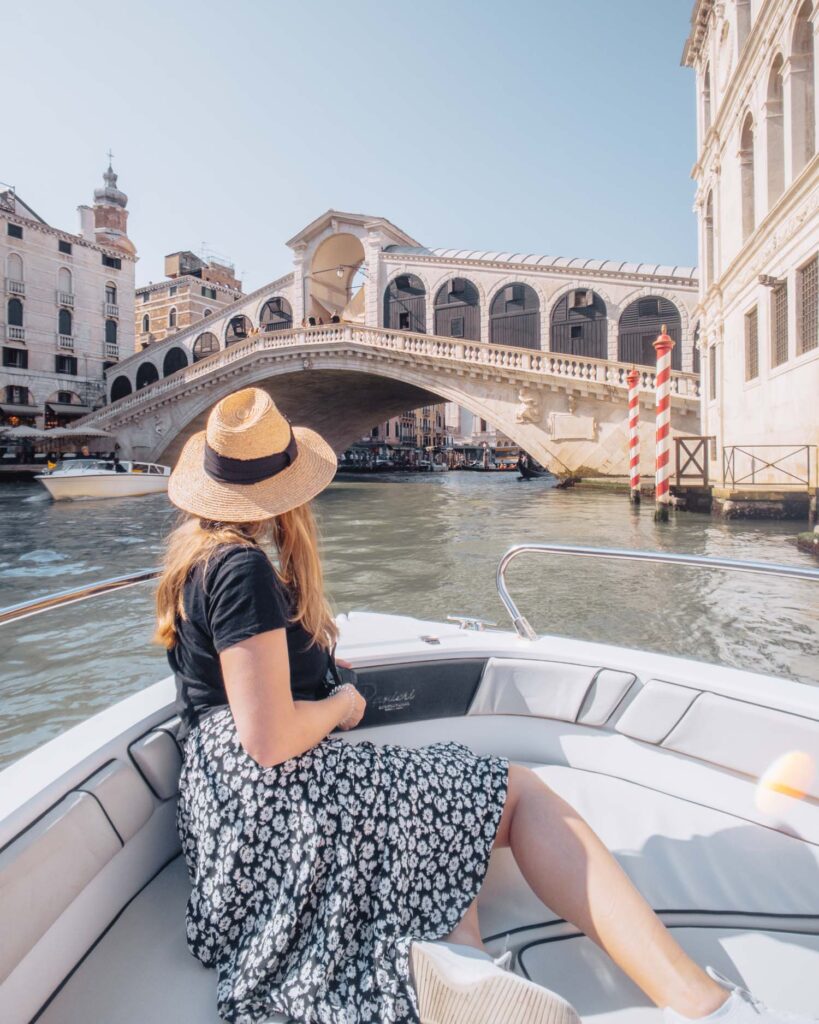
About Venice
One of Europe’s most divisive tourism destinations, people seem to either fall in love with Venice’s undeniable charm or despise the long lines and overpriced gondola rides. I sit firmly on the ‘love’ side but with a caveat – Venice is much, much better in the shoulder months (April/May and October/November) and it’s more enjoyable if you stay longer.
Summer in Venice can be stiflingly hot which makes sharing narrow alleyways and bridges with thousands of other tourists not so nice, and between the hours of 10am and 4pm the floating city is rammed with cruise ship passengers* and day trippers, so if you have 3-4 nights there you can make use of the early mornings and late afternoons/evenings to explore.
*They actually banned big cruise ships from the Venetian lagoon in 2023, but the cruise lines just stop at a nearby port and still run day trips to and from the city.
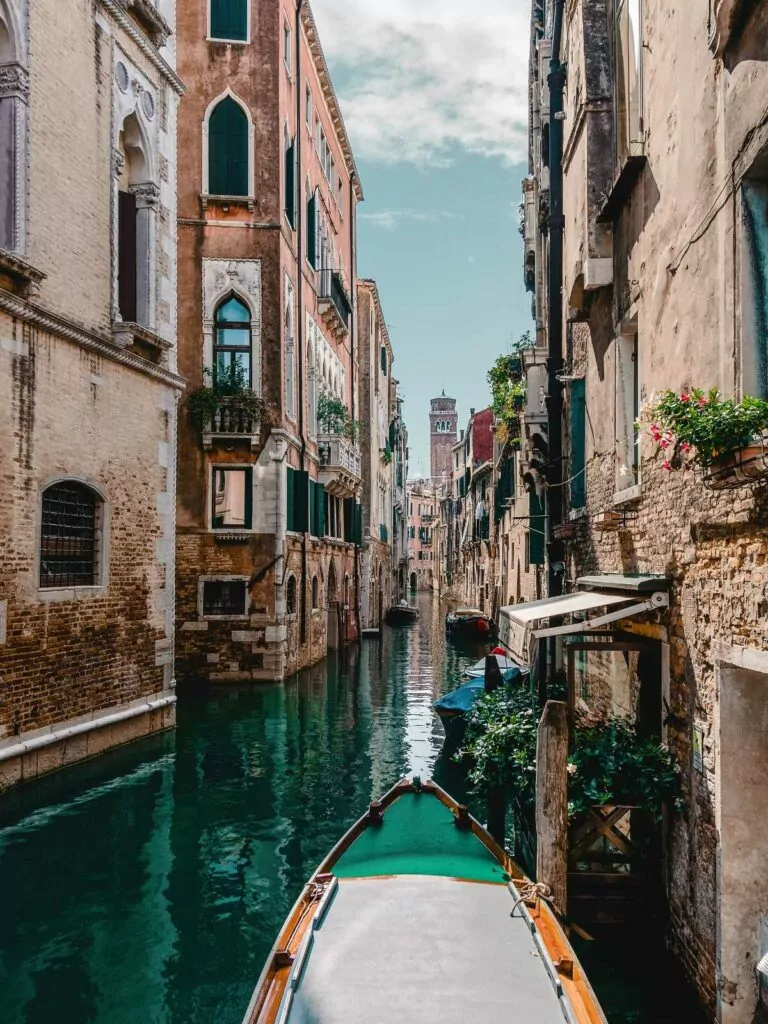
Things to do in Venice
- Get lost in the magic ✨ The city is a floating mess of narrow streets, historic bridges and hole-in-the-wall eateries and bars with so much to discover
- Take a gondola ride, it has to be done!
- Cross the iconic Rialto Bridge
- Marvel at the magnificent paintings of Doge’s Palace and the mosaics inside St Mark’s Basilica
- Catch a vaporetto (water bus) to the colourful town of Burano or the glass-blowing capital of the world, Murano
- Enjoy traditional Venetian cuisine with a food tour
- Visit Acqua Altadi Venezia, the floating bookshop for a cool photo spot
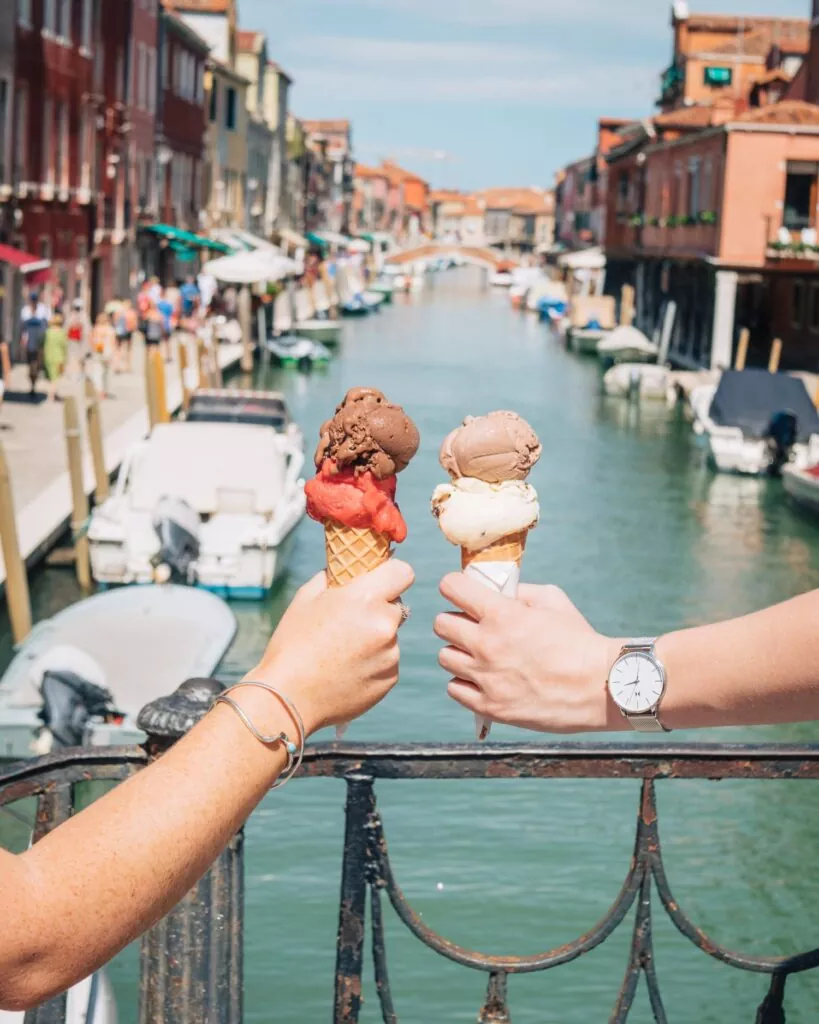
Where to stay in Venice
Budget:
- Generator Venice (not fantastic reviews but the closest hostel to actual Venice, just a quick vaparetto away)
- MEININGER Venezia Mestre (best hostel on the mainland)
- Il Veliero Romantico (affordable guesthouse in Santa Croce with dorms and private rooms)
Mid-range:
- B&B Hortus (top-rated B&B in a quiet part of Venice)
- Casa Sulla Laguna (gorgeous apartment in Murano, an island near Venice)
- Al Mascaron Ridente (small hotel offering excellent value)
Luxury:
- The Venice Venice Hotel (stunning design hotel on the water)
- Nolinski Venezia (very fancy boutique hotel)
- Gritti Palace (next level luxury in a historical building)
Bologna, Italy
How to get there from Venice: A direct 1h 30m train that runs throughout the day
How long to stay: A day trip is sufficient but you could easily stay longer for the food alone
Who should go there: It’s a non-negotiable for foodies, I’d say it’s the best food city in the world!
About Bologna
In a country renowned for its cuisine, Bologna takes the crown as Italy’s gastronomic queen. Nicknamed “La Grassa” (the fat one), this is the home of ragu, tortellini and mortadella.
The city also offers easy access to other famous foodie hot spots like Parma (known for Prosciutto di Parma and Parmigiano Reggiano) and Modena (known for balsamic vinegar).
Aside from food, it’s a busy student city with a well preserved medieval centre, iconic porticoes and loads of cool events throughout the year. Apparently there’s some cool historical stuff here too but I’ll be honest, I was too busy eating to notice anything else.
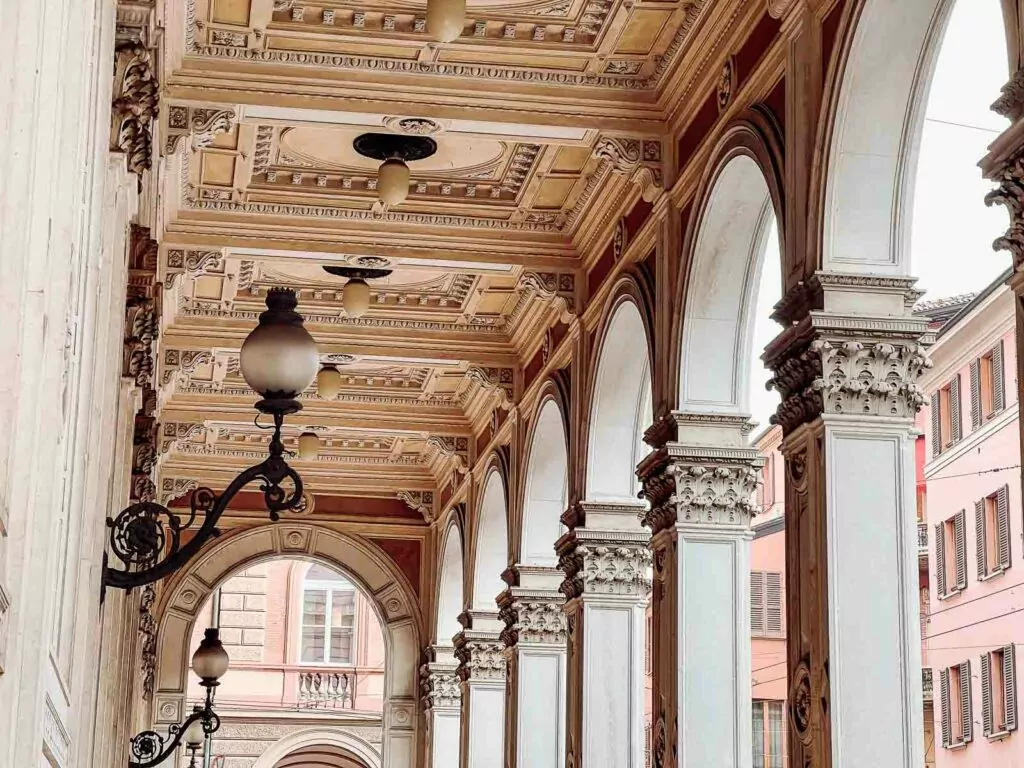
Things to do in Bologna
- You can’t visit Bologna without joining a food tour, and Mattia from Delicious Bologna runs the best one in town. I won’t spoil the experience by telling you what to expect but lets just say you need to wear loose clothing, you certainly won’t be going home hungry.
- Stand under Bologna’s leaning towers, one of them puts Pisa to shame
- Watch free outdoor movies at Piazza Maggiore throughout the warmer months
- See the unfinished San Petronio church
- Take a day trip to Modena for balsamic vinegar tastings and Maranello for the Ferrari Museum
- Take a day trip to Parma for antipasto heaven
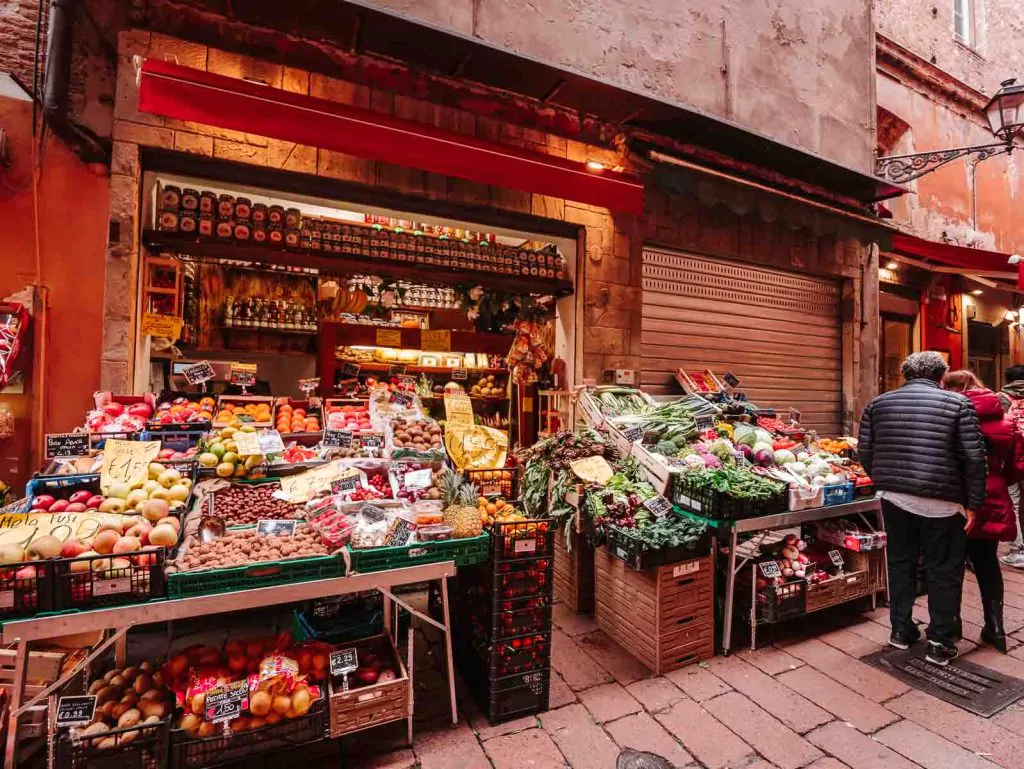
Where to stay in Bologna
Budget:
- Hostel Il Nosadillo (very cheap basic hostel with decent reviews)
- Dopa Hostel (boutique hostel that’s a fancier option)
- B&B Casa Santina (budget-friendly B&B slightly out of the city)
Mid-range:
- Savhotel (perfect location, comfortable rooms, great prices)
- Zanhotel Regina (simple, affordable hotel in an ideal location)
- Residence le Porte (top-rated mid-range apartments in the middle of the city)
- Savoia Regency (rooms are dated but the hotel grounds are stunning, great if you want a relaxing escape)
Luxury:
- Grand Hotel Majestic gia’ Baglioni (the only 5* hotel in Bologna, fantastic reviews)

Florence, Italy
How to get there from Bologna: A direct 37 minute train
How long to stay: 2-3 days
Who should go there: Art lovers, museum nerds (I say that with love!), hopeless romantics
About Florence
The birthplace of the Renaissance, Florence is pretty much an open-air gallery. From engineering marvels to iconic statues to famous paintings, there’s enough masterpieces here to fill any itinerary. Beyond the art there’s a gloriously charming city with lively piazzas, fantastic day trip options and a culinary scene that is perhaps overlooked compared to Rome, Bologna and Milan.
👉🏼 Read more: How to spend 24 hours in Florence
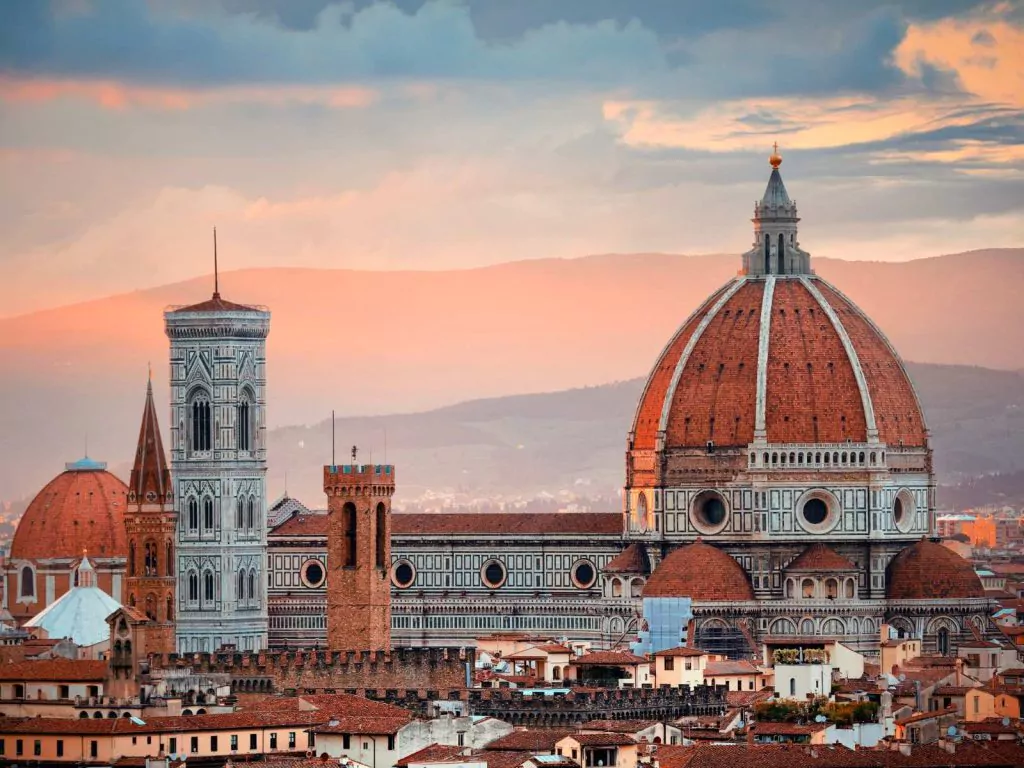
Things to do in Florence
- See the Duomo Santa Maria del Fiore, we all know it’s beautiful but the history behind it is equally as fascinating. Buy skip-the-line tickets with a guided tour to avoid a long wait, or this Duomo complex ticket includes access to climb Brunelleschi’s Dome
- Meet Michelangelo’s David at the Accademia Gallery
- Travel back to Renaissance times at the Uffizi Gallery to see art from Michelangelo, Raphael and Leonardo (da Vinci, not the turtle)
- Grab a sandwich from the original All’Antico Vinaio, the most-reviewed sandwich shop in the world with a 4.5/5 rating from more than 39,000 reviews
- Treat yourself to a leather belt or bag from one of the artisan leather workshops in Piazza Santa Croce
- See the gold sparkle at the stalls of the Ponte Vecchio bridge
- Eat your way around Mercato Centrale, a foodie paradise
- Pack a picnic and watch the sunset from Piazzale Michelangelo
- Try your hand at cooking your own Italian dishes with a cooking class
- Take a day trip to the vineyards and rolling hills of Tuscany’s countryside
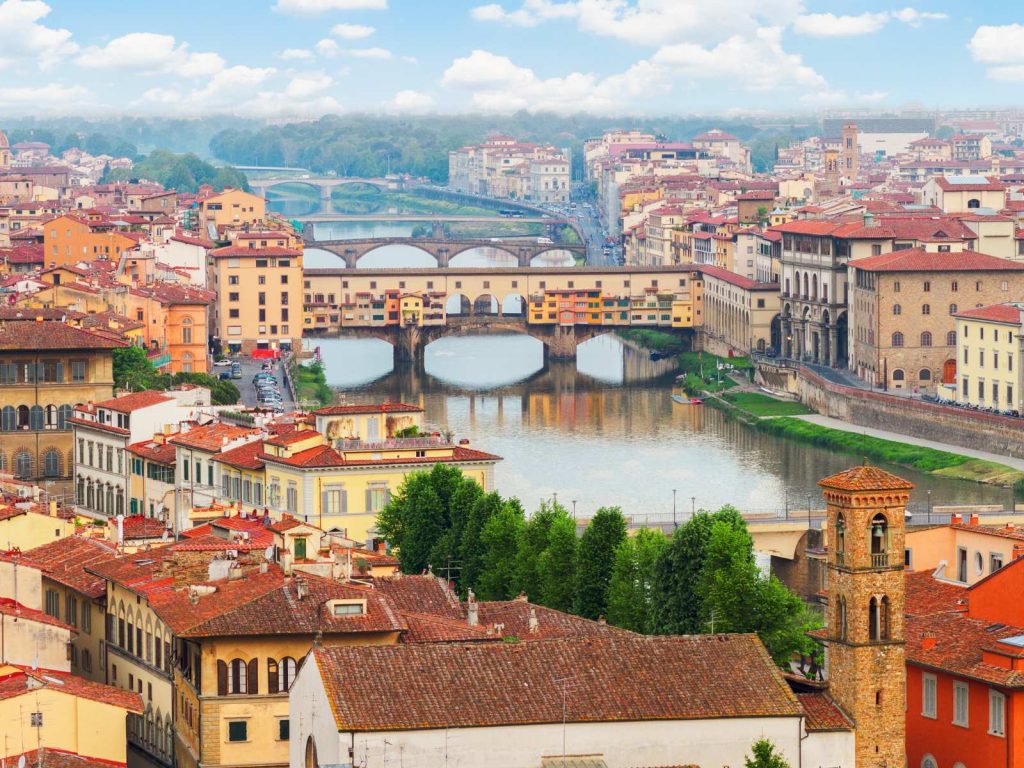
Where to stay in Florence
Budget:
- YellowSquare Hostel is my budget pick (top-rated social hostel with a kitchen, co-working space and even a rooftop pool!)
- Hostel Archi Rossi (a more basic backpacker hostel that’s cheaper but still has good reviews)
- B&B In Centro (cheap and cheerful B&B with a friendly host)
Mid-range:
- BB Hotels Aparthotel Michelangelo (stylish and well-priced apartments in a great location)
- Canto degli Scali (top-rated hotel and apartments near the Uffizi Gallery)
- numa I Felice Rooms & Apartments (design apartments that are cheap for Florence!)
Luxury:
- Palazzo Portinari Salviati Residenza D’Epoca (epitome of Italian style and opulence)
- Portrait Firenze (modern and elegant suites with river views)
- Hotel La Gemma (gorgeous hotel with aesthetic design and world-class service)
Cinque Terre, Italy
How to get there from Florence: Combo of 2-3 trains, total of 2h 45m-3h 30m
Optional add ons: Pisa for the Leaning Tower photos (very touristy but great for the family photo album!) or Lucca for a much more authentic and charming city break (both easy stops on the train journey)
How long to stay in the Cinque Terre: You could see the highlights in a day, but 2-3 days allows for a slower pace and more in-depth experience
Who should go there: Anyone who loves a pretty view, seafood fans, water babies and hikers
About Cinque Terre
These five dreamy villages found fame in the early days of social media and their popularity hasn’t slowed, they’re a mainstay of any summertime Italy trip.
The precariously-perched cliffside villages are well connected by a train line as well as 48 hiking trails and a ferry service (from end of March to early November), so you can really choose your own Cinque Terre adventure!

Things to do in Cinque Terre
- Visit each of the five villages: Riomaggiore, Manarola, Corniglia, Vernazza and Monterosso
- Hike the Sentiero Azzurro (Blue Trail) that links the villages, you can do the whole thing or just a segment. The last bit of the trail was been closed for years but opened in Feb 2025 (check here for official updates)
- Take a boat tour to see the villages from the sea
- Indulge in ocean-to-table seafood
- Sip Aperols and eat pesto pasta at Nessun Dorma (download the app to reserve a table)
- Take a dip at Monterosso’s beach, the only sandy beach in the Cinque Terre
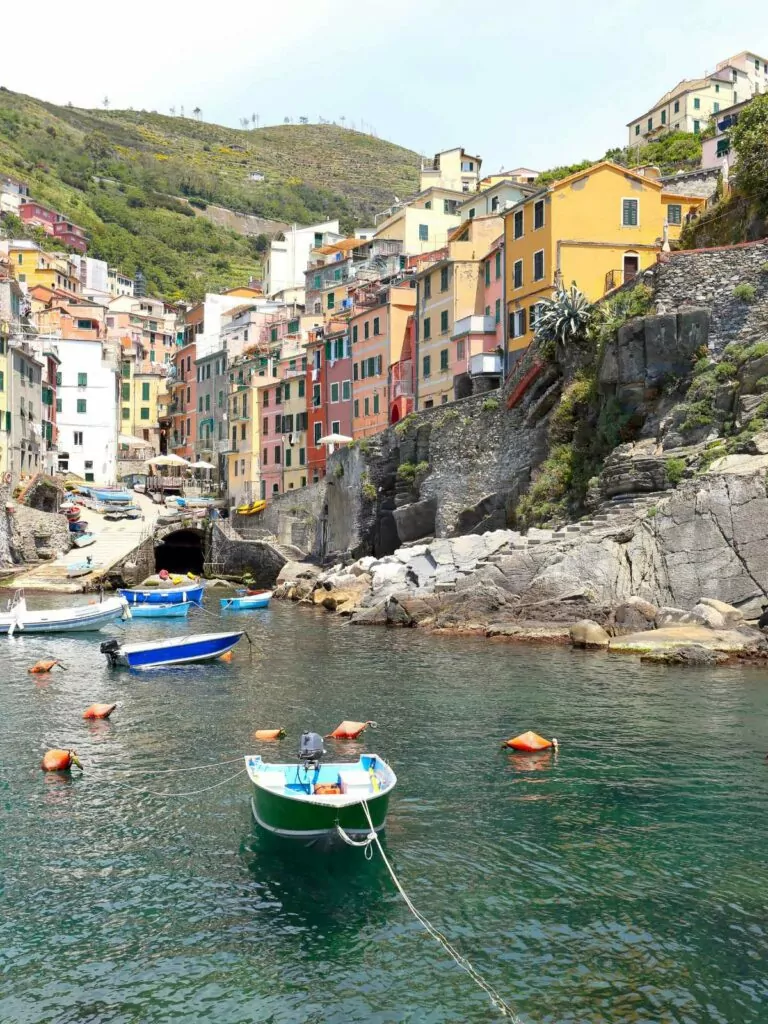
Where to stay in the Cinque Terre
Your options inside the villages are very limited and very expensive, the best places to stay are La Spezia and Levanto which both offer easy access to the Cinque Terre by train.
Budget:
- Costello (best hostel in La Spezia)
- Ostello Tramonti (very cheap backpacker hostel, out of the way but a bus links it with La Spezia train station)
- Casa Vacanza il Portico (budget-friendly apartment connected by bus and then train to the villages)
Mid-range:
- B&B Casa Celsi (very affordable B&B in central La Spezia)
- Allo Scalo Dei Mille (probably the cheapest actual Cinque Terre option, right by Riomaggiore Beach)
- Sotto Sale-5 Terre (another Riomaggiore option, light and bright with great reviews)
- Affittacamere Arbasia De Ma (surprisingly affordable studio apartments with unbeatable views)
Luxury:
- The Sunset Line (dreamy modern hotel rooms with coastal views)
- Il Sogno di Manarola by The First (romantic apartments and rooms in Manarola)
Genoa, Italy
How to get there from Cinque Terre: A direct train, 1h-1h15m
How long to stay: 1-2 days, longer if you just want good food and a chill vibe
Who should go there: Foodies (particularly pesto-lovers) and anyone keen for a more authentic Italy experience without tourist crowds
About Genoa
Often overlooked in favour of its more famous neighbours, Genoa offers a much more local vibe compared to the tourist hot spots on this itinerary. With world-class restaurants and bakeries, opulent landmarks and fantastic value for money, I would say Genoa is one of the most underrated cities in Europe.
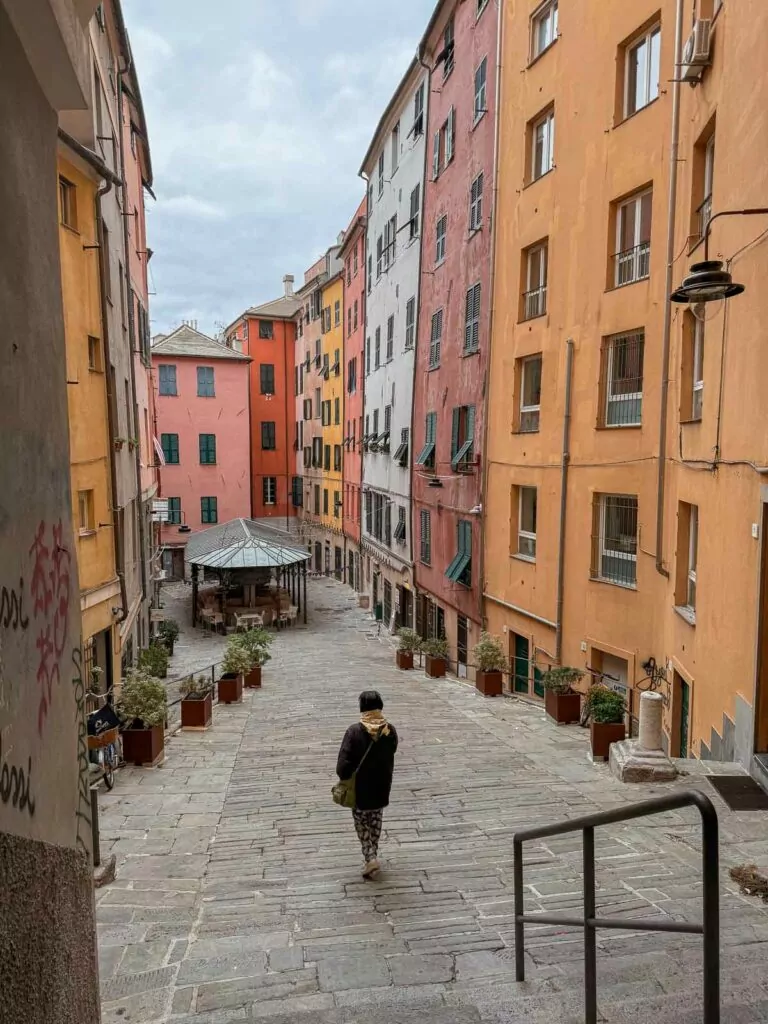
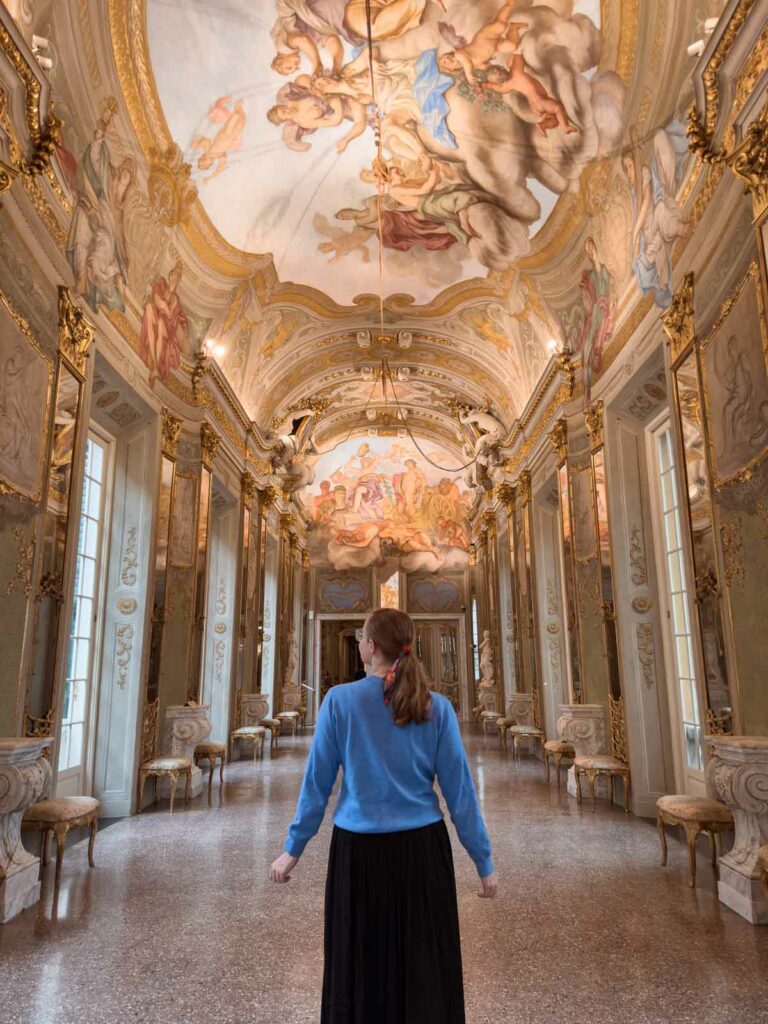
Things to do in Genoa
- Eat pesto! Pesto is honestly one of my favourite things in the world and Genoa is where it hails from. You’ll find pesto trofie (the traditional pasta to pair it with) on most menus, but the ones that really blew me away were Pastificio Artigianale di Canneto (cheap and cheerful, get the half-and-half with their walnut ravioli too), Trattoria delle Grazie (a bit fancy) and Trattoria dell’Acciughetta (casual family-run restaurant but the pesto blew me away)
- Join this top-rated food tour for the ultimate Genoa foodie experience
- Wander through the incredible halls of the Palazzo Reale
- Marvel at the golden ceiling of the Basilica della Santissima Annunziata del Vastato
- Get lost in the maze-like Caruggi (alleys of the old town) or take a walking tour to learn about the city’s history
- Head to the colourful fishing village of Boccadesse for sunset
- Catch the train or ferry to Portofino for a fancy day trip
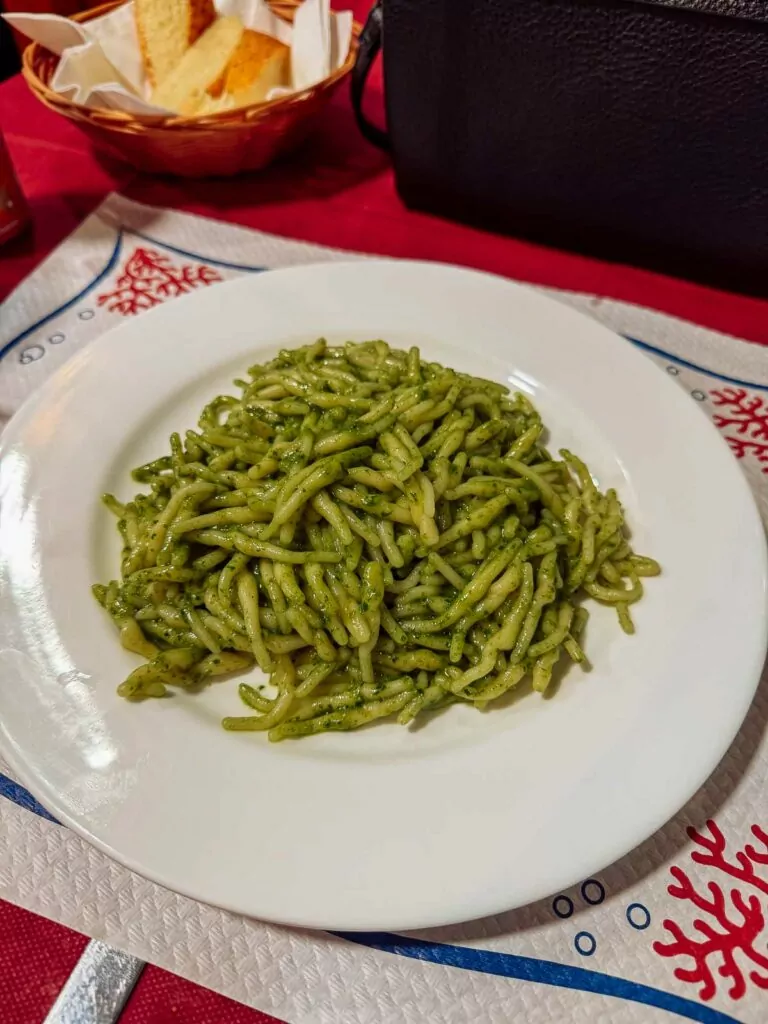
Where to stay in Genoa
Budget:
- Ostello Bello Genova (top-rated hostel in town and my personal recommendation, social vibe, right by the train station, big kitchen and lots of freebies like a welcome drink, pasta and fresh vegetables, earplugs and more)
- B&B Fossatello affittacamere (central location, clean and comfortable private rooms)
- B&B Blue Home (cheap and cheerful with good reviews)
Mid-range:
- Hotel Astoria (affordable hotel with great reviews for comfort and service)
- Hotel Doria (simple and stylish hotel right in the city centre)
- Locanda Villa Moderna (15 mins out of Genoa but a beautiful family-run hotel if you want a relaxing getaway)
Luxury:
- Grand Hotel Savoia (tasteful 5* hotel right by the train station)
- Grand Hotel Miramare (5* luxury hotel on the coast near Portofino)
- Hotel Bristol Palace (regal style hotel with world-class service)
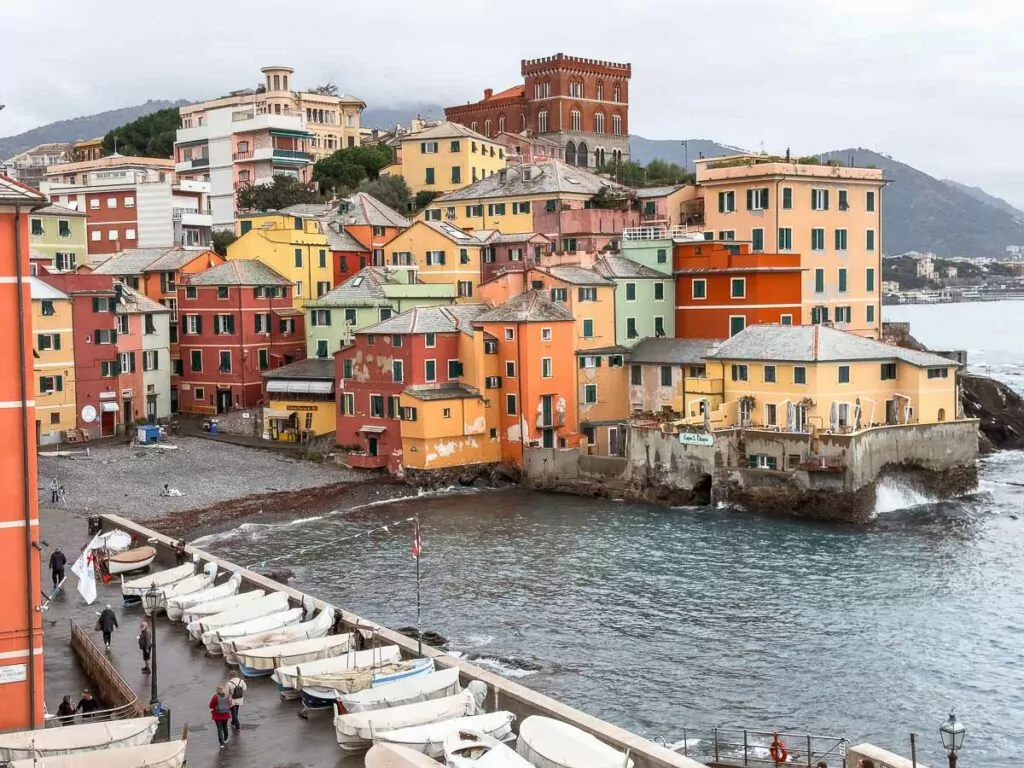
Turin, Italy
How to get there from Genoa: Direct train, around 2h
How long to stay: 2-3 days
Who should go there: All foodies but particularly those with an addiction to chocolate or truffles (the mushrooms, not the chocolate balls)
About Turin
Lovingly known as the Paris of Italy, Turin has grand boulevards, exquisite covered passageways and chocolatey treats around every corner. It’s another one that’s off the major tourist trail so you get great bang for your buck, as well as stunning landmarks that are nowhere near as busy as the better known cities.
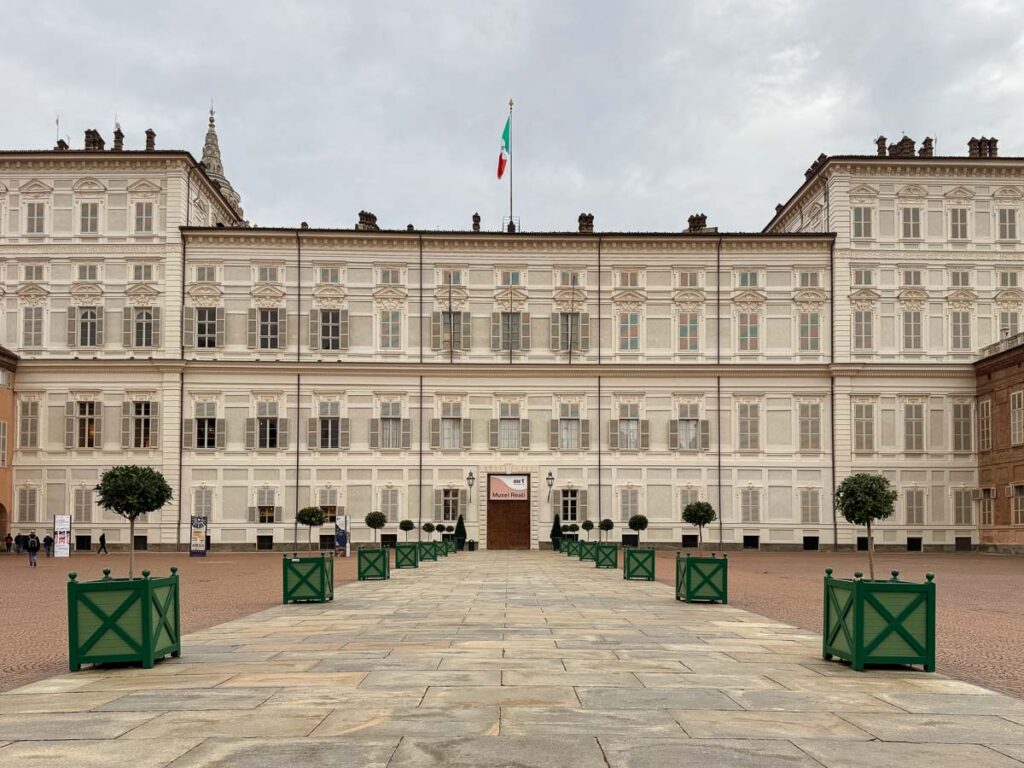
Things to do in Turin
- A chocolate tour has to be top of your list, either an organised one (worthwhile to learn about chocolate history) or a self-guided one to Caffarel, Il Gianduiotto, Guido Gobino and Peyrano
- Visit the Egyptian Museum, one of the best outside of Egypt
- Soak up the view from the top of the Mole Antonelliana, which you might recognise from the 2 cent euro coin
- Take a tour of the National Museum of Cinema and the Mole Antonelliana
- See how the Savoy dynasty lived at the Royal Palace of Turin
- Go truffle hunting in the woods of Piedmont if you’re there in the right season
- Eat life-changing truffle risotto at Ristorante Alba or Brün
- Spot cute sculptures in Valentino Park like the ‘Bench of the Lovers’
- Take a day trip to La Venaria Reale (the Versailles of Northern Italy!)
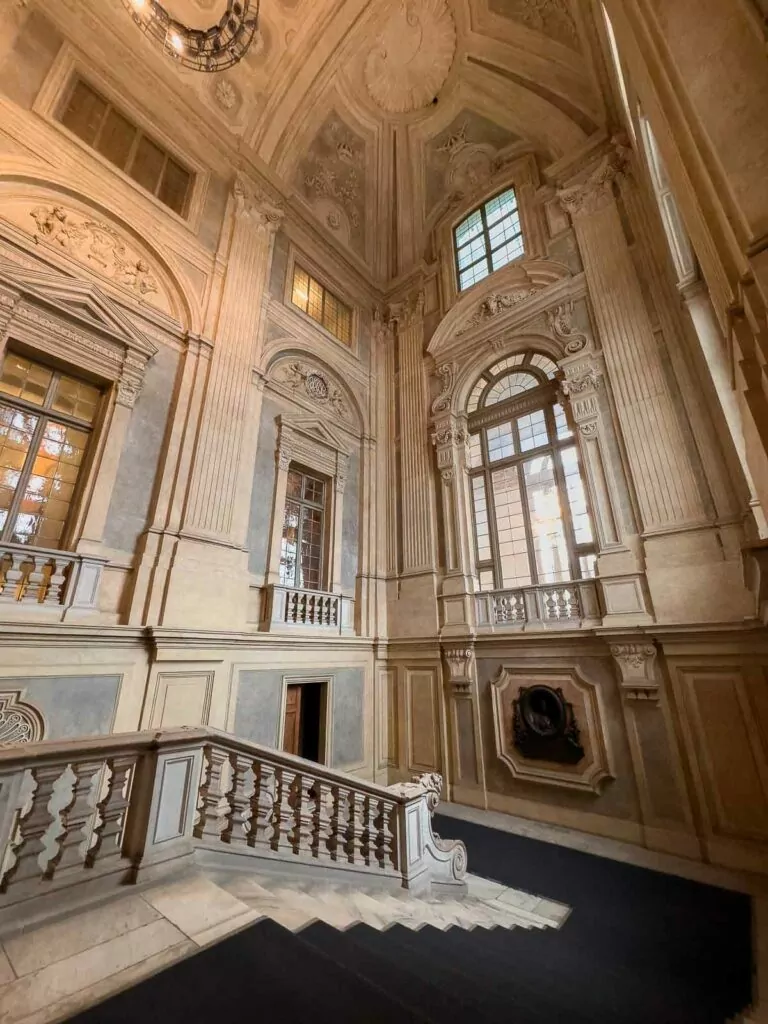
Where to stay in Turin
Budget:
- Tomato Backpackers is my recommended Turin hostel, really chill vibe with a kitchen, laundry facilities, hang out area with games, lots of work-friendly space and really comfy beds. Walking distance to the train station and lots of incredible food places nearby.
- Hotel Vittoriano is great for a budget hotel
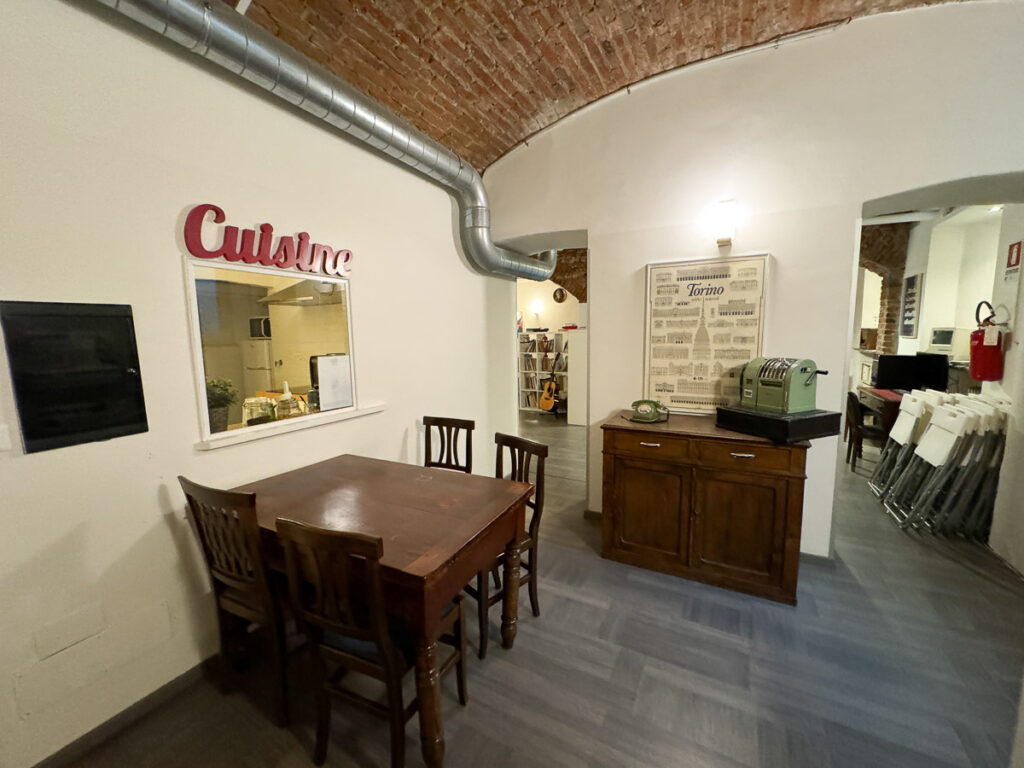
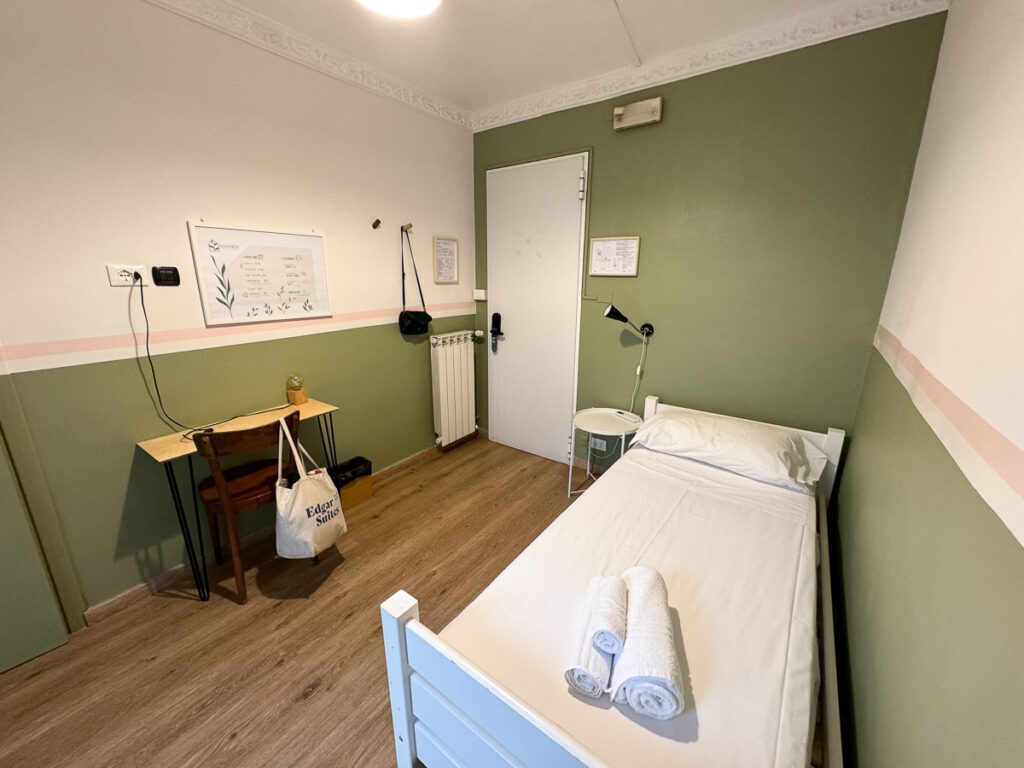
Mid-range:
- Liberty Hotel (dated style but very good reviews and affordable rooms)
- TURINHOMETOWN Apartments (fantastic reviews for their mid-range apartments)
- Porta Nuova Luxury Apartments (slightly fancier but still not too expensive)
Luxury:
- Royal Palace Hotel (channel your inner Savoy and treat yourself to a fancy stay)
- Principi di Piemonte (super stylish 5* with a beautiful wellness area)
Lake Como, Italy
How to get there from Turin: Combo of two trains with a change in Milan, 1h 50m-2h total
How long to stay: 2-3 days
Who should go there: Romantics looking for a dreamy escape, keen gardeners (or garden-goers!) and anyone craving a break from the cities
About Lake Como
Channel your inner George & Amal Clooney with a Lake Como getaway, where you’ll enjoy scenery featuring an epic mountain backdrop, palatial lakeside villas and perfectly manicured gardens bursting with colour. Springtime is particularly impressive!
Choose your base for exploring: Bellagio is the superstar, Varenna is equally charming but more laidback, Menaggio boasts world-renowned restaurants and the town of Como isn’t the most beautiful option but is very convenient with budget-friendly options.
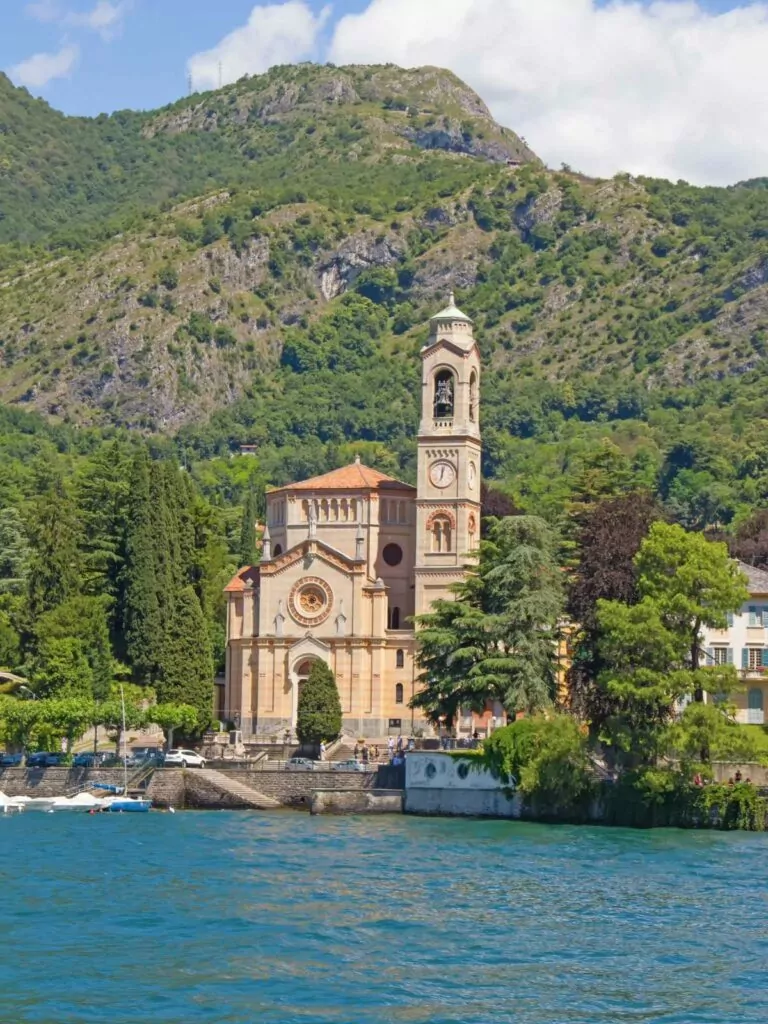
Things to do in Lake Como
- Admire the exquisite villa gardens, Villa Carlotta was my favourite but some other good ones are Villa del Balbianello and Villa Monastero
- Take a ferry to the other side of the lake or book a boat tour to see the villas and villages from the water
- Catch the funicular to Brunate for epic Como views
- Enjoy the slow-paced lakeside life
- Indulge in fresh seafood at a small trattoria, Trattoria del Porto is a top-rated option in Careno
- Do a day hike on the Sentiero del Viandante
- Take a water taxi to Isola Comacina, the only island in the lake
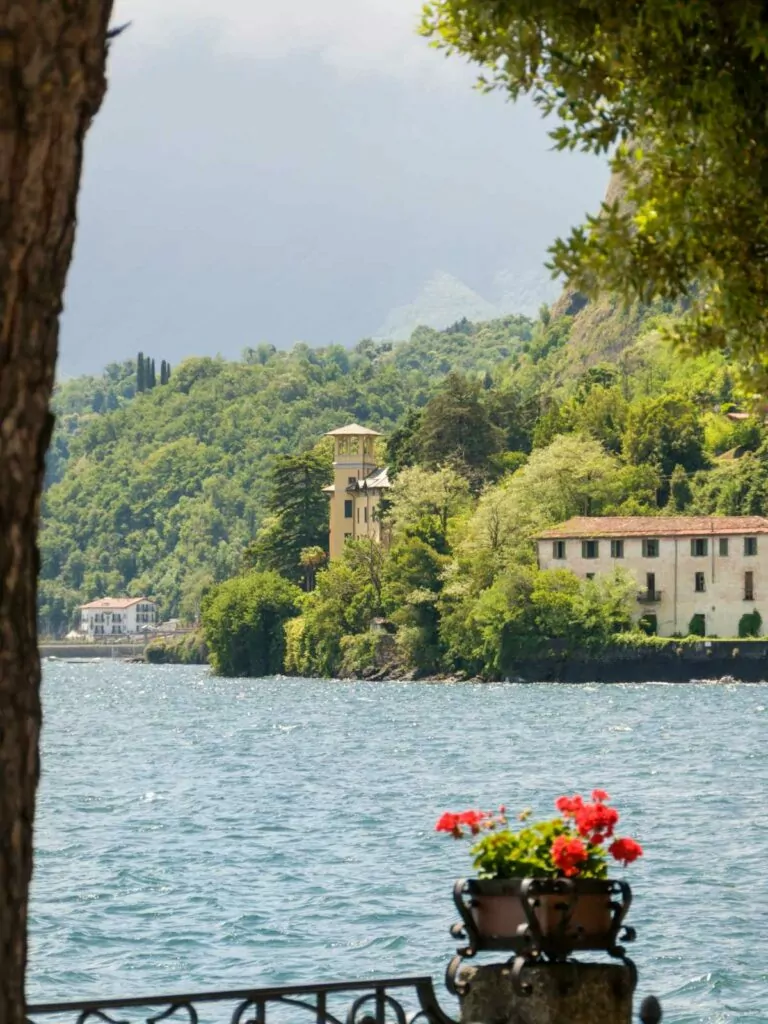
Where to stay in Lake Como
Budget:
- Ostello Bello Lake Como (top social hostel in Como)
- Lecco Hostel & Rooms (stylish dorms and private rooms in Lecco)
- Agriturismo La Derta (best-rated agriturismo option around Lake Como)
Mid-range:
- Hotel Adler (best-rated affordable hotel in Menaggio)
- Hotel Fioroni (best-rated affordable hotel in Bellagio)
- Hotel Alberi (best-rated affordable hotel in Lecco)
- Hotel Vista Lago (best-rated affordable hotel in Brunate)
Luxury:
- Mandarin Oriental, Lago di Como (stunning luxury option on the lake)
- MUSA Lago di Como (modern 5* hotel away from the crowds)
- Grand Hotel Tremezzo (Wes Anderson level of aesthetically pleasing!)
The Bernina Express from Tirano (Italy) to St Moritz (Switzerland)
(Not technically a destination on this Northern Italy and Switzerland itinerary but definitely a highlight!)
How to get to the Bernina Express from Lake Como:
Two options depending on the time of year/day of the week.
- Catch a train from Como San Giovanni to Milan (40m) and then from Milan to Tirano (2h 30m), available year-round
- Catch a train from Como San Giovanni to Lugano across the Swiss border (35m), then catch the Bernina Express Bus to Tirano (3h), available daily during the summer season, Thursday to Sunday during shoulder season and not available in winter (more info in my Bernina Express guide)
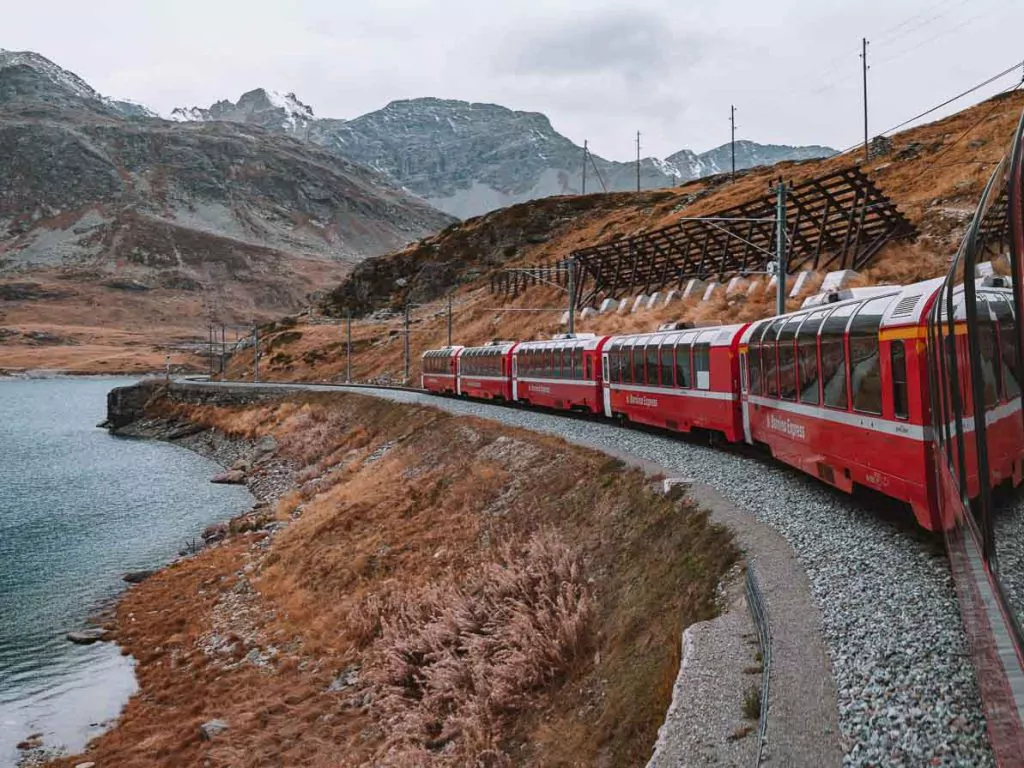
What is the Bernina Express?
The Bernina Express is of the most scenic train rides in the world, and the best way to link Northern Italy and Switzerland! It’s only a 2.5 hour journey from Tirano in Italy to St Moritz in Switzerland, or 4h 15m for the full journey to Chur.
👉🏼 Read more: All you need to know about the Bernina Express
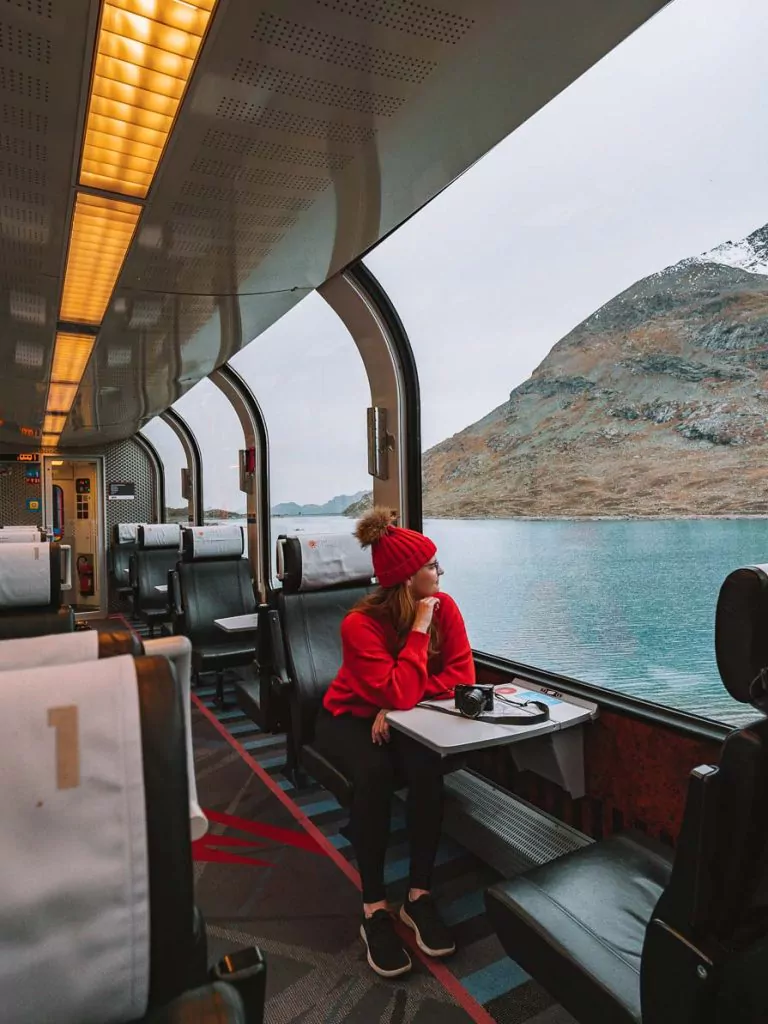
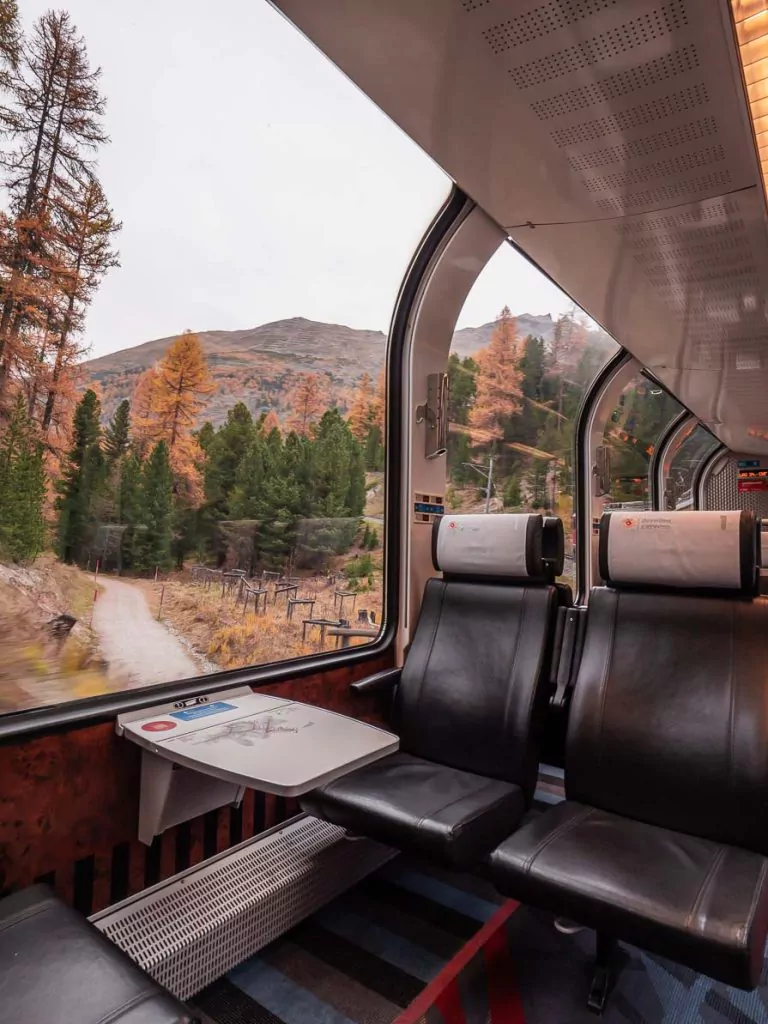
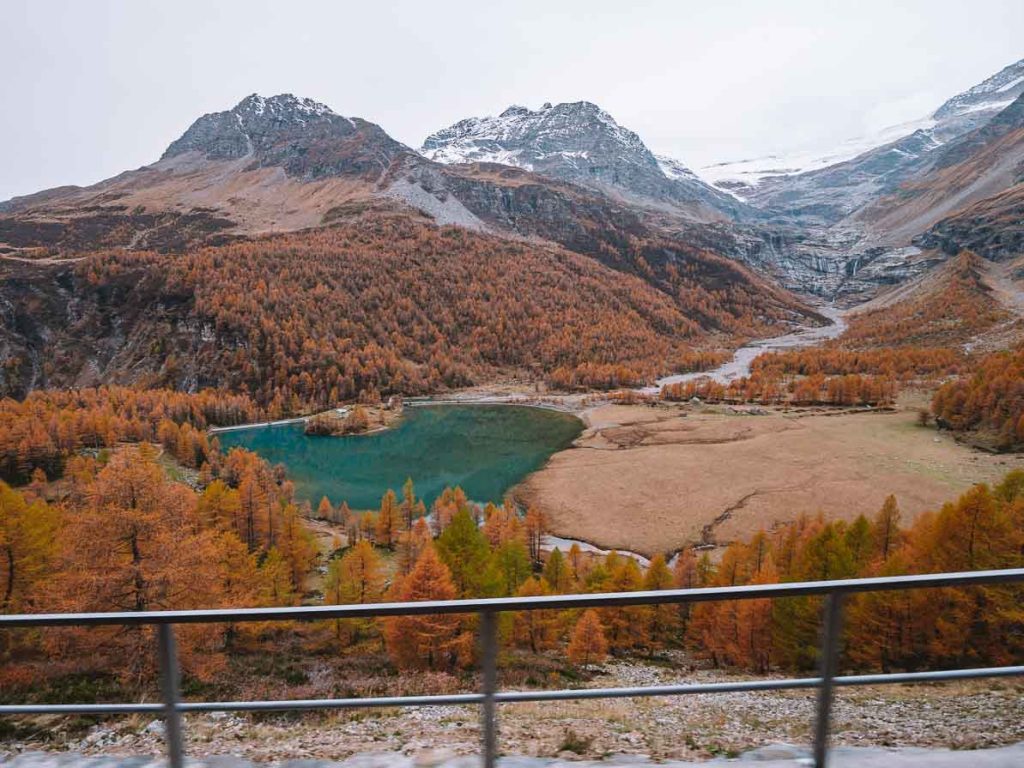
St Moritz, Switzerland
How long to stay: 1-2 days
Who should go there: Skiers/snowboarders in winter, hikers in summer or anyone looking for a luxe alpine experience year-round
About St Moritz
St Moritz is a chic ski resort town that actually invented winter tourism in the 1860s. It wasn’t my favourite place in Switzerland (I’m too poor to really enjoy it haha) but it’s a good overnighter between the Bernina Express and your next epic train journey, the Glacier Express.
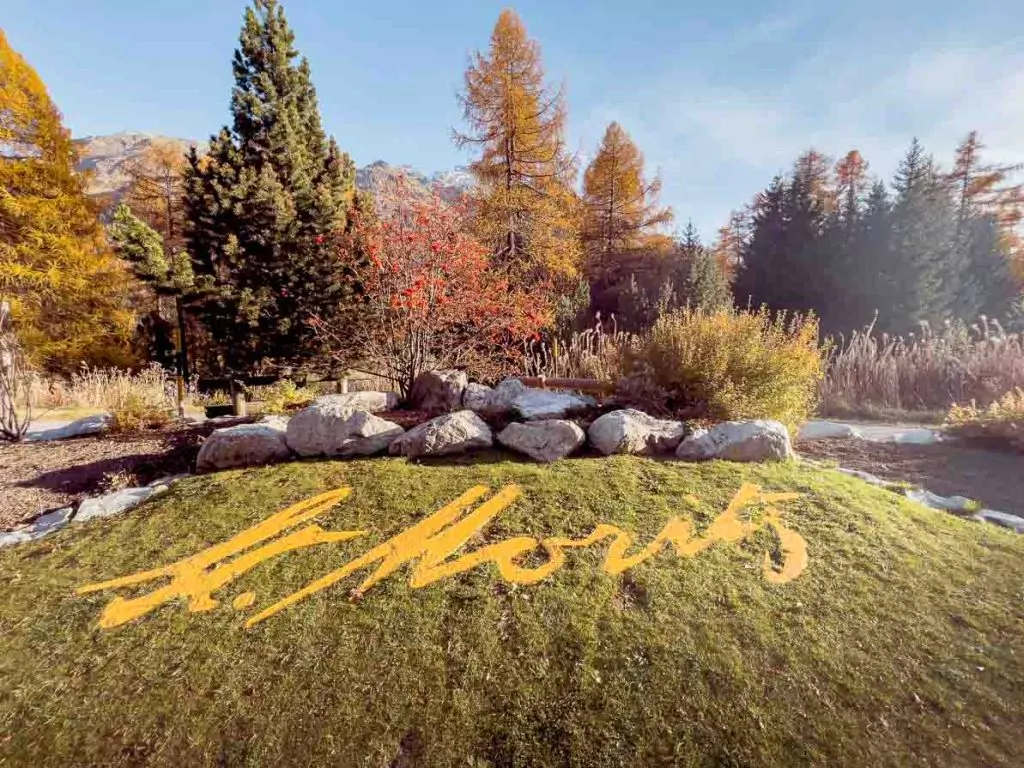
Things to do in St Moritz
- Walk the lake trail, it’s an easy 4.4km loop
- Ski in winter!
- Get pampered with a visit to one of the many day spas in town
- Sample upscale restaurants, the View at Hotel Grace La Margna and Restaurant Krone are two top-rated options
- Browse designer boutiques
Where to stay in St Moritz
Unique:
- Sternwarte by Randolins is a SUPER unique accommodation option, you sleep inside a rotating observatory! One of the coolest places I’ve ever stayed for sure. You get access to a small lobby area with a mini fridge, kettle and private bathroom, and then you climb the ladder to reach your bedroom inside the observatory dome. There’s controls for you to rotate, you can open the window for stargazing or mountain views, and there’s a heater to keep you nice and warm. You also get access to Randolins wellness area with a sauna, steam room and indoor and outdoor pools. One for the bucket list!
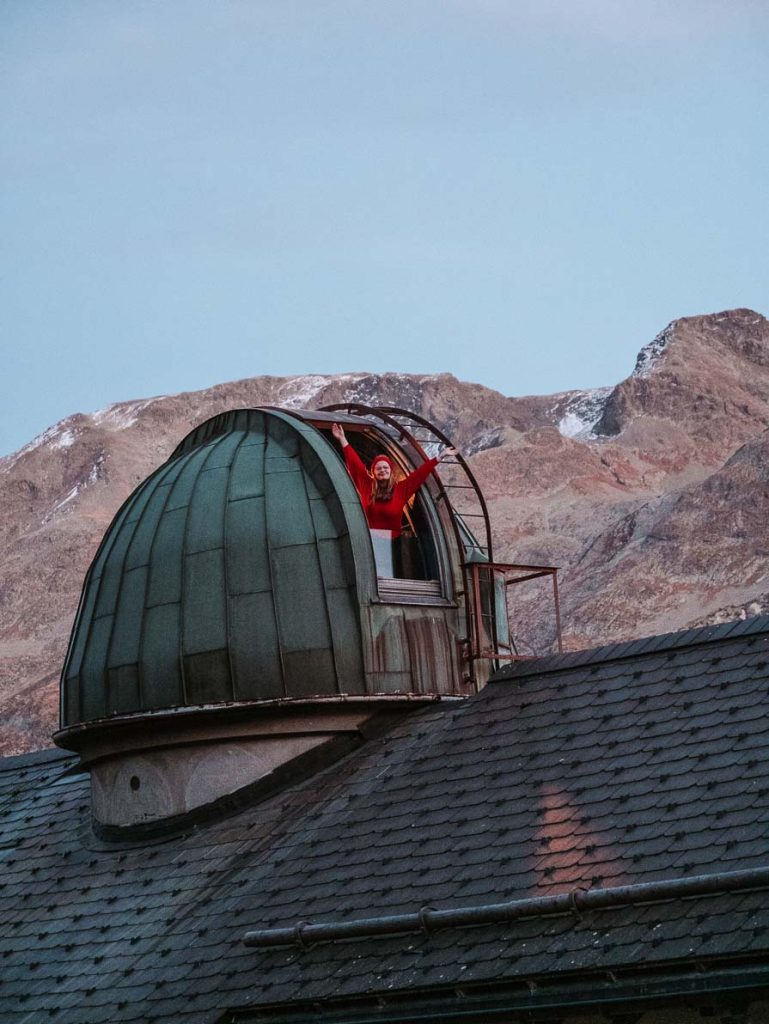
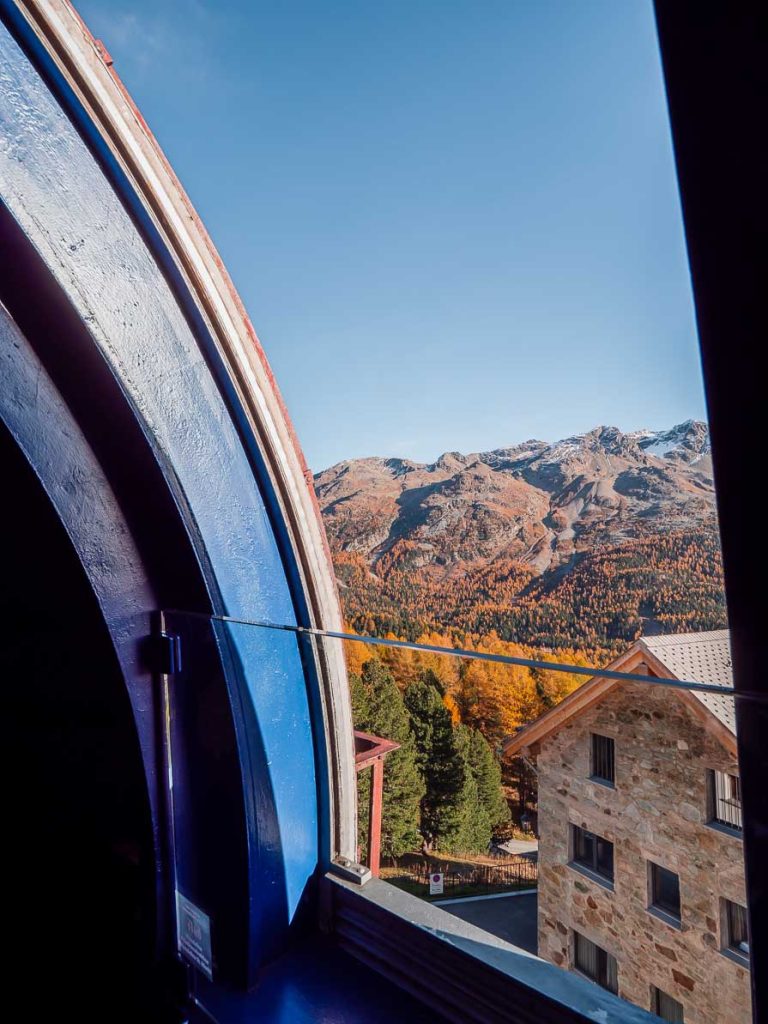
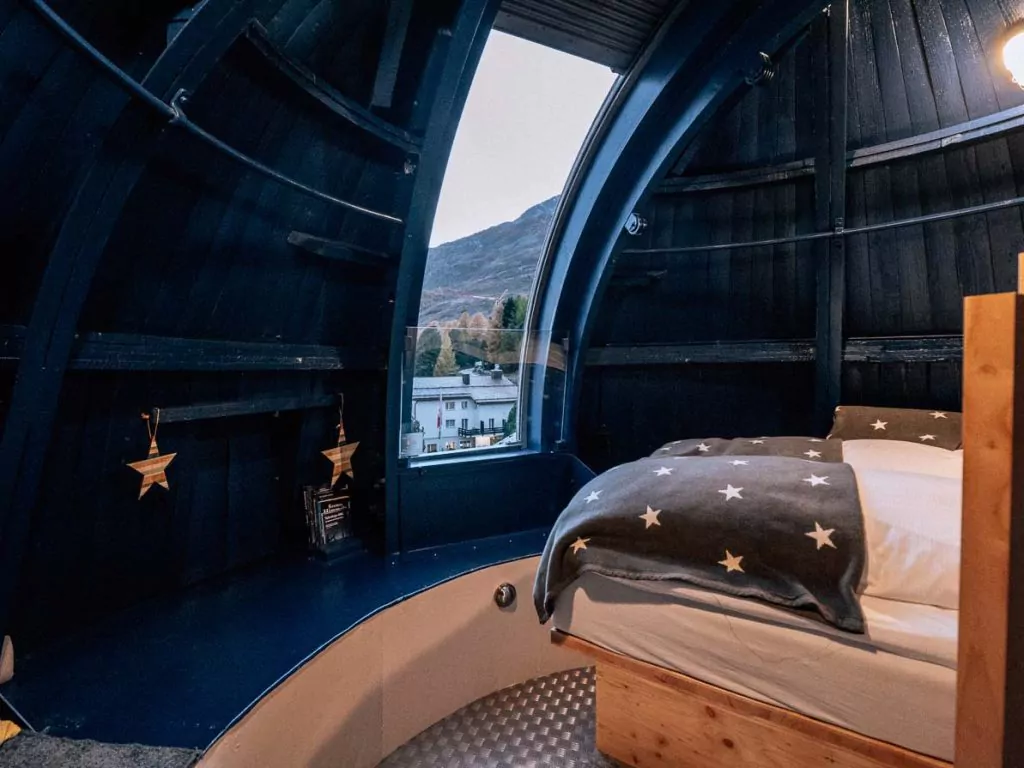
Budget:
- St Moritz Youth Hostel (basic but cheapest place in St Moritz)
- Hotel Waldhaus am See (cheapest hotel with decent reviews, right by train station)
- B&B St Moritz (another affordable option, simple but comfortable)
Mid-range:
- Berghotel Randolins (modern rooms, epic views and a beautiful wellness area)
- Crystal Hotel Superior (super central, fantastic breakfast)
- Hauser Hotel St. Moritz (light and bright rooms, great reviews)
- Boutique Hotel Cervus (a bit more expensive that the other mid-range options but with more character)
Luxury:
- Suvretta House (traditional Swiss hospitality coupled with elegant design and insane views)
- Hotel Grace La Margna (new boutique hotel, brilliant reviews online)
- Kulm Hotel (part of the Leading Hotels of the World brand, which really tells you everything you need to know!)
Zermatt, Switzerland
How to get there from St Moritz: Another bucket list train journey, the Glacier Express! It’s the slowest ‘express’ train in the world but you’ll be grateful for that when you see the views, it’s a full eight hours of lush valleys, alpine passes and dollhouse-looking villages. I’ve got all you need to know about it in my Glacier Express guide.
How long to stay in Zermatt: 2-3 days
Who should go there: Outdoor adventurers, nature lovers, luxury travellers looking for a cosy getaway, or anyone seeking a traditional mountain village
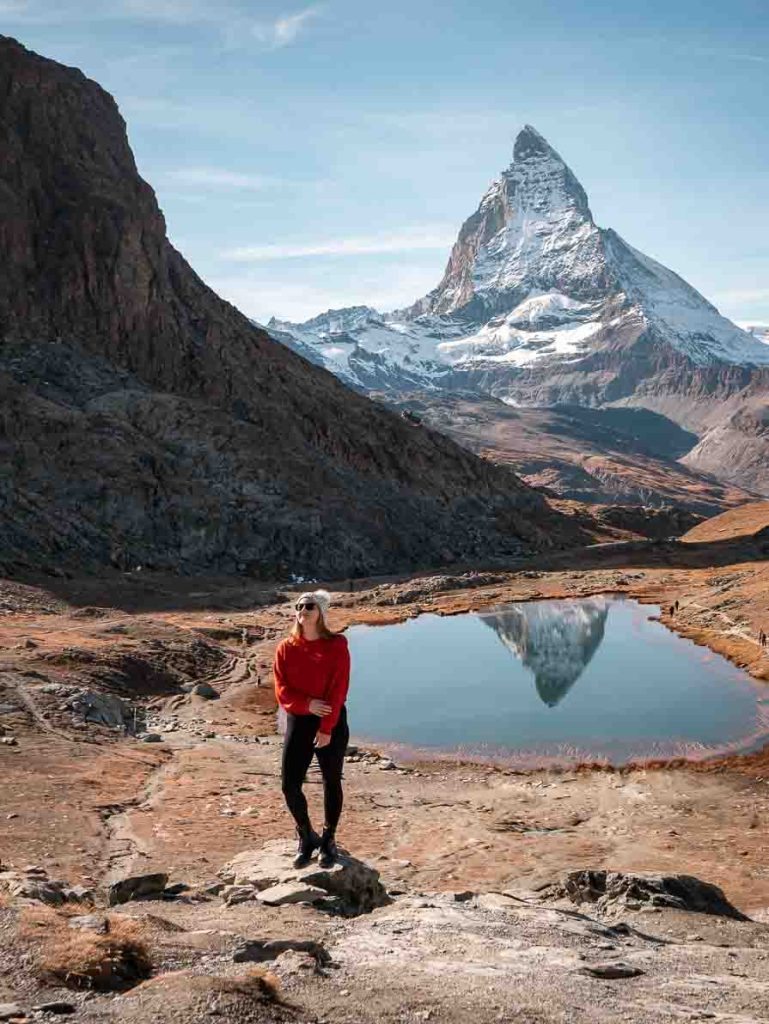
About Zermatt
Nestled at the foot of the mighty Matterhorn, Zermatt is the quintessential Swiss alpine village, with traditional wooden chalets, endless mountain adventures on your doorstep and an easygoing vibe. It’s absolutely stunning year-round, with magical colours in autumn, a blanket of snow in winter, beautiful blooms in spring and long, sunny days in summer.
It’s car-free so if you’re driving around Northern Italy and Switzerland you’ll have to park in a nearby village and catch the train.
👉🏼 Read more: The ultimate five day Switzerland itinerary
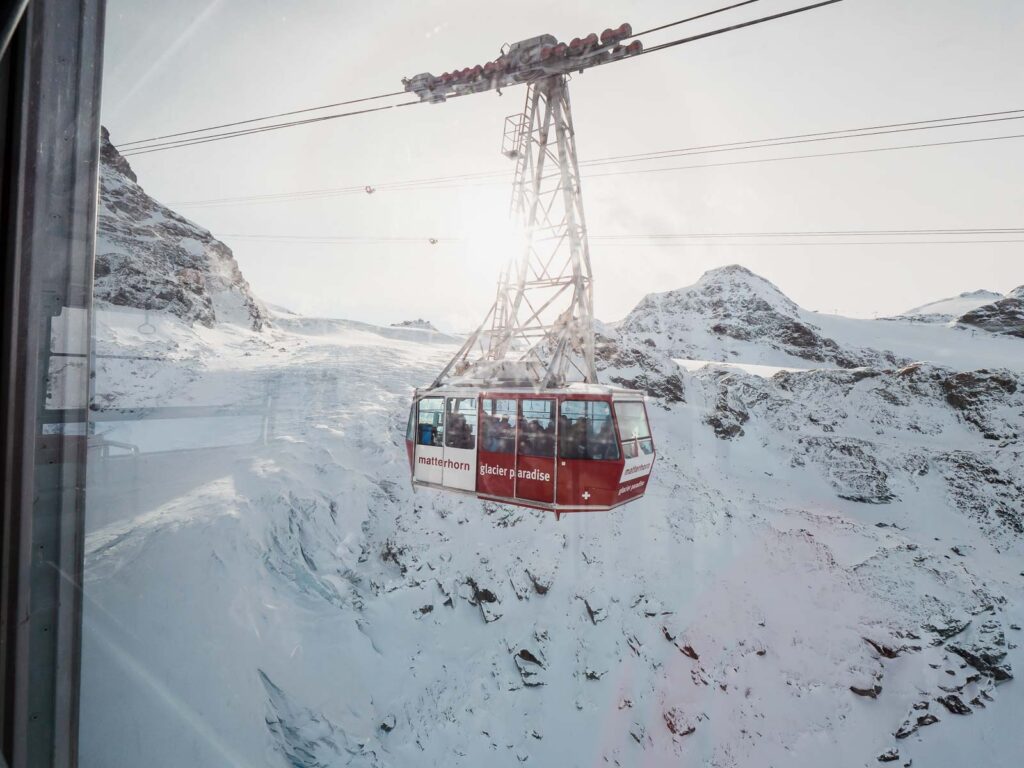
Things to do in Zermatt
- Catch the Gornergratbahn mountain train to the top of Gornergrat for the best view of the Matterhorn (sit on the right on the way up!)
- Walk from the top station down to Riffelsee Lake to witness the perfect reflection of the Matterhorn on a calm day
- Paraglide for unbeatable birds-eye views
- Hit the slopes in winter (or Matterhorn Ski Paradise year-round), then let your hair down while enjoying the buzzing apres-ski scene
- Take Europe’s highest cable car to Matterhorn Glacier Paradise, see if you can count all 29 4000m peaks!
- Hike the super scenic Five Lakes Walk
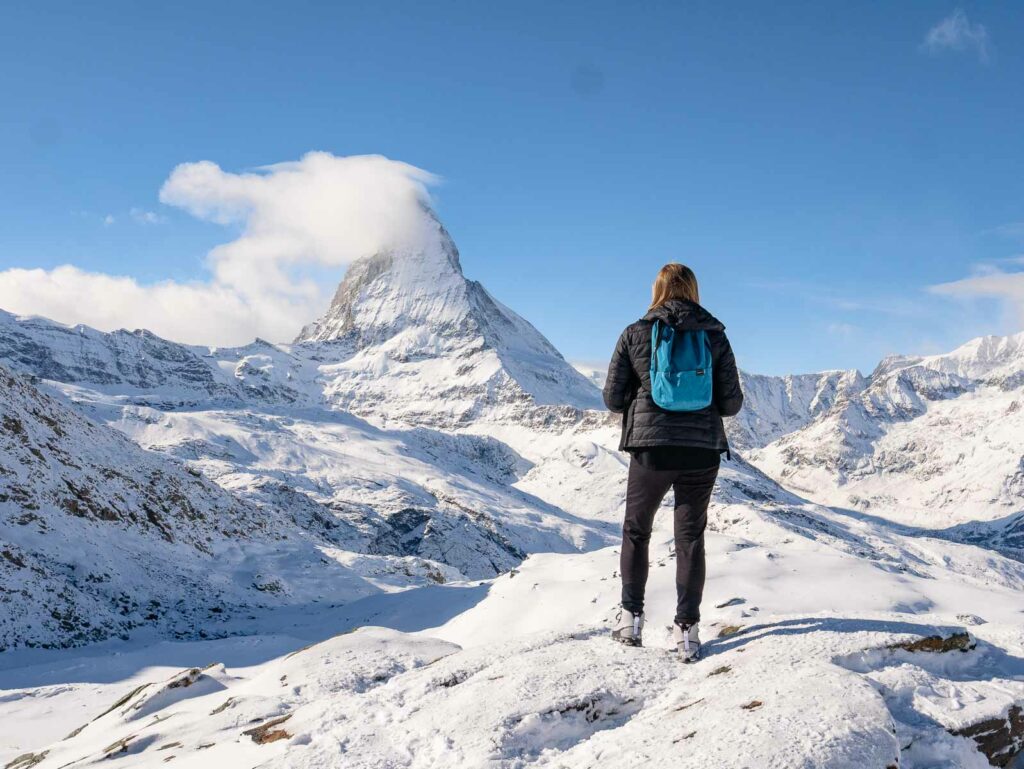
Where to stay in Zermatt
Budget:
- Hotel Bahnhof (comfortable dorms + cosy private rooms, guest kitchen, easy access to the train station)
- Annex Antika (cheap and cheerful rooms with access to Antika Hotel’s wellness area and buffet breakfast, excellent value for money)
- Zermatt Youth Hostel (back to basics but the top-rated option in the backpacker budget category)
Mid-range:
- Carina Design&Lifestyle Hotel (very fancy dorm rooms, this is the definition of ‘glampacking’!)
- Hotel Jägerhof (traditional chalet, 3*)
- Resort La Ginabelle (4* hotel with wellness facilities)
Luxury:
- Hotel ZERMAMA is my favourite place to stay in Zermatt, they have loads of thoughtful details like in-room yoga mats, a DIY fondue set and cosy faux fur coats for cold nights on the balcony eating fondue with said fondue set. Highly, highly recommend.
- The Omnia (5* hotel with dreamy spa complex)
- Riffelalp Resort (top-rated 5* ski-in ski-out resort with insane Matterhorn views)
- CERVO Mountain Resort (ultra-stylish après ski resort)
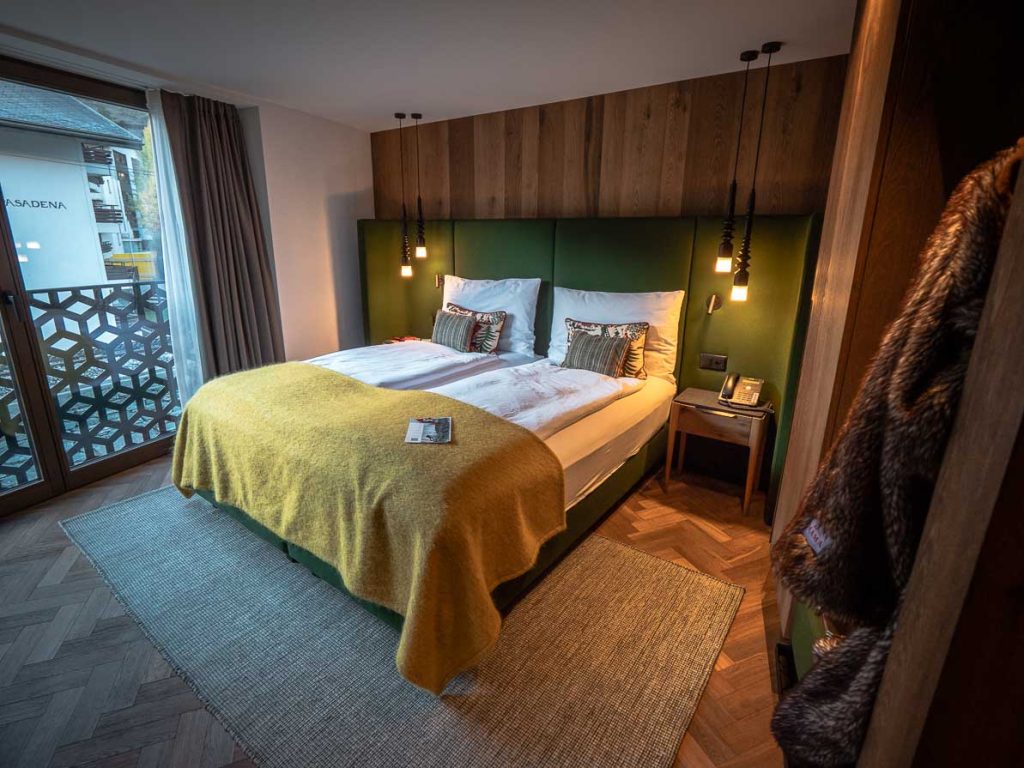
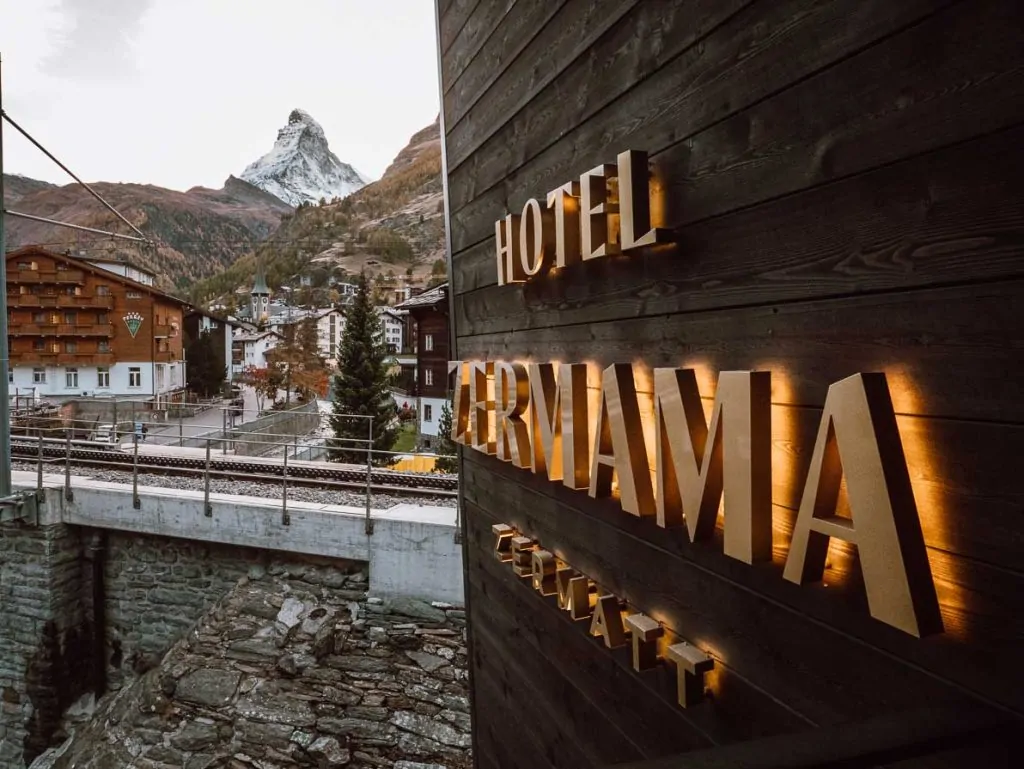
Interlaken, Switzerland
How to get there from Zermatt: Two options! The quick and easy way is a three train combo with changes in Visp and Spiez (lots of travellers will be making the same changes, it’s super simple), or the scenic way is to go from Zermatt to Visp to Montreux (2h 40m total) and then catch the iconic GoldenPass Express from Montreux to Interlaken (3h 15m).
How long to stay: 2-4 days
Who should go there: Thrill seekers, mountain lovers, anyone wanting classic Swiss scenery without the hefty price tag of the mountain resorts
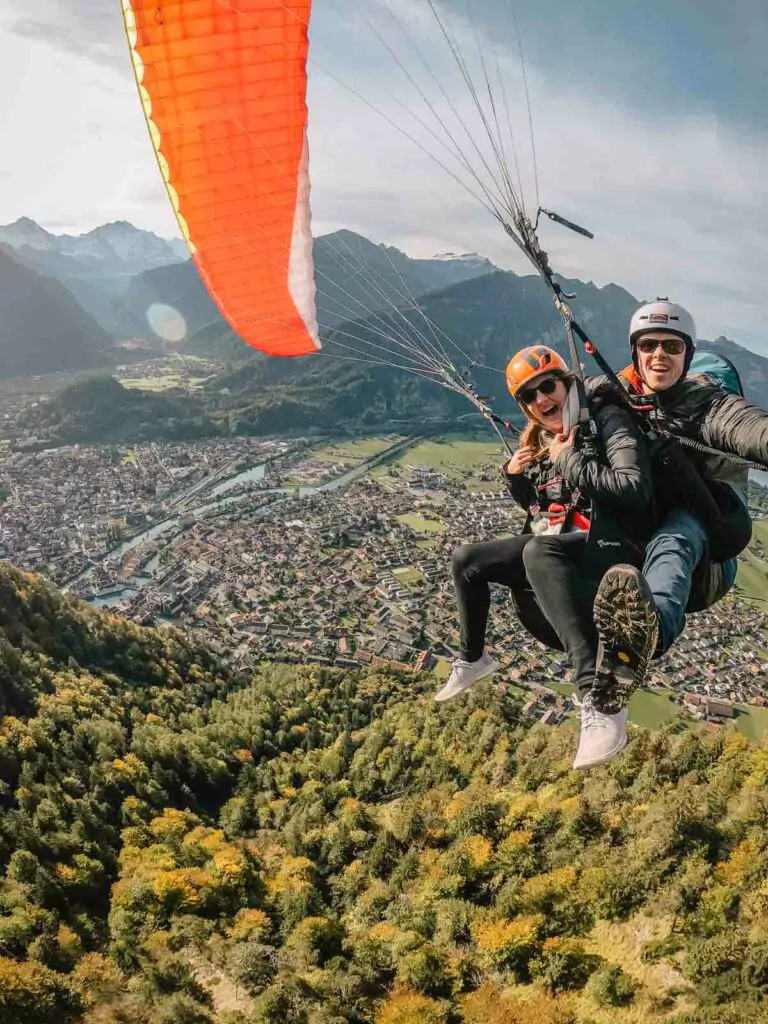
About Interlaken
Interlaken sits between two sparkling lakes and countless mountains, making it the perfect base for some of Switzerland’s most epic outdoor adventures. It’s certainly not as charming as the alpine havens of Zermatt or St Moritz, but it does offer pretty good value for money (comparatively!) and easy access to excursions like Jungfraujoch, Grindelwald-First and Harder Kulm.
If you do want to stay somewhere with more character, base yourself somewhere nearby like Grindelwald or Lauterbrunnen (or split your time between there and Interlaken).
👉🏼 Read more: The ultimate 10 day Switzerland itinerary
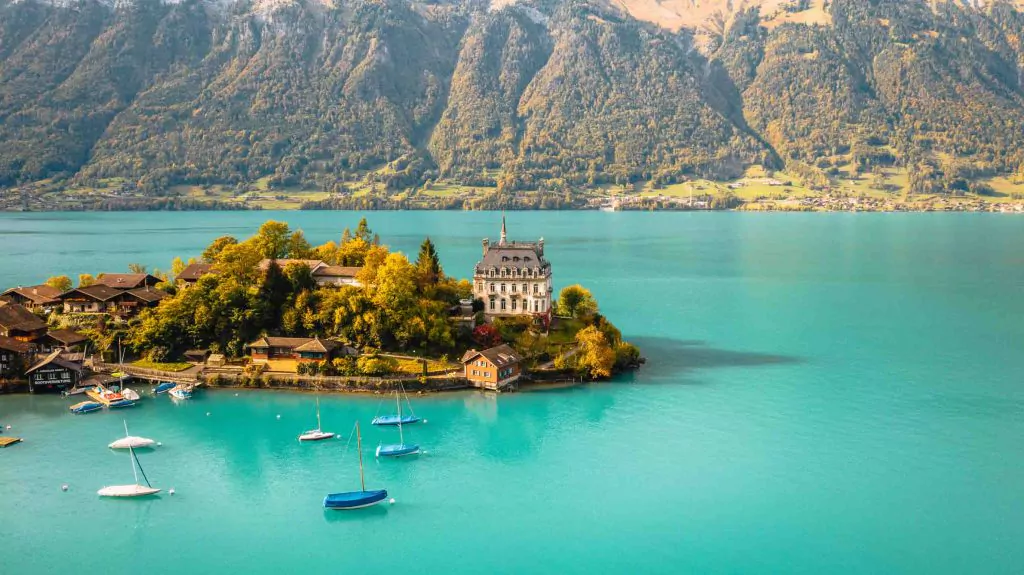
Things to do in Interlaken
- Take the train up to Jungfraujoch, Europe’s highest train station, known as the ‘Top of Europe’
- Do a lake cruise or kayak trip, you won’t believe how blue the water is
- Paraglide for the best combo of mountain, lake and city views along with a pump of adrenaline (this was one of the best things I’ve ever done on my travels!)
- Or try canyoning or white water rafting as another thrill option
- Catch the funicular up to Harder Kulm, the best viewpoint in Interlaken
- Meander through fairytale mountain villages like Lauterbrunnen, Murren or Grindelwald
- Take the gondola to Grindelwald-First for ziplining, a suspended Cliff Walk or some downhill mountain scootering
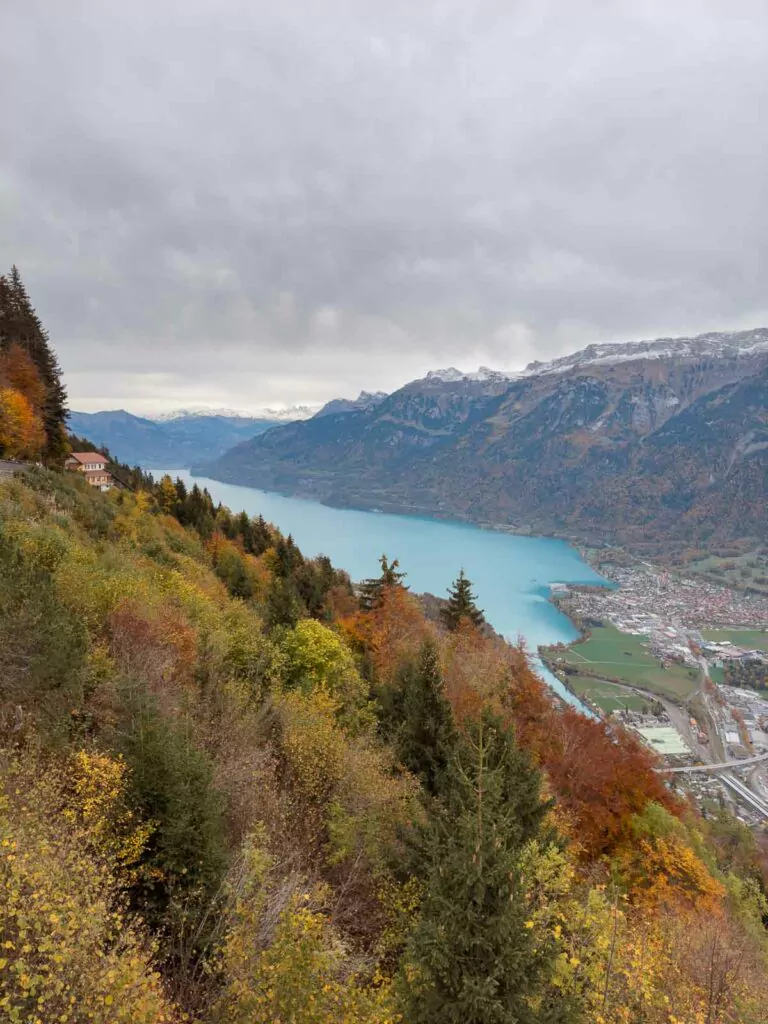
Where to stay in Interlaken (or nearby)
Budget:
- Backpackers Villa Sonnenhof is the best hostel in Interlaken, simple but really comfortable, lovely staff and great facilities (huge kitchen, games room, co-working space)
- Arnolds B&B in Interlaken (cheap guesthouse with lovely views)
- Valley Hostel in Lauterbrunnen (budget option in the maybe most picturesque village in the world)
Mid-range:
- Swiss Inn & Apartments in Interlaken (top-rated 3* hotel)
- Hotel Spinne Grindelwald (the cheapest hotel in Grindelwald that has a pool/spa)
- Hotel Interlaken (4* hotel with cosy and affordable rooms)
Luxury:
- Bergwelt Grindelwald is my top pick if you want to treat yourself, staying here was a dream! 4* but feels like a 5*, stunning interiors, super serene wellness area, incredible mountain views and a brilliant on-site restaurant.
- Victoria-Jungfrau Grand Hotel & Spa in Interlaken (iconic 5* hotel right in the middle of town with rich history and a heavenly day spa)
- BEATUS Wellness & Spa Hotel (9km from Interlaken on the shore of Lake Thun, 5* luxury hotel)
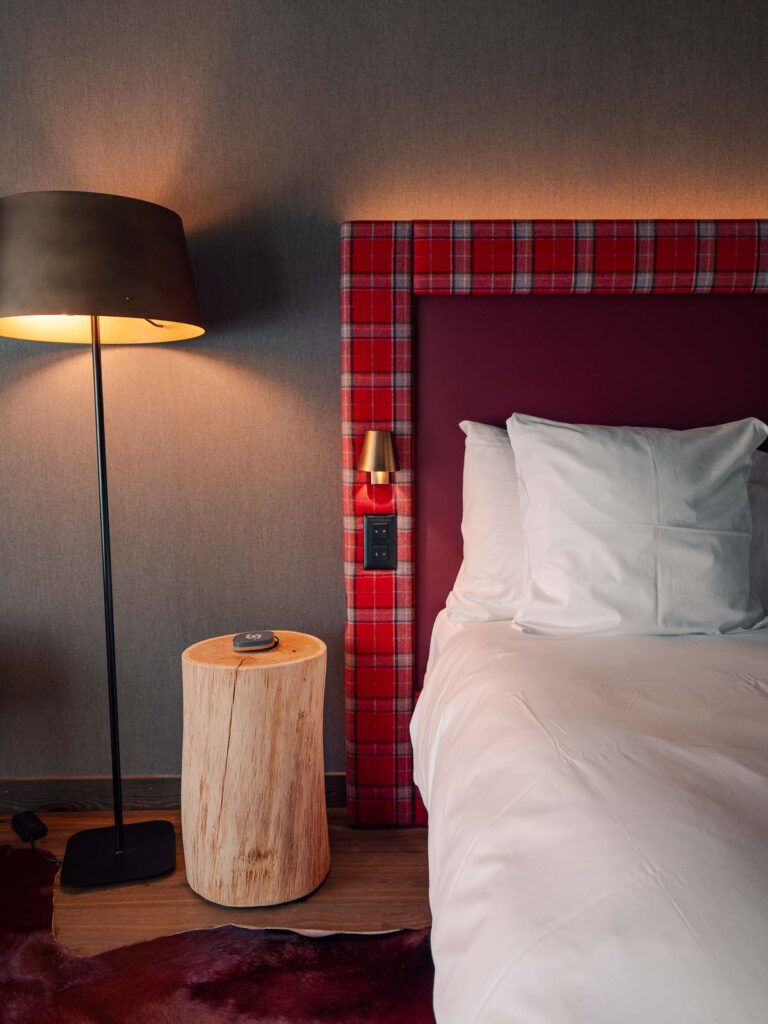
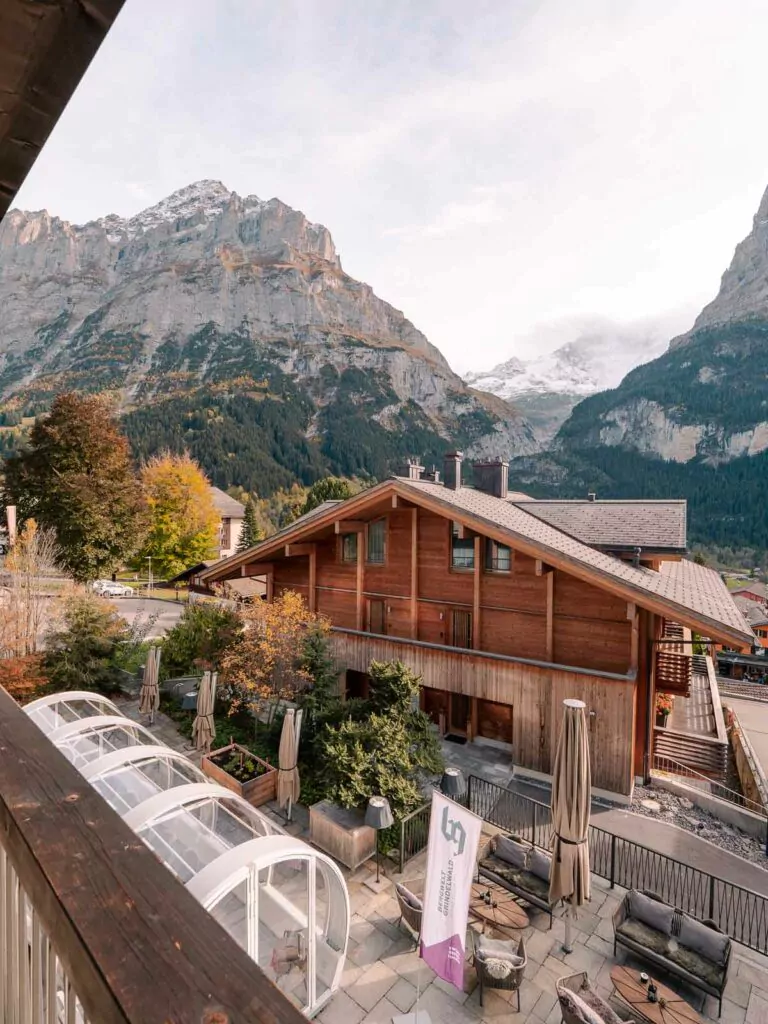
Lucerne, Switzerland
How to get there from Interlaken: Take the Luzern-Interlaken Express, 1h 50m
How long to stay: 2-3 days
Who should go there: History buffs, anyone that loves a good mountain viewpoint, travellers looking for a base to explore central Switzerland
About Lucerne
Lucerne is a storybook town if I ever saw one, with a well-preserved medieval old town sitting on the lake and an endless panorama of mountains surrounding it. The city itself is classy and enchanting, and it offers quick and easy access to four major mountain peaks (and plenty more that are lesser known).
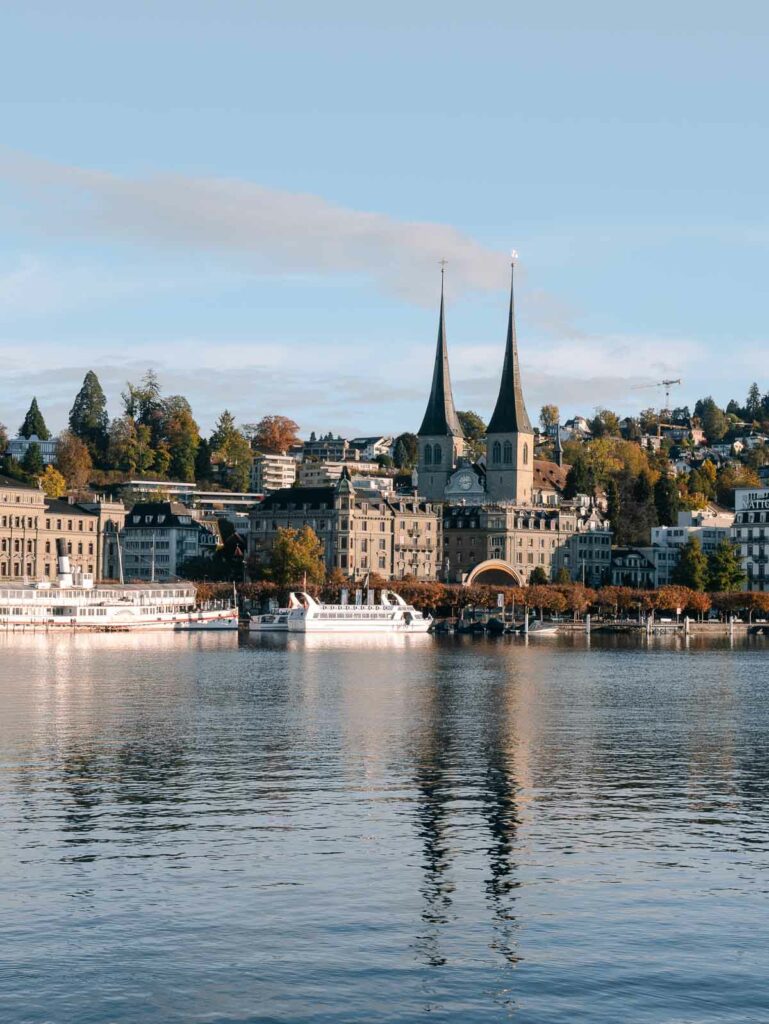
Things to do in Lucerne
- Head to the mountains! The best options from Lucerne are Pilatus, Titlis, Stanserhorn and Rigi (and I’ve got a Lucerne mountain comparison guide to help you decide which ones to visit)
- Join a city tour to learn about Lucerne’s medieval history, there’s this walking & boat tour, a self-guided walking tour & scavenger hunt, or I love the look of this top-rated Night Watchman Historical Tour
- See the city and mountains from a lake cruise
- Learn about trains, planes and boats at the Swiss Museum of Transport
- Experience local cuisine a food tour or get amongst the wine scene with a small group wine tasting tour
- Join a photography walking tour if you’re a budding shutterbug
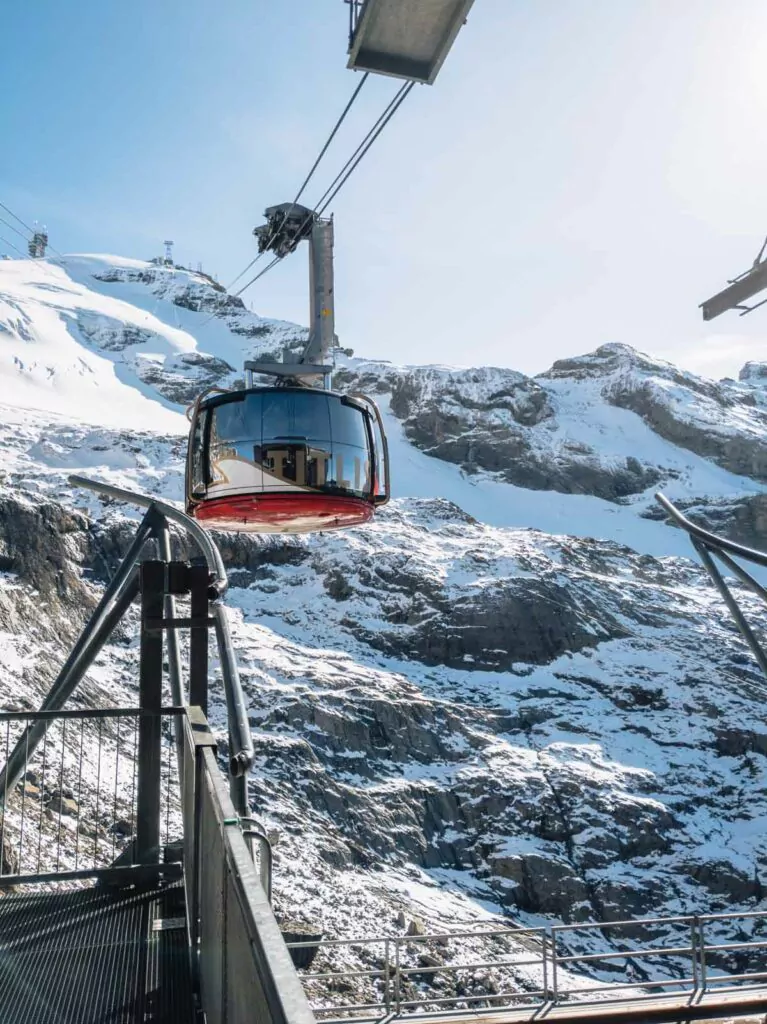
Where to stay in Lucerne
Budget:
- Backpackers Luzern (cheap and cheerful)
- Hotel Sonnenberg (top-rated budget hotel out of the city but easily reached by funicular)
- Hotel Beau Séjour Lucerne (simple budget hotel with great value private rooms)
Mid-range:
- The Lubo (smart hotel right in the old town, super spacious with a kitchenette and access to laundry facilities which is rare in Swiss city hotels)
- Hotel des Balances (classy 4* hotel with fantastic views)
- Hotel Rebstock (comfortable 3* full of character)
Luxury:
- Lucerne Lake View Apartments (best option in town if you want an apartment)
- Bürgenstock Hotels & Resort (25 mins from Lucerne, alpine luxury hotel)
- Hotel Villa Honegg (a bucket list stay thanks to its famous infinity pool)
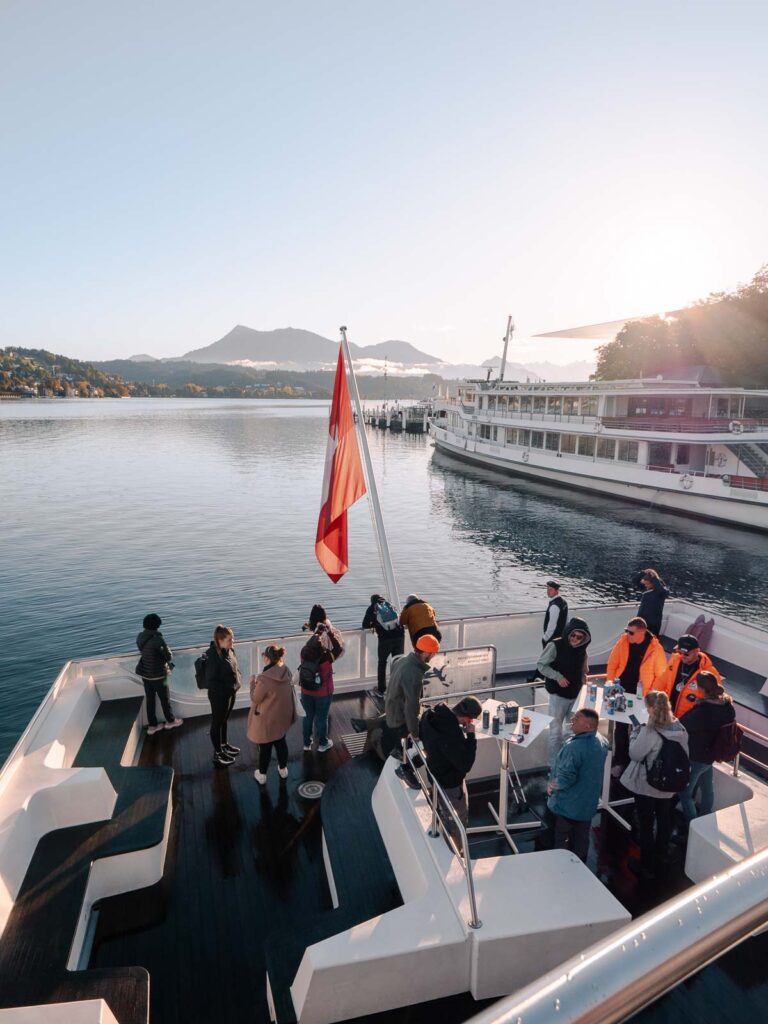
Basel, Switzerland
How to get there from Lucerne: A direct train, 1h-1h 15m
How long to stay: 1-2 days, longer if you’re a lover of galleries and museums
Who should go there: Art enthusiasts, museum lovers or anyone who enjoys a good ol’ quirky city
About Basel
Often overlooked for fancier Swiss cities, Basel packs a serious punch when it comes to art and culture. It’s home to nearly 40 museums, a wonderfully preserved old town and access to summer activities along and on the Rhine.
Come for the attractions, stay for the laidback vibe.
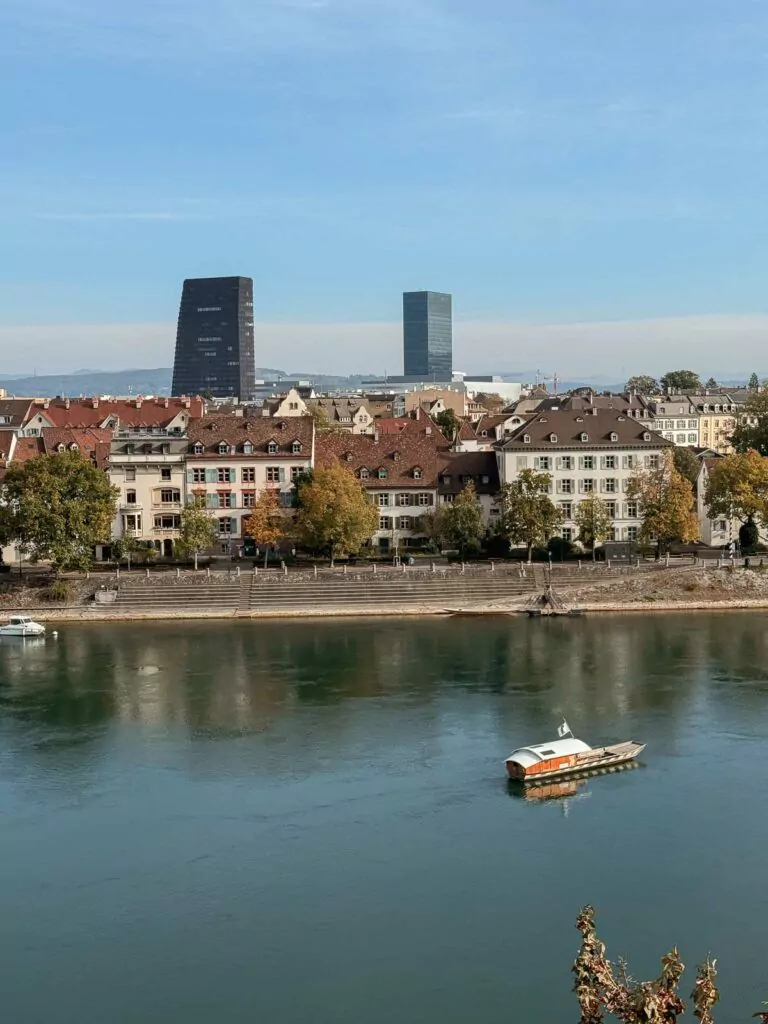
Things to do in Basel
- Get your art fix! The Kunstmuseum is the city’s jewel but there’s also Fondation Beyeler for modern art, the Fine Arts Museum and Tinguely Museum for weird and wonderful kinetic sculptures
- Admire Basel Münster and the view across the river
- Wander through the Altstadt (Old Town) or take a walking tour to learn about the city at the same time
- Take a cruise down the Rhine, or just jump in and float like the locals do!
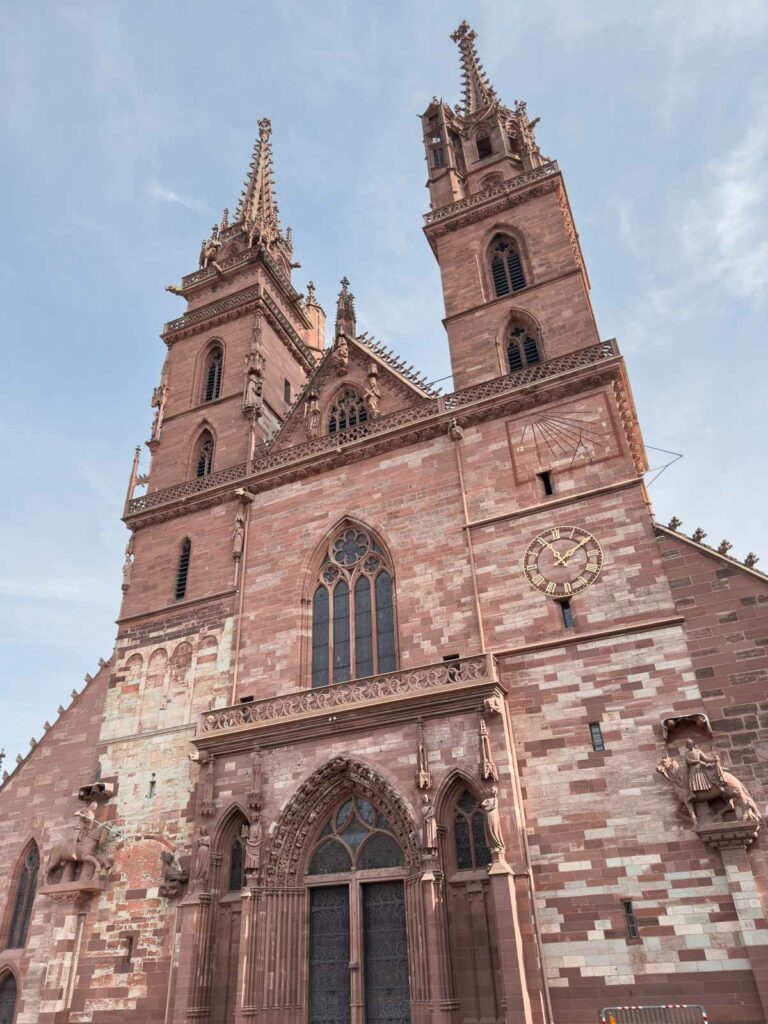
Where to stay in Basel
Budget:
- SILO Hostel is ideal for budget travellers that want a bit of comfort, it’s a design hostel located in the super sustainable neighbourhood of Erlenmatt. The hostel has spacious private rooms or stylish dorms, plenty of work-friendly space and one of the fanciest hostel breakfasts I’ve seen, with freshly baked bread, local cheeses and fancy pastries.
- Hotel by Hyve Basel (more expensive but right next to the main train station)
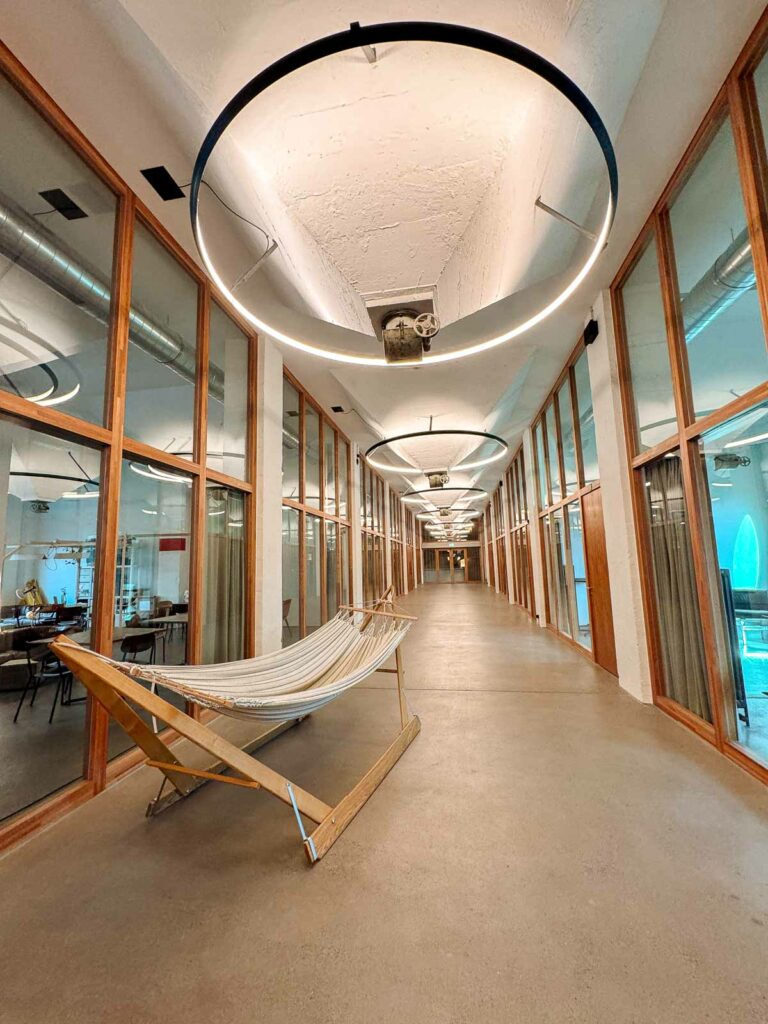
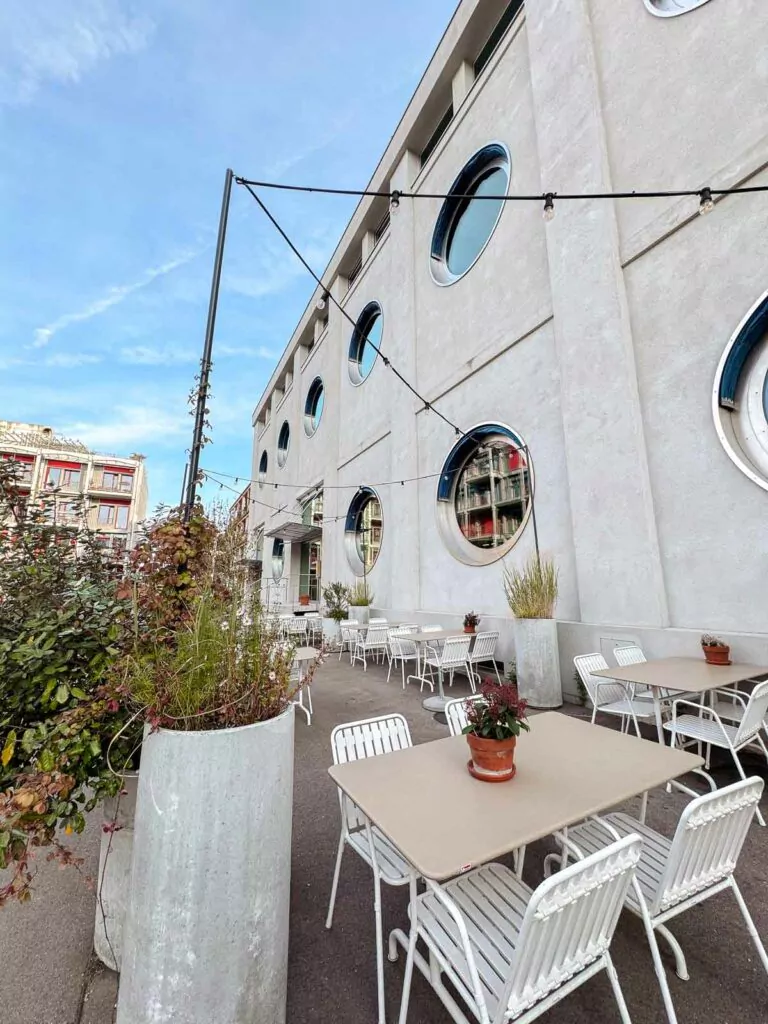
Mid-range:
- Hotel Spalentor (top-rated small hotel with comfortable rooms)
- Hotel Volkshaus (boutique design hotel with fantastic reviews)
- BALEGRA City Hotel (smart-hotel offering excellent value for money)
Luxury:
- Hotel Les Trois Rois (5* luxury hotel in the heart of the city)
Zürich, Switzerland
How to get there from Basel: 55m direct train
How long to stay: 1-2 days if you’re on a budget, 3-4 days if you have money and time
Who should go there: Anyone craving a cool city break, museum lovers, foodies that don’t mind splurging
About Zürich
The beating heart of Switzerland’s business scene, Zürich is a cosmopolitan city with a creative edge. Jump between the historic Altstadt and vibrant modern neighbourhoods, treat yourself to chocolate treats or go all out with a fine dining degustation dinner, and enjoy the benefits of a big city with nature on its doorstep.
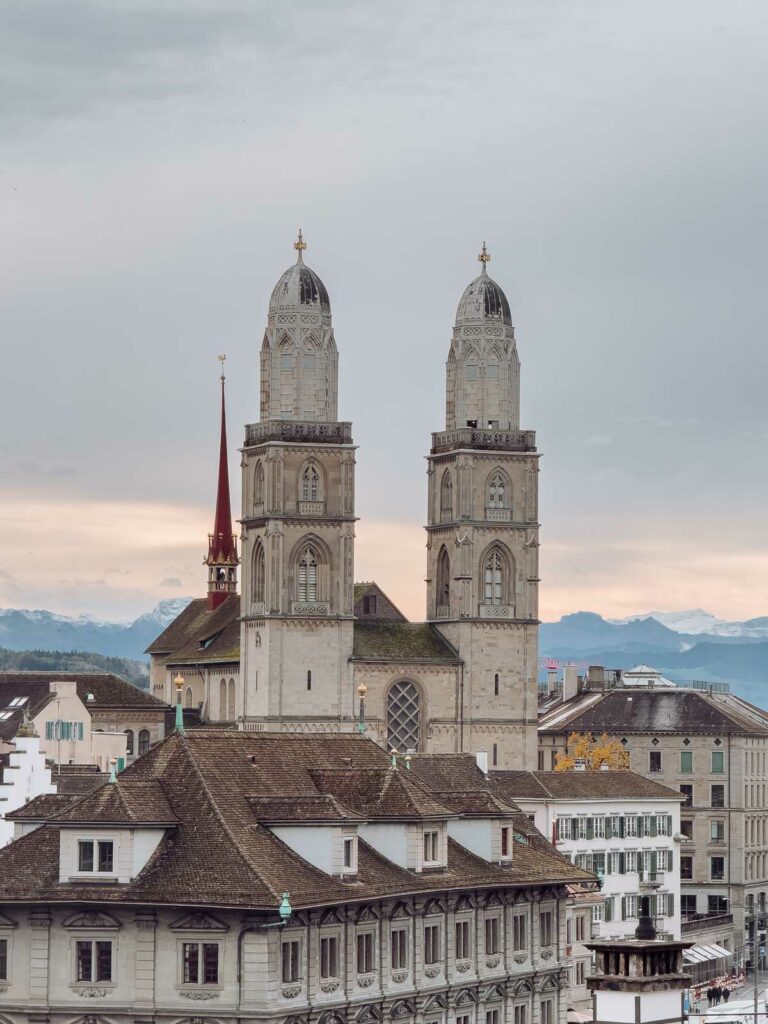
Things to do in Zürich
- Join a free walking tour of Altstadt
- Head to Lindenhof Square for a fantastic view over the river
- Taste Swiss chocolate at the world-class chocolatiers that call Zürich home, like Teuscher, Vollenweider and Sprüngli
- Take a tour of the Lindt Home of Chocolate
- Climb the tower of Grossmünster and admire the church’s stained glass windows
- Do a fondue and wine tour on an eco-friendly tuktuk
- Relax in the infinity pool at the Hürlimann Baths & Spa
- Tick off a few museums, popular ones are Kunsthaus Zürich for art, Landesmuseum for Swiss history and culture, FIFA Museum for football and Uhrenmuseum Beyer Zürich for watches and clocks (sounds weird but it’s honestly so cool)
- Indulge in some fine dining, we tried the degustation menu at Carlton and it was impeccable
- Take a day trip to St Gallen to see the famous Abbey Library
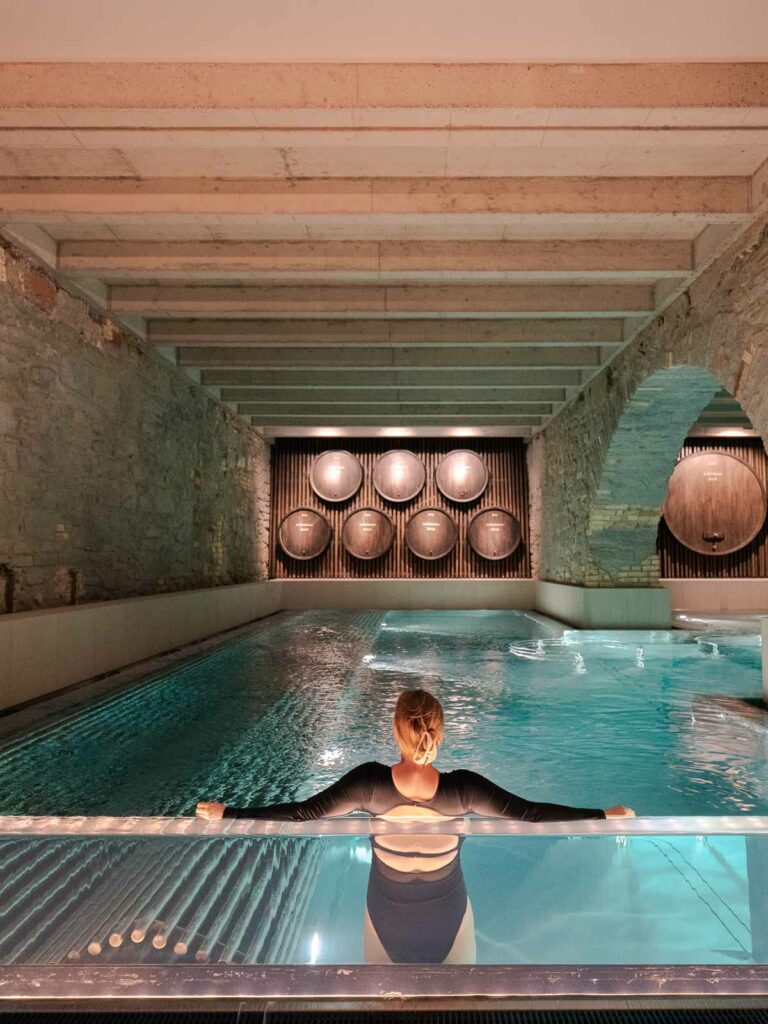
Where to stay in Zürich
Budget:
- Zurich Youth Hostel (basic backpacker hostel)
- MEININGER Hotel Greencity (simple but stylish but a bit far from the city centre)
- Capsule Hotel Zurich Airport for easy access to the airport
Mid-range:
- 25hours Hotel Langstrasse (my top personal recommendation for a mid-range stay, a funky design hotel in the vibrant Langstrasse district)
- Marktgasse Hotel (brilliant location in the Old Town)
- Hotel Adler (historic hotel with affordable single rooms for solo travellers)
Luxury:
- B2 Hotel is a bucket list stay for booklovers, this place has a two storey floor-to-ceiling library room that holds more than 30,000 books! It’s digital nomad friendly with a co-working space, delicious buffet breakfast and you get half price access to the Hürlimann Baths & Spa I mentioned above.
- Mandarin Oriental Savoy (elegant 5* luxury hotel)
- Baur au Lac (very fancy 5* with a 2 Michelin star restaurant)
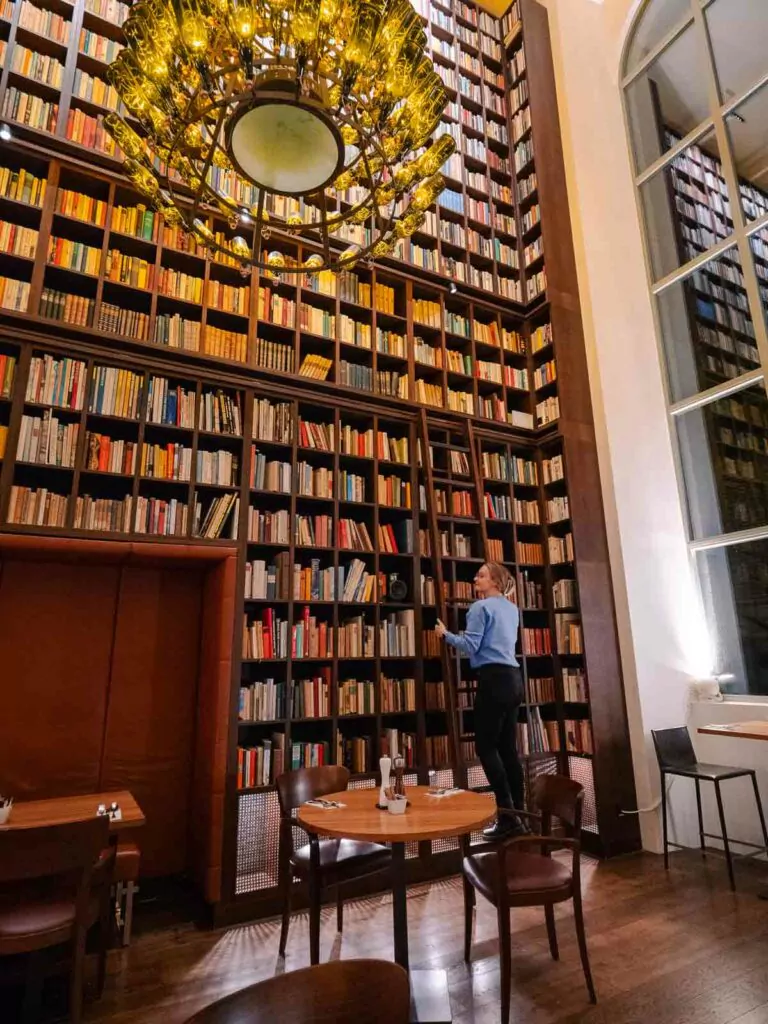
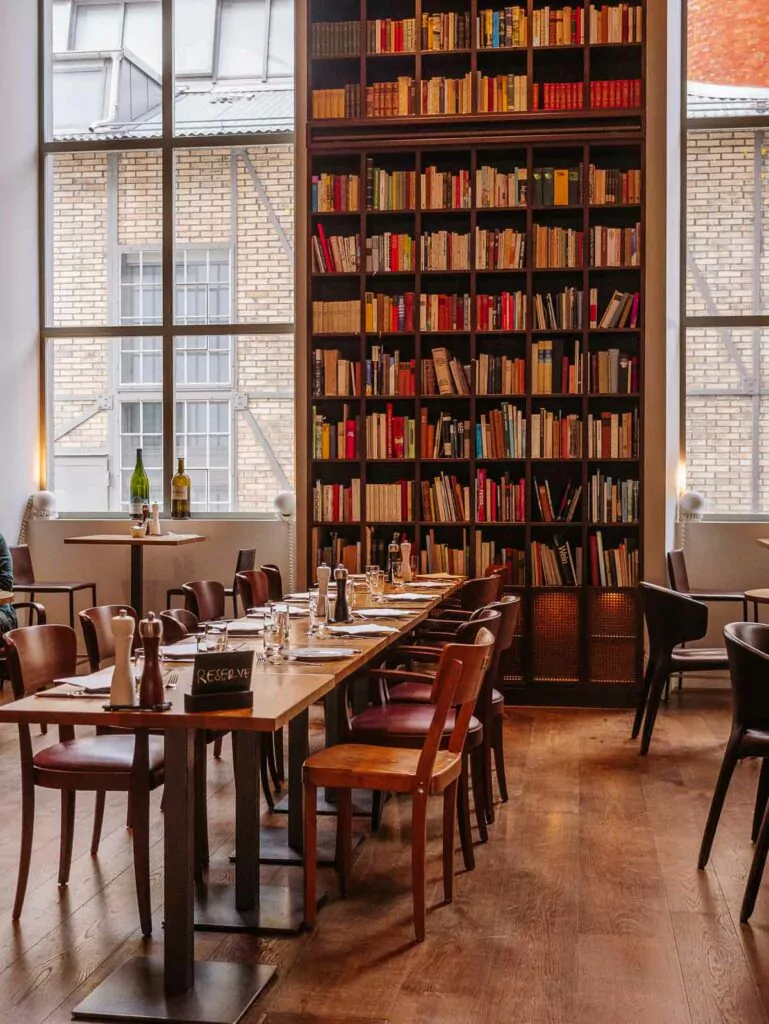
Suggested Northern Italy Switzerland itineraries for different timeframes
1 week in Northern Italy and Switzerland
To get the best experience across both countries in a fairly short timeframe, I’d recommend something like the following:
Days 1-2: Lucerne
- Fly into Zürich, immediately catch the train to Lucerne (50m)
- Explore Lucerne Old Town
- Lake cruise
- Swiss Transport Museum
- Mountain day trip to Rigi, Pilatus, Titlis or Stanserhorn
Days 3-4: Interlaken
- Lucerne to Interlaken by train (1h 50m)
- Harder Kulm funicular
- Jungfraujoch day trip incl. stop in Lauterbrunnen and/or Grindelwald
- Lake cruise
- Paragliding
Days 5-7: Northern Italy options
- Interlaken to Milan by train (3h 10m)
- Option one: Stay in Milan for a cosmopolitan city break
- Option two: Continue to Venice to tick it off your bucket list
- Option three: Continue to Bologna for a foodie experience
- Option four: Continue to Florence for art & culture
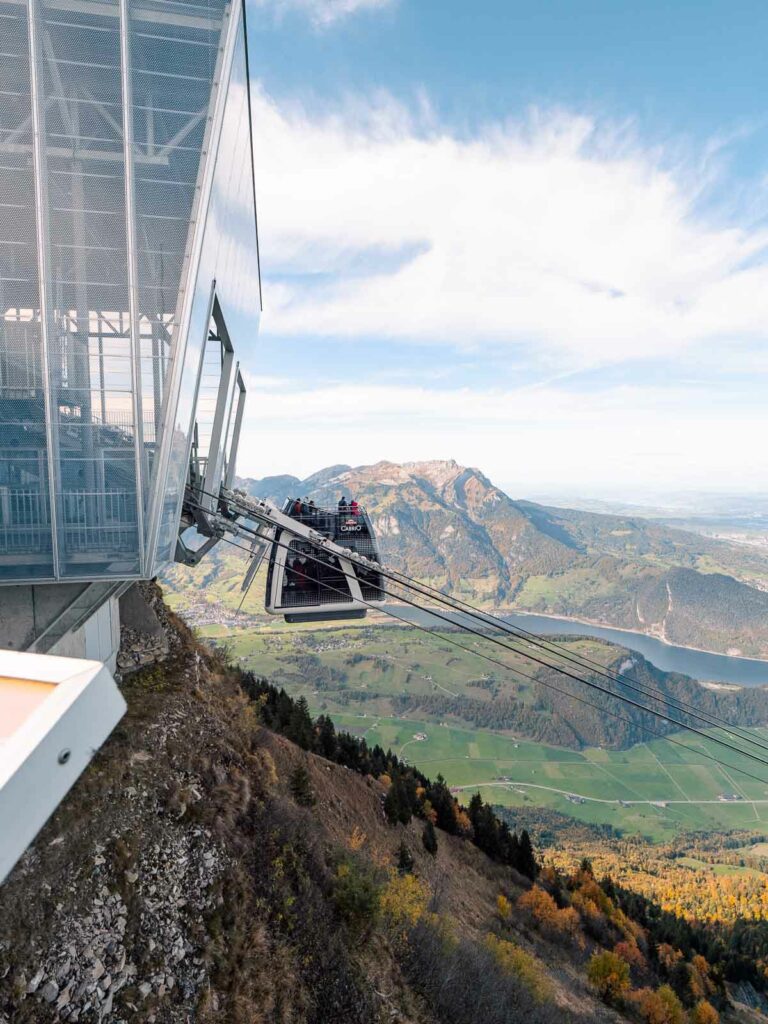
10 days in Northern Italy and Switzerland
With 10 days in Northern Italy and Switzerland I would really recommend including the Swiss panoramic trains in your itinerary. You could follow this itinerary:
Days 1-2: Zermatt
- Fly into Milan, train to Zermatt (3h 30m-4h)
- Gornergratbahn
- Matterhorn Glacier Paradise
Day 3: Glacier Express
- Full day Glacier Express train to St Moritz, stay overnight in St Moritz
Day 4: Bernina Express
- Bernina Express to Tirano (2.5h), continue on to Milan
Days 5-6: Milan
- Duomo di Milano
- QC Termemilano
- Navigli food tour
- The Last Supper at Santa Maria delle Grazie
Days 7-10: Northern Italy options
- Combine Genoa and Turin for a full on foodie experience away from the tourist crowds
- Head to Florence via Bologna for food or the Cinque Terre for sun and sea
- Stop in Verona for a day or night and then continue to Venice for 3-4 days to explore the lagoon
- Make your way to the Dolomites for 3-4 days of hiking
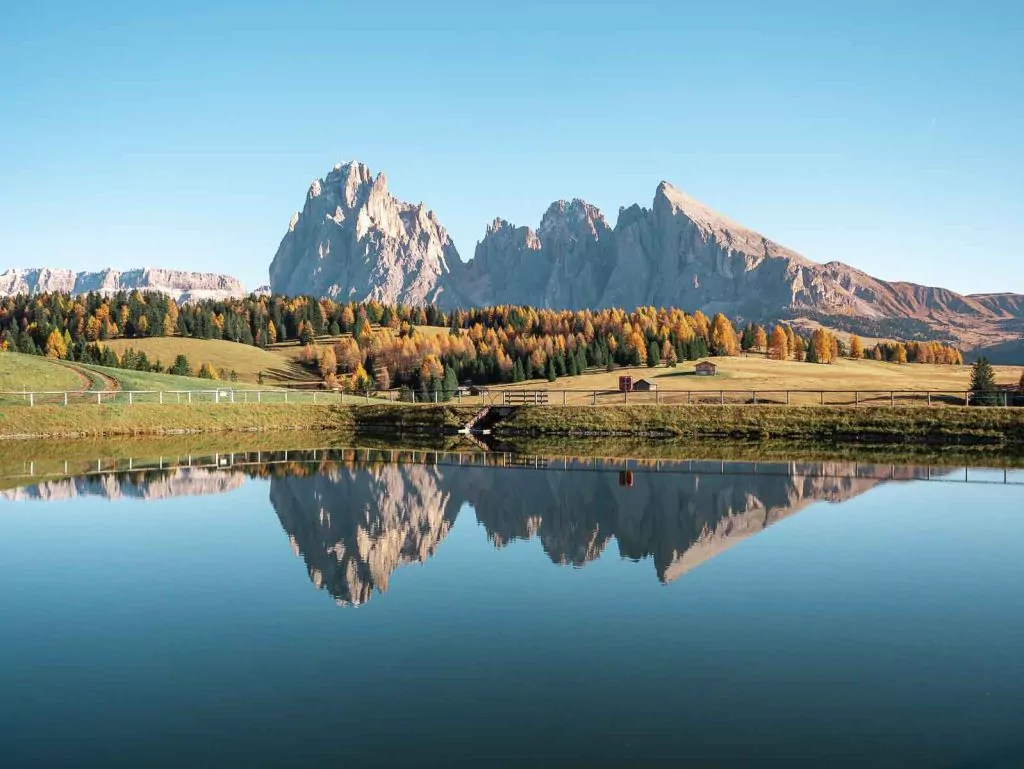
2 weeks in Northern Italy and Switzerland
Two weeks in Northern Italy and Switzerland gives you a decent chunk of time to tick off a decent chunk of the region’s of highlights:
- 2 days in Milan
- Bernina Express to St Moritz
- Glacier Express to Zermatt
- 1 day in Zermatt
- 2 days in Interlaken
- 2 days in Lucerne
- 2 days in Lake Como
- Option one: 3-4 days in Venice via Verona
- Option two: 3-4 days in the Dolomites
- Option three: 2 days in Turin, 2 days in Genoa
- Option four: 2 days in Cinque Terre, 2 days in Florence
- Option five: 1 day in Bologna, 3 days in Florence
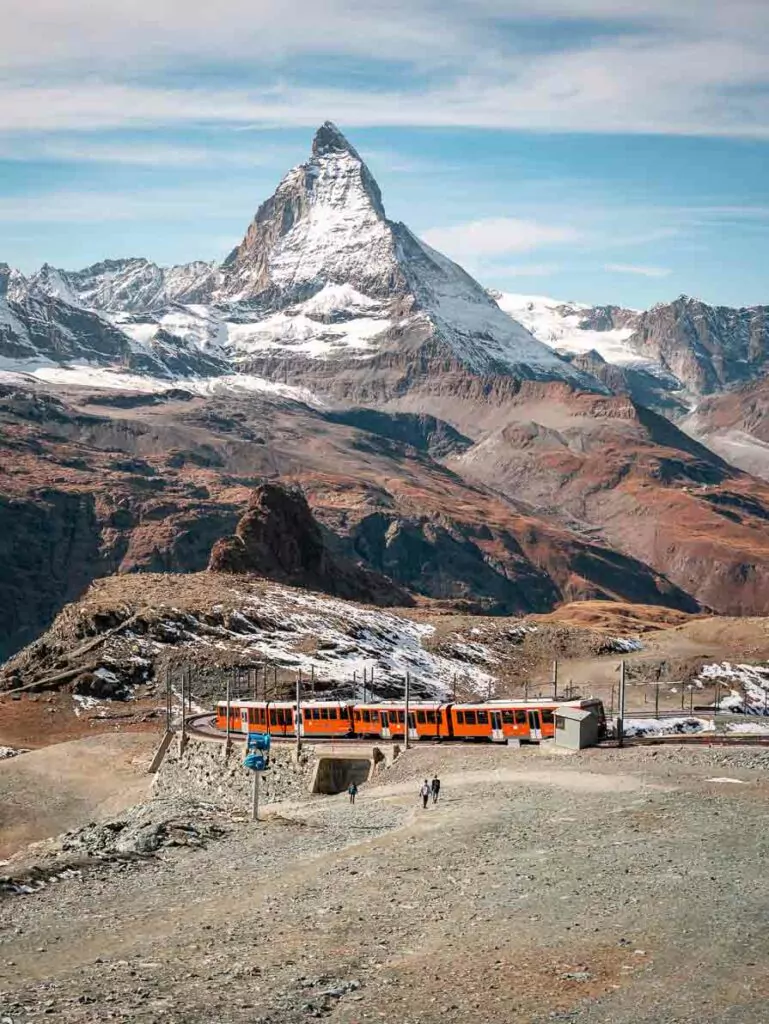
3 weeks in Northern Italy and Switzerland
With three weeks you could do one of those itineraries at a slower pace, or if you really wanted to cram loads in (and don’t mind a very quick trip!) you could do:
- 2 days in Zürich or Basel
- 2 days in Lucerne
- 2-3 days in Interlaken
- 2 days in Zermatt
- Glacier Express to St Moritz
- Bernina Express to Tirano and continue to Milan
- 2 days in Milan
- 2 days in Turin
- 2 days in Genoa
- 1 day in Cinque Terre
- 2 days in Florence
- Bologna day trip, back to Milan
- Or skip Turin/Genoa, and add either Venice or the Dolomites onto the end
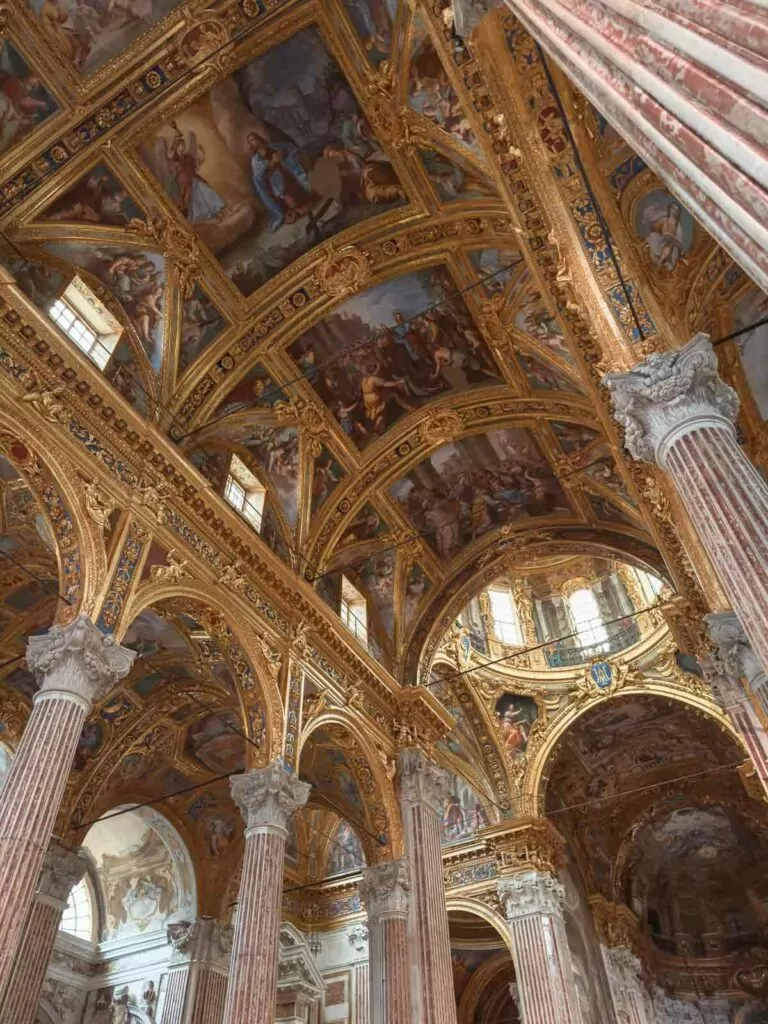
Suggested Northern Italy Switzerland itineraries for different interests
For foodies
If you’re like me and constantly make travel decisions based on cuisine, here’s the ultimate foodie itinerary for Northern Italy and Switzerland:
- Florence
- Bologna
- Genoa
- Turin
- Milan
- Zermatt
- Zürich
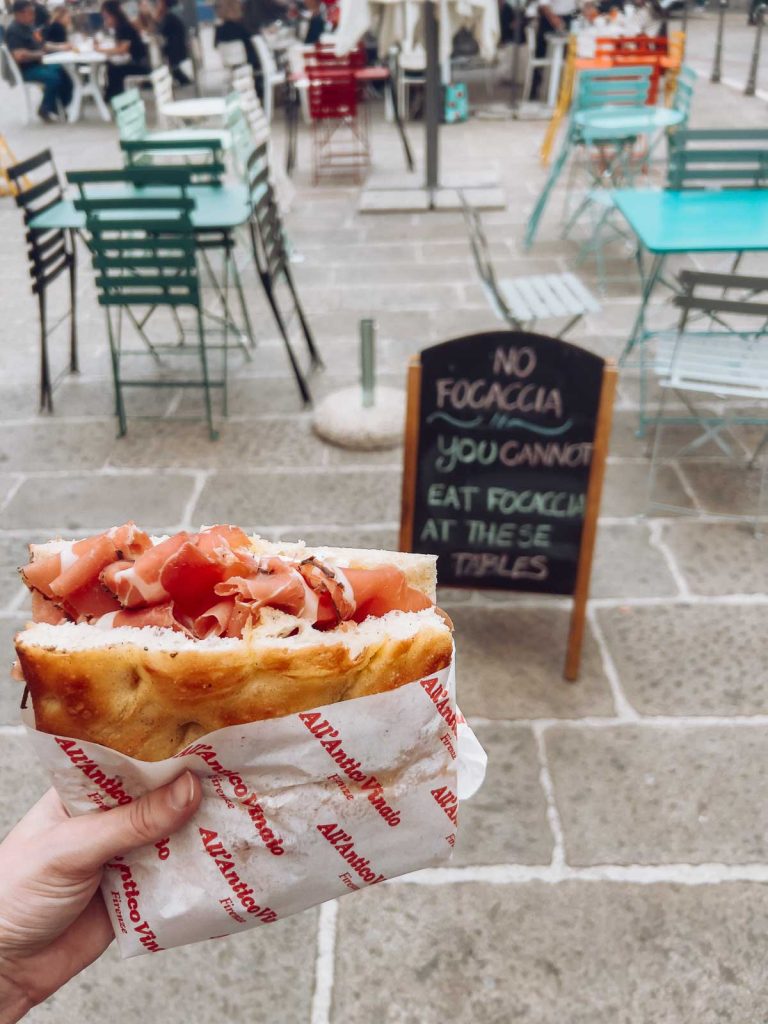
For hikers
If you travel for good views and outdoor adventures, here are some must-visits for your itinerary:
- Lucerne
- Interlaken
- Zermatt
- Glacier Express to St Moritz
- Bernina Express to Tirano, continue to Milan for a spa session at QC Thermemilano (your body will need it!)
- Finish up in the Dolomites
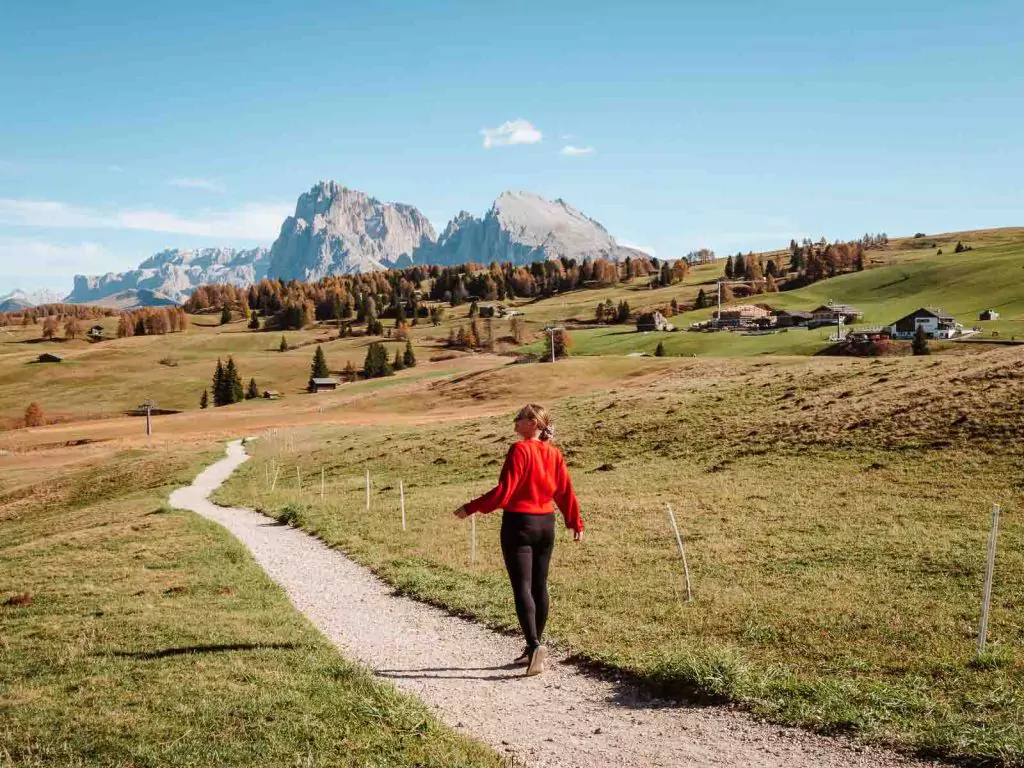
For first-timers
- Florence
- Day trip to Cinque Terre
- Venice
- Milan
- Glacier Express and/or Bernina Express
- Interlaken
- Lucerne
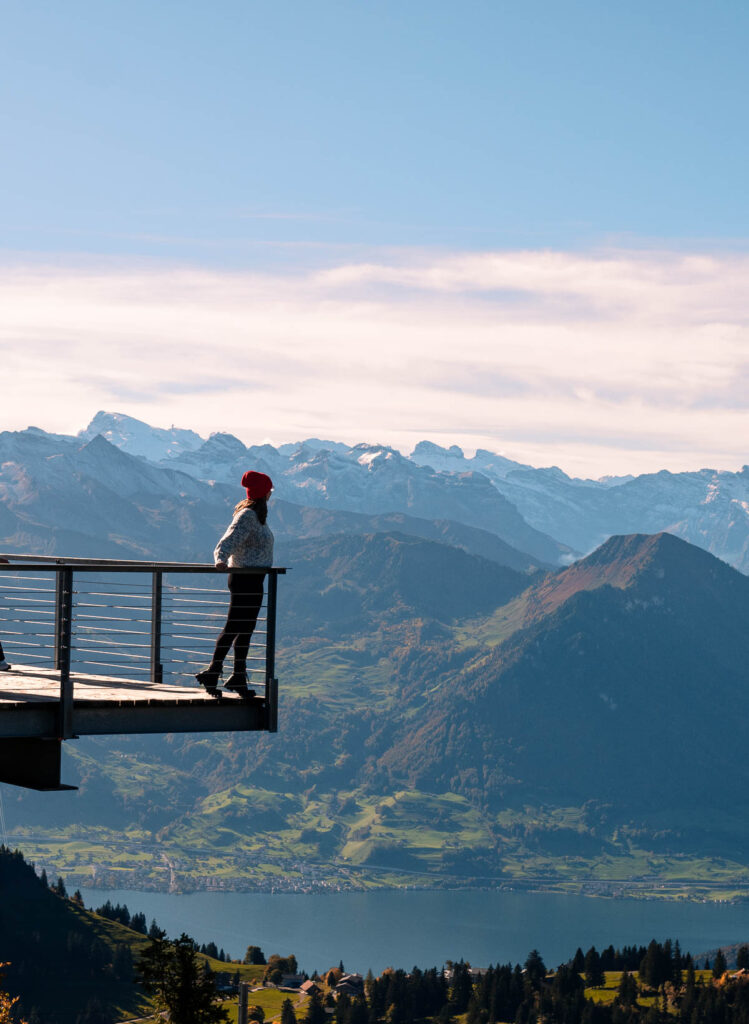
For relaxers
- Basel
- Lucerne
- St Moritz
- Lake Como
- Tuscan countryside out of Florence
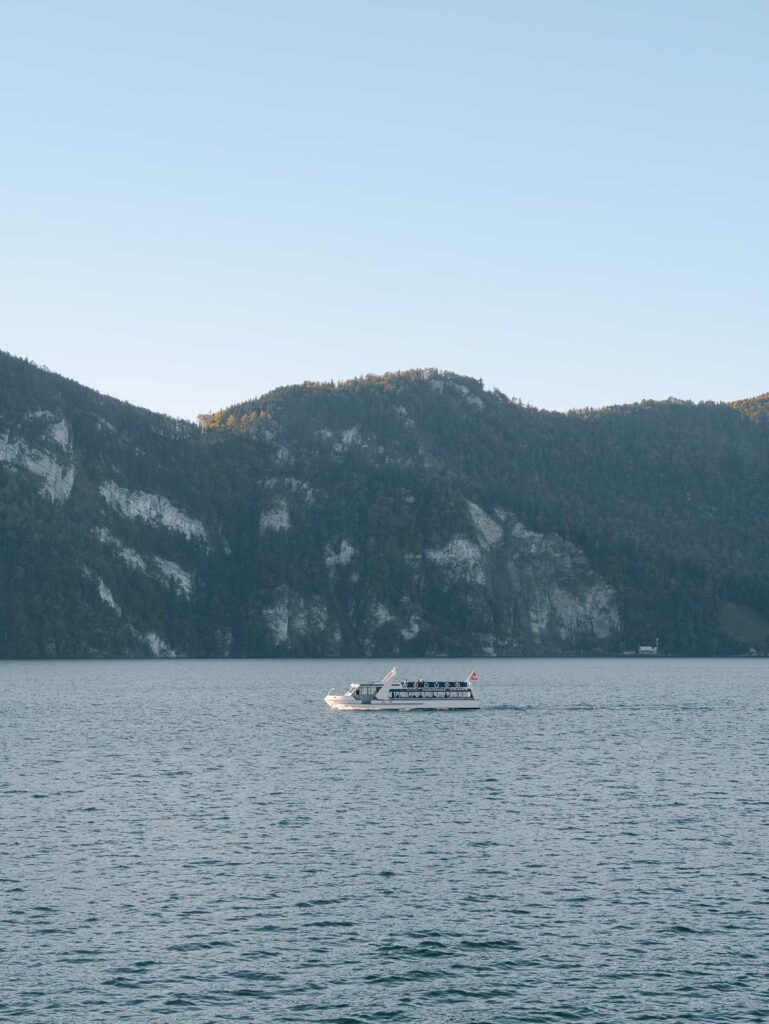
Northern Italy and Switzerland itinerary FAQs
Should I train, fly or drive in Italy and Switzerland?
I would highly recommend using the train network to get around this part of Europe.
Are Northern Italy and Switzerland safe for solo female travellers?
Switzerland is super safe for solo female travellers, crime rates are really low and I was never concerned for my safety.
The cities in Northern Italy have higher petty crime rates, but act as you would in any other big city (avoid walking alone in unlit areas at night, Google neighbourhoods before booking accommodation, keep your belongings in a cross-body zipped bag).
If you’re hiking solo then there are additional precautions to take, make sure you’re prepared for weather to change, know your limits, and let someone at your hotel, hostel or the local information centre know where you’re going and when you expect to be back.
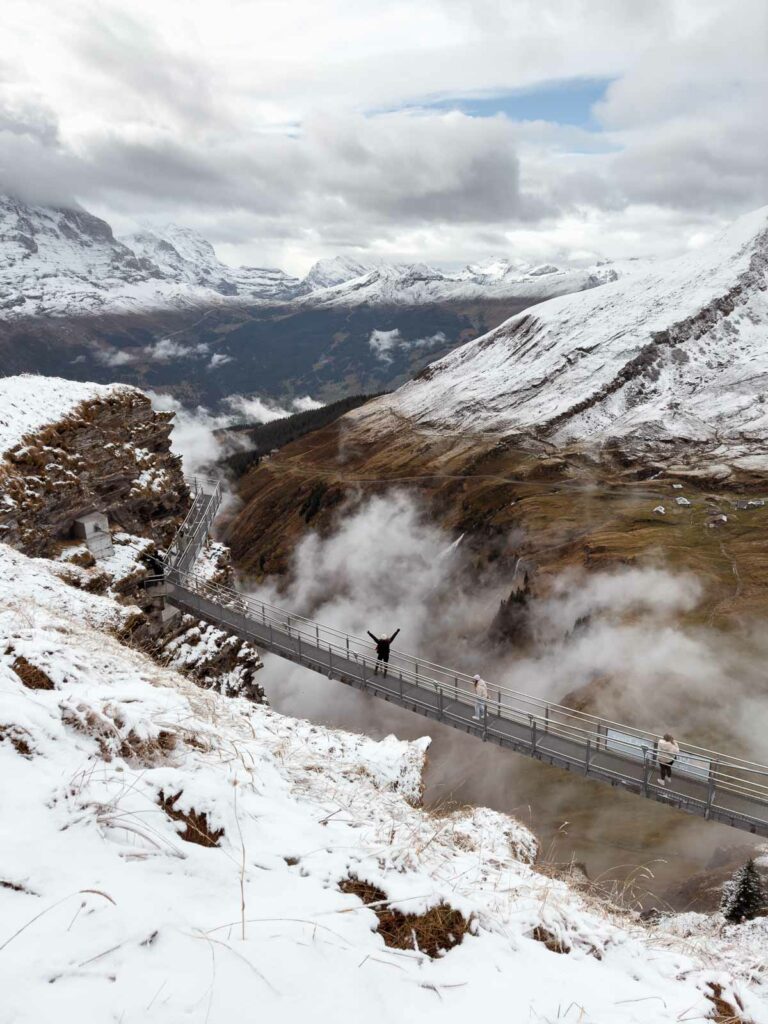
What currency do they use in Italy and Switzerland?
In Italy they use the Euro and in Switzerland they use Swiss Francs (CHF).
Do they use cash or card?
You’ll be able to use card in most places on this itinerary, I’d recommend getting something like a Wise card to avoid bank fees and shitty exchange rates.
Switzerland is actually quite a cash-heavy society but in all my visits there I’ve never touched a Swiss Franc note or coin!
The only part of the itinerary I’d recommend carrying some cash for would be the Dolomites, touristy places will take card but places like small rifugios on hiking trails or family-owned trattorias in alpine villages might only take cash.
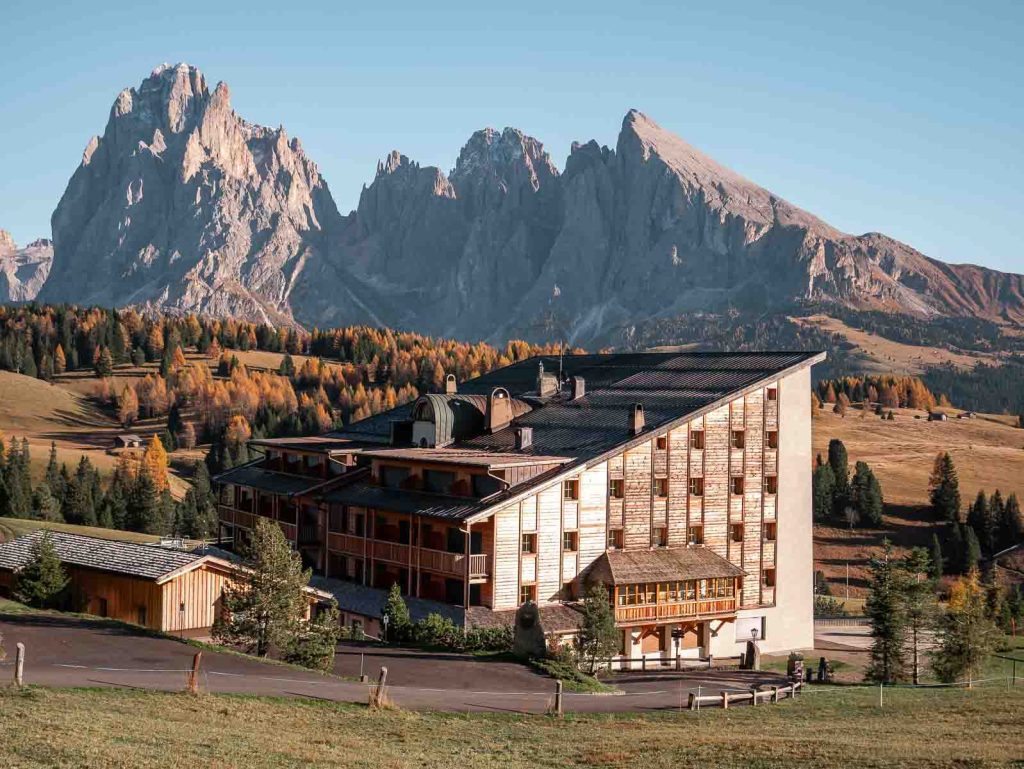
If you have any specific questions you need answered then have a look through my other Switzerland and Italy blog posts below, and if you’re still stuck then let me know in the comments and I will get back to you as soon as I can!
MORE SWITZERLAND TRAVEL INSPIRATION:
- How to spend 5 days in Switzerland
- How to spend 10 days in Switzerland
- 33 Instagrammable places in Switzerland
- Rigi vs Pilatus vs Titlis vs Stanserhorn: Which one to visit?
- See all Switzerland blog posts
MORE SWITZERLAND TRAIN GUIDES:
- Swiss Travel Pass vs Half Fare Card: Which one is best?
- The ultimate Swiss Travel Pass guide
- The ultimate Swiss Half Fare Card guide
- Is the Glacier Express worth it?
- Is the Bernina Express worth it?
- Bernina Express vs Glacier Express: Which one should you choose?
- Is the Jungfrau Travel Pass worth it?
- Is the Tell Pass worth it?
MORE ITALY TRAVEL INSPIRATION:
- The ultimate Italy bucket list
- Things to know before visiting the Dolomites
- The ultimate guide to the Dolomites without a car
- How to spend 2 days in Milan
- How to spend 24 hours in Florence
- The ultimate guide to exploring Puglia without a car
- A review of ADLER DOLOMITI wellness resort
MORE EUROPE TRAVEL INSPIRATION:
- The perfect two month Europe itinerary
- The ultimate three month Europe itinerary (build your own dream trip!)
- A Europe Christmas market itinerary by train
- How to spend 3 weeks in Scandinavia by train
- How to spend 2 weeks in Poland by train
- How to spend 2 weeks in the Balkans by bus
- The most beautiful train rides in Europe
- 27 Europe holiday ideas to inspire you
- How to use a Eurail Pass
- Is a Eurail Pass worth it?
- The ultimate Italy bucket list
- See all Europe blog posts
MY GO-TO TRAVEL PLANNING RESOURCES
Flights ✈️ I use Skyscanner to find the best flights for my trip and then I’ll always book direct with the airline to protect myself from having to deal with dodgy third parties if anything goes wrong.
Trains 🚂 If I’m travelling through Europe, I try to travel by train wherever possible! For an extended trip (2+ weeks) I’ll calculate if a Eurail Pass is worth it, or I’ll book point-to-point tickets through RailEurope or the local train operator.
Accommodation 🛎️ I book almost all of my accommodation through booking.com, they have a user-friendly website + app and many of their options are free cancellation, easily cancelled with a simple click of a button.
Activities 🗽I use GetYourGuide, Klook and Viator to look for activities in the places I visit, or I just Google ‘things to do in [city]’! P.S. If you book anything on Klook you can use the promocode FINDINGALEXXKLOOK to get 10% off
Travel cards 💳 I’m a Wise gal through and through, they’ve been my chosen travel card for more than five years now. You can easily top up your card from your bank account or through Apple Pay, convert your money to local currency, and spend money with minimal fees and the best exchange rates around.
Travel insurance 🩺 I use Cover-More NZ travel insurance for my own trips, I have a comprehensive policy and I’ve only had good experiences with them. Cover-More also has an Australian company, but if you’re from elsewhere then two popular insurance options for global travellers are SafetyWing (cheaper policy, lower coverage) and World Nomads (more expensive but significantly better coverage).
Luggage 💼 I travel with Samsonite Cosmolite suitcases, one 75cm check in bag and a 55cm carry on bag, and I absolutely adore them and will never travel with anything else! They are SUPER lightweight (2.8kg and 1.9kg respectively) so I have much more space for my actual stuff.
Camera gear 📸 I use a iPhone 15 Pro Max for phone photos/videos, and my camera kit includes a Lumix S9 (incredible lightweight full-frame camera, a game changer for travel creators!) with a 20-60mm lens, a Lumix G9 with an 8-18mm and 12-60mm lens, a DJI Mini 3 Pro drone and a GoPro Hero 10. I do all my writing and editing on my ASUS Zenbook 14, it’s lightweight but powerful enough for photo editing and intense blogging sessions.

Hi Alexx,
I wanted your opinion on my which travel passes to combine or the best option for the below itinerary. I am planning a Switzerland and Italy trip but can’t seem to wrap my head around the best travel/train options between the Eurail pass, Swiss Travel pass, Swiss Half Fare Card, or point-to-point tickets or a combination of 2 of these. My wife will be joining me on the trip as well. Below is my itinerary that will start in Zurich and fly out of Rome. Also, if you could let me know your suggestions on modifying this trip then that would help a lot as well since I have only booked tickets so far. The goal is to stay 8 days in Switzerland and 10 days in Italy. Let me know if that is a good breakout and whether I’m trying to accomplish too much in this time period. I have some sort of an itinerary laid out for Switzerland but have not done much research on Italy yet.
Itinerary:
Aug 20 – Land in Zurich at 6:30 PM
Aug 21 – spend half day at Rhine then take train to Lucerne. Spend night in Lucerne
Aug 22 – morning – One of the 4 mountains. Evening take train to Interlaken
Aug 23 – Jungfrau or Grindelwald First
Aug 24 – Harder Kulm, Lake Thun, Lauterbrunnen
Aug 25 – take train to Zermatt, Gornergrat
Aug 26 – Matterhorn Glacier Paradise
Aug 27 – zermatt to St. Moritz Glacier Express
Aug 28 – St. Moritz to Tirano – Bernia Express, then take train to Milan or Lake Como
Aug 29 – Lake Como
Aug 30 – Milan
Aug 31 – Venice
Sep 1 – Venice
Sept 2 – Cinque Terre
Sept 3 – Cinque Terre to Pisa, Pisa to Florence
Sept 4 – Florence
Sept 5 – Rome
Sept 6 – Rome
Sept 7 – Fly out of Rome
Hey Keval, looks like a brilliant trip! I have just replied to your email with the details of my travel pass consultation service 🙂
Hi Alexx,
I have to confess that I’m still quite confused about the travel passes & am not sure which I should get.
My husband & I are celebrating our 40th wedding anniversary & plan to spend 24 days in April/May 2025 starting from Munich to Austria with 14 days (not fixed, just a number that I thot would be good as there’s so much to see) reserved for Switzerland before flying back from Munich. We don’t intend to drive at all. Can you advise which pass would be most useful for us? We are above 60 years old, healthy & fit so we are also keen to do some rides & adventures 🙂 We have not firmed up the itinerary, if you have any suggestion for us I would be most grateful too. Thank you for your time
Hey Sandy! It’s really impossible to tell you which pass is best without knowing your itinerary and what mountain excursions you want to do, because the value of the pass is entirely based on how much your trip would cost you otherwise. I have a very detailed blog post on the Swiss Travel Pass vs Half Fare Card with lots of example itinerary comparisons which should give you a good idea: https://findingalexx.com/swiss-travel-pass-vs-half-fare-card/
And I have a 10 day Switzerland itinerary that might help you with your plans too: https://findingalexx.com/10-day-switzerland-itinerary/
Hi Alexx, Love your blog and your trip looked amazing! I am attempting to plan a trip similar to your itinerary with some of the same destinations to your 3 week itinerary of Switzerland and Northern Italy. My wife and I plan to fly into Zurich and out of Milan in Sep/Oct. I would love to know your thoughts if my itinerary is way too hectic.
My plan is: Zurich x2 nights, Bern x1 night, Lucerne 2 nights, Interlaken 2 nights, Zermatt 2 nights, Glacier Express to St Moritz 1 night, Bernina Express from St Moritz- change over at Tirano and continue to Varenna (Como area) 3 nights, Milan 2 nights, Santa Margherita Ligue 1 night (day trip to Portofino), Monterosso al Mare 2 nights (Cinque Terre area), Florence 3 nights, Milan 1 night before flying out next day.
Would you reduce any days in Switzerland? Originally I had 4 nights in Florence and was going to skip Santa Margherita but Portofino looks stunning. I have skipped Venice due to the lack of time and also Rome due to the Jubilee- I hope to this another time with Southern Italy. Out of Florence I am hoping to see the main sites of the city, Pisa, and some of the country area of Tuscany. I would have also skipped Dolomites as I am hoping to rely only on trains and not hiring a vehicle. We are planning on mostly sightseeing, small hikes (nothing too adventurous) and eating good food. Appreciate your suggestions, Aaron
Hey Aaron! It’s hard to suggest what to cut out when I don’t know your travel preferences/travel style but it certainly is a busy trip, you’ll be changing accommodation 12 times which is a lot and doesn’t leave much room for downtime. Could you perhaps go from Como to Portofino in one day (switch trains in Milan) and then do three days in Milan at the end? That saves two unnecessary transport/logistical days. I’m not a huge Zurich fan and I haven’t been to Bern, I prefer Switzerland’s mountains and nature rather than the cities, but if you’re a history buff or want the Old Town experience then those make sense!
Thanks for your advice Alex. I will change Milan toward the end of the trip as you suggested and have taken out Bern. I included 2 nights in Zurich as we fly in on the first day and are considering visiting the Rhine Falls on day 2. I have read mixed comments that October is a great time to visit Switzerland but elsewhere have read that it is miserable and the Glacier Express closes. My plan would be to be in Switzerland for the first 2 weeks of October. Would you consider this a good time to visit? We are hoping to visit when there is the autumn foliage.
Autumn is my favourite time to go! Weather can be changeable for sure, but that’s always a risk in alpine destinations. I’ve been to Switzerland in October/November four times now and every trip I’ve had some beautiful sunny days. The Glacier Express closes from 12 October until 7 December 2025 so you’ll be there in time for it.
Hello, thank you for all of the information. How would you suggest doing this trip starting inZurich, making our way to Milan? We have been to Venice, so we would like to do Lake Como, Portifino, Cinque Terre and Milan.
Thank you for your suggestions.
Hi Alex, we are travelling with friends in September. Our itinerary is tentatively planned. Flying into Zurich then on to Interlaken for 3 days, then to Zermatt for 2 or 3 days. Then onto Lugano. Here is where we are stuck. What is the best way to get there from Zermatt? We will be traveling with the Swiss Travel Pass.
After Lugano we plan on taking the fastest route back to Zurich.
Any advice is greatly appreciated.
Thank you!!
You’ve got a few different options, looks like you’d need a couple of changes in Andermatt and Goeschenen for the fastest trip. If you wanted to turn the journey into a proper adventure (and had a bit of time/money to spare) then you could easily do the Glacier Express from Zermatt to Chur or St Moritz, spend a night at whichever one you choose, then the next day do the Bernina Express to Tirano and then catch the connecting Bernina Express bus to Lugano. All three journeys are included in the Swiss Travel Pass, you’d just need to pay for seat reservations.